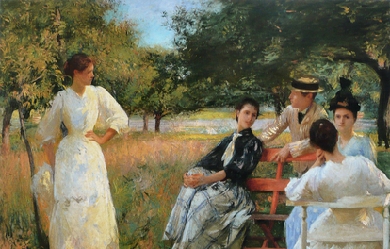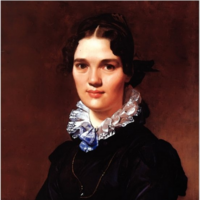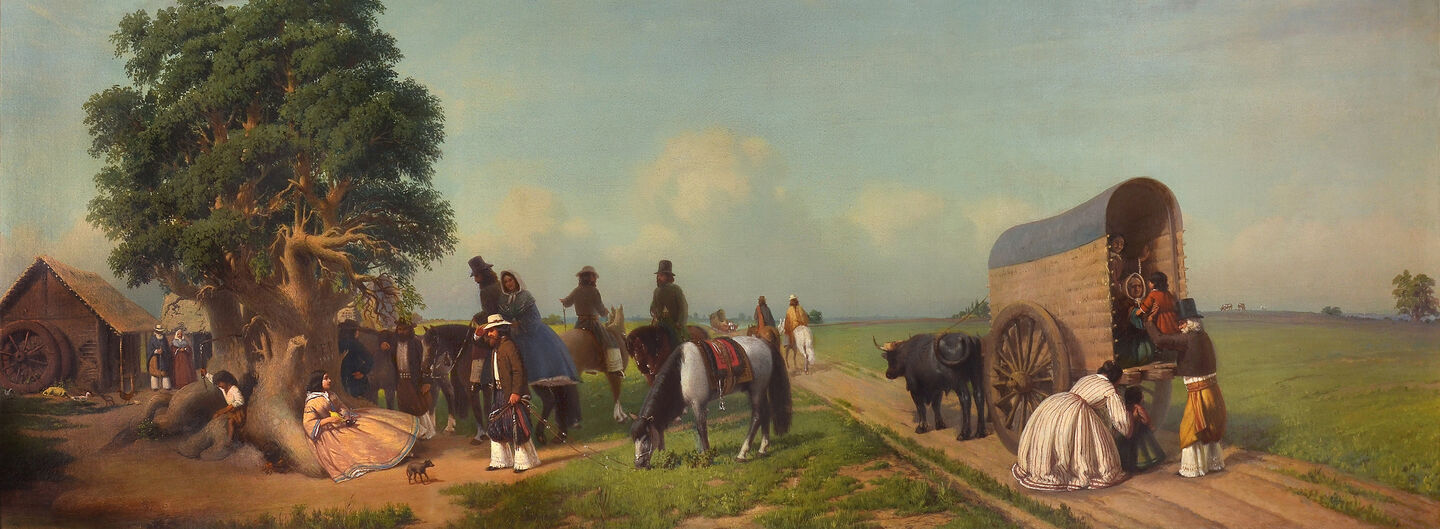
Info
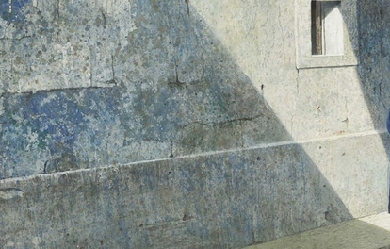
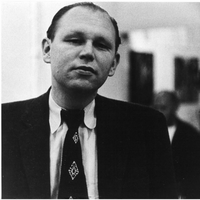
Jack Spicer (January 30, 1925– August 17, 1965) was an American poet often identified with the San Francisco Renaissance. In 2009, My Vocabulary Did This to Me: The Collected Poetry of Jack Spicer won the American Book Award for poetry. Life and work Spicer was born in Los Angeles, where he later graduated from Fairfax High School in 1942, and attended the University of Redlands from 1943-45. He spent most of his writing-life in San Francisco and spent the years 1945 to 1950 and 1952 to 1955 at the University of California, Berkeley, where he began writing, doing work as a research-linguist, and publishing some poetry (though he disdained publishing). During this time he searched out fellow poets, but it was through his alliance with Robert Duncan and Robin Blaser that Spicer forged a new kind of poetry, and together they referred to their common work as the Berkeley Renaissance. The three, who were all gay, also educated younger poets in their circle about their “queer genealogy”, Rimbaud, Lorca, and other gay writers. Spicer’s poetry of this period is collected in One Night Stand and Other Poems (1980). His Imaginary Elegies, later collected in Donald Allen’s The New American Poetry 1945-1960 anthology, were written around this time. In 1954, he co-founded the Six Gallery in San Francisco, which soon became famous as the scene of the October 1955 Six Gallery reading that launched the West Coast Beat movement. In 1955, Spicer moved to New York and then to Boston, where he worked for a time in the Rare Book Room of Boston Public Library. Blaser was also in Boston at this time, and the pair made contact with a number of local poets, including John Wieners, Stephen Jonas, and Joe Dunn. Spicer returned to San Francisco in 1956 and started working on After Lorca. This book represented a major change in direction for two reasons. Firstly, he came to the conclusion that stand-alone poems (which Spicer referred to as his one-night stands) were unsatisfactory and that henceforth he would compose serial poems. In fact, he wrote to Blaser that 'all my stuff from the past (except the Elegies and Troilus) looks foul to me.' Secondly, in writing After Lorca, he began to practice what he called “poetry as dictation”. His interest in the work of Federico García Lorca, especially as it involved the cante jondo ideal, also brought him near the poetics of the deep image group. The Troilus referred to was Spicer’s then unpublished play of that name. The play finally appeared in print in 2004, edited by Aaron Kunin, in issue 3 of No - A Journal of the Arts. In 1957, Spicer ran a workshop called Poetry as Magic at San Francisco State College, which was attended by Duncan, Helen Adam, James Broughton, Joe Dunn, Jack Gilbert, and George Stanley. He also participated in, and sometimes hosted, Blabbermouth Night at a literary bar called The Place. This was a kind of contest of improvised poetry and encouraged Spicer’s view of poetry as being dictated to the poet. After many years of alcohol abuse, Spicer fell into a prehepatic coma in his apartment building elevator, and later died aged 40 in the poverty ward of San Francisco General Hospital on August 17, 1965. Legacy Spicer’s view of the role of language in the process of writing poetry was probably the result of his knowledge of modern pre-Chomskyan linguistics and his experience as a research-linguist at Berkeley. In the legendary Vancouver lectures he elucidated his ideas on “transmissions” (dictations) from the Outside, using the comparison of the poet as crystal-set or radio receiving transmissions from outer space, or Martian transmissions. Although seemingly far-fetched, his view of language as “furniture”, through which the transmissions negotiate their way, is grounded in the structuralist linguistics of Zellig Harris and Charles Hockett. (In fact, the poems of his final book, Language, refer to linguistic concepts such as morphemes and graphemes). As such, Spicer is acknowledged as a precursor and early inspiration for the Language poets. However, many working poets today list Spicer in their succession of precedent figures. Spicer died as a result of his alcoholism. Since the posthumous publication of The Collected Books of Jack Spicer (first published in 1975), his popularity and influence has steadily risen, affecting poetry throughout the United States, Canada, and Europe. In 1994, The Tower of Babel: Jack Spicer’s Detective Novel was published. Adding to the Jack Spicer revival was the publication in 1998 of two volumes: The House That Jack Built: The Collected Lectures of Jack Spicer, edited by Peter Gizzi; and a biography: Jack Spicer and the San Francisco Renaissance by Lewis Ellingham and Kevin Killian (Hanover, NH: Wesleyan University Press, 1998). A collected works entitled My Vocabulary Did This to Me: The Collected Poetry of Jack Spicer (Peter Gizzi and Kevin Killian, editors) was published by Wesleyan University Press in November 2008, and won the American Book Award in 2009. A collection of critical essays entitled After Spicer: Critical Essays (John Emil Vincent, editor) was published by Wesleyan University Press in 2011. Further reading Blaser, Robin, editor. The Collected Books of Jack Spicer. Santa Rosa, Calif.: Black Sparrow Press, 1975 A Book Of Correspondences For Jack Spicer. Edited By David Levi Strauss and Benjamin Hollander. San Francisco: A Journal of Acts (#6), 1987; (Note: this is a collection of essays, poetry, and documents celebrating Spicer) Diaman, N. A.. Following My Heart: A Memoir. San Francisco: Persona Press, May 2007 _____. The City: A Novel. San Francisco: Persona Press, August 2007 _____. Sitting With Jack At The Poets Table. Los Angeles: The Advocate, 1984 _____. Second Crossing: A Novel. San Francisco: Persona Press, 1982 Ellingham, Lewis, and Kevin Killian. Poet, Be Like God: Jack Spicer and the San Francisco Renaissance. Middletown, Conn.: Wesleyan University Press, 1998 Foster, Edward Halsey. Jack Spicer. Boise, Idaho: Boise State University, 1991 Gizzi, Peter, editor. The House that Jack Built: The Collected Lectures of Jack Spicer. Hanover, NH: Wesleyan University Press, 1998 Spicer, Jack. Jack Spicer’s Beowulf, Part 1, edited by David Hadbawnik & Sean Reynolds, introduction by David Hadbawnik, Lost and Found: The CUNY Poetics Documents Initiative, New York, 2011 _____. Jack Spicer’s Beowulf, Part II, edited by David Hadbawnik & Sean Reynolds, afterword by Sean Reynolds, Lost and Found: The CUNY Poetics Documents Initiative, New York, 2011 Tallman, Warren. In the Midst. Vancouver: Talonbooks, 1992 Herndon, James. Everything as Expected San Francisco, 1973 Vincent, John Emil, editor. After Spicer: Critical Essays. Middletown, Conn.: Wesleyan University Press, 2011 References Wikipedia—https://en.wikipedia.org/wiki/Jack_Spicer
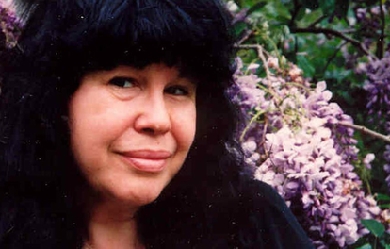
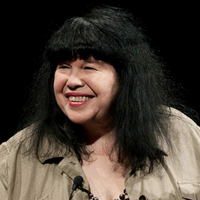
Marge Piercy (born March 31, 1936) is an American progressive activist, feminist, and writer. Her work includes Woman on the Edge of Time; He, She and It, which won the 1993 Arthur C. Clarke Award; and Gone to Soldiers, a New York Times Best Seller and a sweeping historical novel set during World War II. Piercy's work is rooted in her Jewish heritage, Communist social and political activism, and feminist ideals.
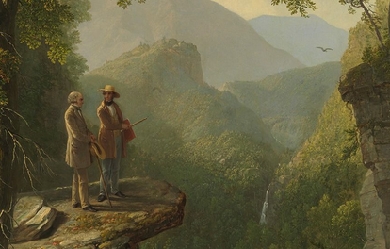
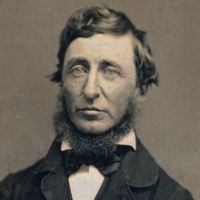
Henry David Thoreau (see name pronunciation; July 12, 1817– May 6, 1862) was an American author, poet, philosopher, abolitionist, naturalist, tax resister, development critic, surveyor, and historian. A leading transcendentalist, Thoreau is best known for his book Walden, a reflection upon simple living in natural surroundings, and his essay Resistance to Civil Government (also known as Civil Disobedience), an argument for disobedience to an unjust state. Thoreau’s books, articles, essays, journals, and poetry total over 20 volumes. Among his lasting contributions are his writings on natural history and philosophy, where he anticipated the methods and findings of ecology and environmental history, two sources of modern-day environmentalism. His literary style interweaves close natural observation, personal experience, pointed rhetoric, symbolic meanings, and historical lore, while displaying a poetic sensibility, philosophical austerity, and “Yankee” love of practical detail. He was also deeply interested in the idea of survival in the face of hostile elements, historical change, and natural decay; at the same time he advocated abandoning waste and illusion in order to discover life’s true essential needs. He was a lifelong abolitionist, delivering lectures that attacked the Fugitive Slave Law while praising the writings of Wendell Phillips and defending abolitionist John Brown. Thoreau’s philosophy of civil disobedience later influenced the political thoughts and actions of such notable figures as Leo Tolstoy, Mahatma Gandhi, and Martin Luther King, Jr. Thoreau is sometimes cited as an anarchist. Though Civil Disobedience seems to call for improving rather than abolishing government—"I ask for, not at once no government, but at once a better government"—the direction of this improvement points toward anarchism: “'That government is best which governs not at all;' and when men are prepared for it, that will be the kind of government which they will have.” Richard T. Drinnon reproaches Thoreau for his ambiguity when writing on governance, noting that Thoreau’s “sly satire, his liking for wide margins for his writing, and his fondness for paradox provided ammunition for widely divergent interpretations of 'Civil Disobedience’.” Name pronunciation and physical appearance Amos Bronson Alcott and Thoreau’s aunt each wrote that “Thoreau” is pronounced like the word “thorough” (pronounced THUR-oh—/ˈθʌroʊ/—in General American, but more precisely THOR-oh—/ˈθɔːroʊ/—in 19th-century New England). Edward Waldo Emerson wrote that the name should be pronounced “Thó-row”, with the h sounded and stress on the first syllable. Among modern-day American speakers, it is perhaps more commonly pronounced thə-ROH—/θəˈroʊ/—with stress on the second syllable. In appearance he was homely, with a nose that he called “my most prominent feature.” Of his face and disposition, Ellery Channing wrote: “His face, once seen, could not be forgotten. The features were quite marked: the nose aquiline or very Roman, like one of the portraits of Caesar (more like a beak, as was said); large overhanging brows above the deepest set blue eyes that could be seen, in certain lights, and in others gray,—eyes expressive of all shades of feeling, but never weak or near-sighted; the forehead not unusually broad or high, full of concentrated energy and purpose; the mouth with prominent lips, pursed up with meaning and thought when silent, and giving out when open with the most varied and unusual instructive sayings.” Life Early life and education, 1817–1836 Henry David Thoreau was born David Henry Thoreau in Concord, Massachusetts, into the “modest New England family” of John Thoreau (a pencil maker) and Cynthia Dunbar. His paternal grandfather was born in Jersey. His maternal grandfather, Asa Dunbar, led Harvard’s 1766 student “Butter Rebellion”, the first recorded student protest in the Colonies. David Henry was named after a recently deceased paternal uncle, David Thoreau. He did not become “Henry David” until after college, although he never petitioned to make a legal name change. He had two older siblings, Helen and John Jr., and a younger sister, Sophia. Thoreau’s birthplace still exists on Virginia Road in Concord. The house has recently been restored by the Thoreau Farm Trust, a nonprofit organization, and is now open to the public. He studied at Harvard College between 1833 and 1837. He lived in Hollis Hall and took courses in rhetoric, classics, philosophy, mathematics, and science. He was a member of the Institute of 1770 (now the Hasty Pudding Club). A legend proposes that Thoreau refused to pay the five-dollar fee for a Harvard diploma. In fact, the master’s degree he declined to purchase had no academic merit: Harvard College offered it to graduates “who proved their physical worth by being alive three years after graduating, and their saving, earning, or inheriting quality or condition by having Five Dollars to give the college.” His comment was: “Let every sheep keep its own skin”, a reference to the tradition of diplomas being written on sheepskin vellum. Return to Concord, 1836–1842 The traditional professions open to college graduates—law, the church, business, medicine—failed to interest Thoreau, so in 1835 he took a leave of absence from Harvard, during which he taught school in Canton, Massachusetts. After he graduated in 1837, he joined the faculty of the Concord public school, but resigned after a few weeks rather than administer corporal punishment. He and his brother John then opened a grammar school in Concord in 1838 called Concord Academy. They introduced several progressive concepts, including nature walks and visits to local shops and businesses. The school ended when John became fatally ill from tetanus in 1842 after cutting himself while shaving. He died in his brother Henry’s arms. Upon graduation Thoreau returned home to Concord, where he met Ralph Waldo Emerson through a mutual friend. Emerson took a paternal and at times patronizing interest in Thoreau, advising the young man and introducing him to a circle of local writers and thinkers, including Ellery Channing, Margaret Fuller, Bronson Alcott, Nathaniel Hawthorne and his son Julian Hawthorne, who was a boy at the time. Emerson urged Thoreau to contribute essays and poems to a quarterly periodical, The Dial, and Emerson lobbied editor Margaret Fuller to publish those writings. Thoreau’s first essay published there was Aulus Persius Flaccus, an essay on the playwright of the same name, published in The Dial in July 1840. It consisted of revised passages from his journal, which he had begun keeping at Emerson’s suggestion. The first journal entry on October 22, 1837, reads, “'What are you doing now?' he asked. ‘Do you keep a journal?’ So I make my first entry to-day.” Thoreau was a philosopher of nature and its relation to the human condition. In his early years he followed Transcendentalism, a loose and eclectic idealist philosophy advocated by Emerson, Fuller, and Alcott. They held that an ideal spiritual state transcends, or goes beyond, the physical and empirical, and that one achieves that insight via personal intuition rather than religious doctrine. In their view, Nature is the outward sign of inward spirit, expressing the “radical correspondence of visible things and human thoughts”, as Emerson wrote in Nature (1836). On April 18, 1841, Thoreau moved into the Emerson house. There, from 1841–1844, he served as the children’s tutor, editorial assistant, and repair man/gardener. For a few months in 1843, he moved to the home of William Emerson on Staten Island, and tutored the family sons while seeking contacts among literary men and journalists in the city who might help publish his writings, including his future literary representative Horace Greeley. Thoreau returned to Concord and worked in his family’s pencil factory, which he continued to do for most of his adult life. He rediscovered the process to make a good pencil out of inferior graphite by using clay as the binder; this invention improved upon graphite found in New Hampshire and bought in 1821 by relative Charles Dunbar. (The process of mixing graphite and clay, known as the Conté process, was patented by Nicolas-Jacques Conté in 1795). His other source had been Tantiusques, an Indian operated mine in Sturbridge, Massachusetts. Later, Thoreau converted the factory to produce plumbago (graphite), which was used in the electrotyping process. Once back in Concord, Thoreau went through a restless period. In April 1844 he and his friend Edward Hoar accidentally set a fire that consumed 300 acres (1.2 km2) of Walden Woods. Civil Disobedience and the Walden years, 1845–1849 I went to the woods because I wished to live deliberately, to front only the essential facts of life, and see if I could not learn what it had to teach, and not, when I came to die, discover that I had not lived. I did not wish to live what was not life, living is so dear; nor did I wish to practise resignation, unless it was quite necessary. I wanted to live deep and suck out all the marrow of life, to live so sturdily and Spartan-like as to put to rout all that was not life, to cut a broad swath and shave close, to drive life into a corner, and reduce it to its lowest terms, and, if it proved to be mean, why then to get the whole and genuine meanness of it, and publish its meanness to the world; or if it were sublime, to know it by experience, and be able to give a true account of it in my next excursion. Thoreau needed to concentrate and get himself working more on his writing. In March 1845, Ellery Channing told Thoreau, "Go out upon that, build yourself a hut, & there begin the grand process of devouring yourself alive. I see no other alternative, no other hope for you." Two months later, Thoreau embarked on a two-year experiment in simple living on July 4, 1845, when he moved to a small, self-built house on land owned by Emerson in a second-growth forest around the shores of Walden Pond. The house was in “a pretty pasture and woodlot” of 14 acres (57,000 m2) that Emerson had bought, 1.5 miles (2.4 km) from his family home. On July 24 or July 25, 1846, Thoreau ran into the local tax collector, Sam Staples, who asked him to pay six years of delinquent poll taxes. Thoreau refused because of his opposition to the Mexican–American War and slavery, and he spent a night in jail because of this refusal. The next day Thoreau was freed when someone, likely his aunt, paid the tax against his wishes. The experience had a strong impact on Thoreau. In January and February 1848, he delivered lectures on “The Rights and Duties of the Individual in relation to Government” explaining his tax resistance at the Concord Lyceum. Bronson Alcott attended the lecture, writing in his journal on January 26: Heard Thoreau’s lecture before the Lyceum on the relation of the individual to the State– an admirable statement of the rights of the individual to self-government, and an attentive audience. His allusions to the Mexican War, to Mr. Hoar’s expulsion from Carolina, his own imprisonment in Concord Jail for refusal to pay his tax, Mr. Hoar’s payment of mine when taken to prison for a similar refusal, were all pertinent, well considered, and reasoned. I took great pleasure in this deed of Thoreau’s. Thoreau revised the lecture into an essay entitled Resistance to Civil Government (also known as Civil Disobedience). In May 1849 it was published by Elizabeth Peabody in the Aesthetic Papers. Thoreau had taken up a version of Percy Shelley’s principle in the political poem The Mask of Anarchy (1819), that Shelley begins with the powerful images of the unjust forms of authority of his time—and then imagines the stirrings of a radically new form of social action. At Walden Pond, he completed a first draft of A Week on the Concord and Merrimack Rivers, an elegy to his brother, John, that described their 1839 trip to the White Mountains. Thoreau did not find a publisher for this book and instead printed 1,000 copies at his own expense, though fewer than 300 were sold. Thoreau self-published on the advice of Emerson, using Emerson’s own publisher, Munroe, who did little to publicize the book. In August 1846, Thoreau briefly left Walden to make a trip to Mount Katahdin in Maine, a journey later recorded in “Ktaadn”, the first part of The Maine Woods. Thoreau left Walden Pond on September 6, 1847. At Emerson’s request, he immediately moved back into the Emerson house to help Lidian manage the household while her husband was on an extended trip to Europe. Over several years, he worked to pay off his debts and also continuously revised his manuscript for what, in 1854, he would publish as Walden, or Life in the Woods, recounting the two years, two months, and two days he had spent at Walden Pond. The book compresses that time into a single calendar year, using the passage of four seasons to symbolize human development. Part memoir and part spiritual quest, Walden at first won few admirers, but later critics have regarded it as a classic American work that explores natural simplicity, harmony, and beauty as models for just social and cultural conditions. American poet Robert Frost wrote of Thoreau, “In one book... he surpasses everything we have had in America.” American author John Updike said of the book: “A century and a half after its publication, Walden has become such a totem of the back-to-nature, preservationist, anti-business, civil-disobedience mindset, and Thoreau so vivid a protester, so perfect a crank and hermit saint, that the book risks being as revered and unread as the Bible.” Thoreau moved out of Emerson’s house in July 1848 and stayed at a home on Belknap Street nearby. In 1850, he and his family moved into a home at 255 Main Street; he stayed there until his death. Later years, 1851–1862 In 1851, Thoreau became increasingly fascinated with natural history and travel/expedition narratives. He read avidly on botany and often wrote observations on this topic into his journal. He admired William Bartram, and Charles Darwin’s Voyage of the Beagle. He kept detailed observations on Concord’s nature lore, recording everything from how the fruit ripened over time to the fluctuating depths of Walden Pond and the days certain birds migrated. The point of this task was to “anticipate” the seasons of nature, in his words. He became a land surveyor and continued to write increasingly detailed natural history observations about the 26 square miles (67 km2) town in his journal, a two-million word document he kept for 24 years. He also kept a series of notebooks, and these observations became the source for Thoreau’s late natural history writings, such as Autumnal Tints, The Succession of Trees, and Wild Apples, an essay lamenting the destruction of indigenous and wild apple species. Until the 1970s, literary critics dismissed Thoreau’s late pursuits as amateur science and philosophy. With the rise of environmental history and ecocriticism, several new readings of this matter began to emerge, showing Thoreau to be both a philosopher and an analyst of ecological patterns in fields and woodlots. For instance, his late essay, “The Succession of Forest Trees”, shows that he used experimentation and analysis to explain how forests regenerate after fire or human destruction, through dispersal by seed-bearing winds or animals. He traveled to Quebec once, Cape Cod four times, and Maine three times; these landscapes inspired his “excursion” books, A Yankee in Canada, Cape Cod, and The Maine Woods, in which travel itineraries frame his thoughts about geography, history and philosophy. Other travels took him southwest to Philadelphia and New York City in 1854, and west across the Great Lakes region in 1861, visiting Niagara Falls, Detroit, Chicago, Milwaukee, St. Paul and Mackinac Island. Although provincial in his physical travels, he was extraordinarily well-read. He obsessively devoured all the first-hand travel accounts available in his day, at a time when the last unmapped regions of the earth were being explored. He read Magellan and James Cook, the arctic explorers Franklin, Mackenzie and Parry, David Livingstone and Richard Francis Burton on Africa, Lewis and Clark; and hundreds of lesser-known works by explorers and literate travelers. Astonishing amounts of global reading fed his endless curiosity about the peoples, cultures, religions and natural history of the world, and left its traces as commentaries in his voluminous journals. He processed everything he read, in the local laboratory of his Concord experience. Among his famous aphorisms is his advice to “live at home like a traveler.” After John Brown’s raid on Harpers Ferry, many prominent voices in the abolitionist movement distanced themselves from Brown, or damned him with faint praise. Thoreau was disgusted by this, and he composed a speech—A Plea for Captain John Brown—which was uncompromising in its defense of Brown and his actions. Thoreau’s speech proved persuasive: first the abolitionist movement began to accept Brown as a martyr, and by the time of the American Civil War entire armies of the North were literally singing Brown’s praises. As a contemporary biographer of John Brown put it: “If, as Alfred Kazin suggests, without John Brown there would have been no Civil War, we would add that without the Concord Transcendentalists, John Brown would have had little cultural impact.” Death Thoreau contracted tuberculosis in 1835 and suffered from it sporadically afterwards. In 1859, following a late-night excursion to count the rings of tree stumps during a rain storm, he became ill with bronchitis. His health declined over three years with brief periods of remission, until he eventually became bedridden. Recognizing the terminal nature of his disease, Thoreau spent his last years revising and editing his unpublished works, particularly The Maine Woods and Excursions, and petitioning publishers to print revised editions of A Week and Walden. He also wrote letters and journal entries until he became too weak to continue. His friends were alarmed at his diminished appearance and were fascinated by his tranquil acceptance of death. When his aunt Louisa asked him in his last weeks if he had made his peace with God, Thoreau responded: “I did not know we had ever quarreled.” Aware he was dying, Thoreau’s last words were “Now comes good sailing”, followed by two lone words, “moose” and “Indian”. He died on May 6, 1862 at age 44. Bronson Alcott planned the service and read selections from Thoreau’s works, and Channing presented a hymn. Emerson wrote the eulogy spoken at his funeral. Originally buried in the Dunbar family plot, he and members of his immediate family were eventually moved to Sleepy Hollow Cemetery (N42° 27' 53.7" W71° 20' 33") in Concord, Massachusetts. Thoreau’s friend Ellery Channing published his first biography, Thoreau the Poet-Naturalist, in 1873, and Channing and another friend Harrison Blake edited some poems, essays, and journal entries for posthumous publication in the 1890s. Thoreau’s journals, which he often mined for his published works but which remained largely unpublished at his death, were first published in 1906 and helped to build his modern reputation. A new, expanded edition of the journals is underway, published by Princeton University Press. Today, Thoreau is regarded as one of the foremost American writers, both for the modern clarity of his prose style and the prescience of his views on nature and politics. His memory is honored by the international Thoreau Society and his legacy honored by the Thoreau Institute at Walden Woods, established in 1998 in Lincoln, Massachusetts. Nature and human existence Most of the luxuries and many of the so-called comforts of life are not only not indispensable, but positive hindrances to the elevation of mankind. Thoreau was an early advocate of recreational hiking and canoeing, of conserving natural resources on private land, and of preserving wilderness as public land. He was not a strict vegetarian, though he said he preferred that diet and advocated it as a means of self-improvement. He wrote in Walden: “The practical objection to animal food in my case was its uncleanness; and besides, when I had caught and cleaned and cooked and eaten my fish, they seemed not to have fed me essentially. It was insignificant and unnecessary, and cost more than it came to. A little bread or a few potatoes would have done as well, with less trouble and filth.” Thoreau neither rejected civilization nor fully embraced wilderness. Instead he sought a middle ground, the pastoral realm that integrates both nature and culture. His philosophy required that he be a didactic arbitration between the wilderness he based so much on and the spreading mass of North American humanity. He decried the latter endlessly but felt the teachers need to be close to those who needed to hear what he wanted to tell them. The wildness he enjoyed was the nearby swamp or forest, and he preferred “partially cultivated country.” His idea of being “far in the recesses of the wilderness” of Maine was to “travel the logger’s path and the Indian trail”, but he also hiked on pristine untouched land. In the essay “Henry David Thoreau, Philosopher” Roderick Nash writes: "Thoreau left Concord in 1846 for the first of three trips to northern Maine. His expectations were high because he hoped to find genuine, primeval America. But contact with real wilderness in Maine affected him far differently than had the idea of wilderness in Concord. Instead of coming out of the woods with a deepened appreciation of the wilds, Thoreau felt a greater respect for civilization and realized the necessity of balance." On alcohol, Thoreau wrote: “I would fain keep sober always... I believe that water is the only drink for a wise man; wine is not so noble a liquor... Of all ebriosity, who does not prefer to be intoxicated by the air he breathes?” Sexuality Thoreau strove to portray himself as an ascetic puritan. However, his sexuality has long been the subject of speculation, including by his contemporaries. Critics have called him heterosexual, homosexual, or asexual. There is no evidence to suggest he had physical relations with anyone, man or woman. Some scholars suggest that homoerotic sentiments run through his writings, and conclude that he was homosexual. The elegy Sympathy was inspired by the eleven-year-old Edmund Sewell, with whom he hiked for five days in 1839. One scholar has suggested that he wrote the poem to Edmund because he could not bring himself to write it to Edmund’s sister, and another that Thoreau’s “emotional experiences with women are memorialized under a camouflage of masculine pronouns”, but other scholars dismiss this. It has argued that the long paean in Walden to the French-Canadian woodchopper Alek Therien, which includes allusions to Achilles and Patroclus, is an expression of conflicted desire. In some of Thoreau’s writing there is the sense of a secret self. In 1840 he writes in his journal: “My friend is the apology for my life. In him are the spaces which my orbit traverses”. Thoreau was strongly influenced by the moral reformers of his time, and this may have instilled anxiety and guilt over sexual desire. Politics Thoreau was fervently against slavery and actively supported the abolitionist movement. He participated in the Underground Railroad, delivered lectures that attacked the Fugitive Slave Law, and in opposition with the popular opinion of the time, supported radical abolitionist militia leader John Brown and his party. Two weeks after the ill-fated raid on Harpers Ferry and in the weeks leading up to Brown’s execution, Thoreau regularly delivered a speech to the citizens of Concord, Massachusetts in which he compared the American government to Pontius Pilate and likened Brown’s execution to the crucifixion of Jesus Christ: “Some eighteen hundred years ago Christ was crucified; this morning, perchance, Captain Brown was hung. These are the two ends of a chain which is not without its links. He is not Old Brown any longer; he is an angel of light.” In The Last Days of John Brown, Thoreau described the words and deeds of John Brown as noble and an example of heroism. In addition, he lamented the newspaper editors who dismissed Brown and his scheme as “crazy”. Thoreau was a proponent of limited government and individualism. Although he was hopeful that mankind could potentially have, through self-betterment, the kind of government which “governs not at all”, he distanced himself from contemporary “no-government men” (anarchists), writing: “I ask for, not at once no government, but at once a better government.” Thoreau deemed the evolution from absolute monarchy to limited monarchy to democracy as “a progress toward true respect for the individual” and theorized about further improvements “towards recognizing and organizing the rights of man.” Echoing this belief, he went on to write: “There will never be a really free and enlightened State until the State comes to recognize the individual as a higher and independent power, from which all its power and authority are derived, and treats him accordingly.” Although Thoreau believed resistance to unjustly exercised authority could be both violent (exemplified in his support for John Brown) and nonviolent (his own example of tax resistance displayed in Resistance to Civil Government), he regarded pacifist nonresistance as temptation to passivity, writing: “Let not our Peace be proclaimed by the rust on our swords, or our inability to draw them from their scabbards; but let her at least have so much work on her hands as to keep those swords bright and sharp.” Furthermore, in a formal lyceum debate in 1841, he debated the subject “Is it ever proper to offer forcible resistance?”, arguing the affirmative. Likewise, his condemnation of the Mexican–American War did not stem from pacifism, but rather because he considered Mexico “unjustly overrun and conquered by a foreign army” as a means to expand the slave territory. Thoreau was ambivalent towards industrialization and capitalism. On one hand he regarded commerce as “unexpectedly confident and serene, adventurous, and unwearied” and expressed admiration for its associated cosmopolitanism, writing: I am refreshed and expanded when the freight train rattles past me, and I smell the stores which go dispensing their odors all the way from Long Wharf to Lake Champlain, reminding me of foreign parts, of coral reefs, and Indian oceans, and tropical climes, and the extent of the globe. I feel more like a citizen of the world at the sight of the palm-leaf which will cover so many flaxen New England heads the next summer. On the other hand, he wrote disparagingly of the factory system: I cannot believe that our factory system is the best mode by which men may get clothing. The condition of the operatives is becoming every day more like that of the English; and it cannot be wondered at, since, as far as I have heard or observed, the principal object is, not that mankind may be well and honestly clad, but, unquestionably, that corporations may be enriched. Thoreau also favored bioregionalism, the protection of animals and wild areas, free trade, and taxation for schools and highways. He disapproved of the subjugation of Native Americans, slavery, technological utopianism, consumerism, philistinism, mass entertainment, and frivolous applications of technology. Intellectual interests, influences, and affinities Indian sacred texts and philosophy Thoreau was influenced by Indian spiritual thought. In Walden, there are many overt references to the sacred texts of India. For example, in the first chapter ("Economy"), he writes: “How much more admirable the Bhagvat-Geeta than all the ruins of the East!” American Philosophy: An Encyclopedia classes him as one of several figures who “took a more pantheist or pandeist approach by rejecting views of God as separate from the world”, also a characteristic of Hinduism. Furthermore, in “The Pond in Winter”, he equates Walden Pond with the sacred Ganges river, writing: In the morning I bathe my intellect in the stupendous and cosmogonal philosophy of the Bhagvat Geeta since whose composition years of the gods have elapsed, and in comparison with which our modern world and its literature seem puny and trivial; and I doubt if that philosophy is not to be referred to a previous state of existence, so remote is its sublimity from our conceptions. I lay down the book and go to my well for water, and lo! there I meet the servant of the Brahmin, priest of Brahmaand Vishnu and Indra, who still sits in his temple on the Ganges reading the Vedas, or dwells at the root of a tree with his crust and water jug. I meet his servant come to draw water for his master, and our buckets as it were grate together in the same well. The pure Walden water is mingled with the sacred water of the Ganges. Additionally, Thoreau followed various Hindu customs, including following a diet of rice ("It was fit that I should live on rice, mainly, who loved so well the philosophy of India."), flute playing (reminiscent of the favorite musical pastime of Krishna), and yoga. In an 1849 letter to his friend H.G.O. Blake, he wrote about yoga and its meaning to him: Free in this world as the birds in the air, disengaged from every kind of chains, those who practice yoga gather in Brahma the certain fruits of their works. Depend upon it that, rude and careless as I am, I would fain practice the yoga faithfully. The yogi, absorbed in contemplation, contributes in his degree to creation; he breathes a divine perfume, he hears wonderful things. Divine forms traverse him without tearing him, and united to the nature which is proper to him, he goes, he acts as animating original matter. To some extent, and at rare intervals, even I am a yogi. Biology Thoreau read contemporary works in the new science of biology, including the works of Alexander von Humboldt, Charles Darwin, and Asa Gray (Charles Darwin’s staunchest American ally). Thoreau was deeply influenced by Humboldt, especially his work Kosmos. In 1859, Thoreau purchased and read Darwin’s On the Origin of Species. Unlike many natural historians at the time, including Louis Agassiz who publicly opposed Darwinism in favor of a static view of nature, Thoreau was immediately enthusiastic about the theory of evolution by natural selection and endorsed it, stating: The development theory implies a greater vital force in Nature, because it is more flexible and accommodating, and equivalent to a sort of constant new creation. (A quote from On the Origin of Species follows this sentence.) Influence “Thoreau’s careful observations and devastating conclusions have rippled into time, becoming stronger as the weaknesses Thoreau noted have become more pronounced... Events that seem to be completely unrelated to his stay at Walden Pond have been influenced by it, including the national park system, the British labor movement, the creation of India, the civil rights movement, the hippie revolution, the environmental movement, and the wilderness movement. Today, Thoreau’s words are quoted with feeling by liberals, socialists, anarchists, libertarians, and conservatives alike.” Thoreau’s political writings had little impact during his lifetime, as "his contemporaries did not see him as a theorist or as a radical, viewing him instead as a naturalist. They either dismissed or ignored his political essays, including Civil Disobedience. The only two complete books (as opposed to essays) published in his lifetime, Walden and A Week on the Concord and Merrimack Rivers (1849), both dealt with nature, in which he loved to wander." His obituary was lumped in with others rather than as a separate article in an 1862 yearbook. Nevertheless, Thoreau’s writings went on to influence many public figures. Political leaders and reformers like Mohandas Gandhi, U.S. President John F. Kennedy, American civil rights activist Martin Luther King, Jr., U.S. Supreme Court Justice William O. Douglas, and Russian author Leo Tolstoy all spoke of being strongly affected by Thoreau’s work, particularly Civil Disobedience, as did "right-wing theorist Frank Chodorov [who] devoted an entire issue of his monthly, Analysis, to an appreciation of Thoreau.” Thoreau also influenced many artists and authors including Edward Abbey, Willa Cather, Marcel Proust, William Butler Yeats, Sinclair Lewis, Ernest Hemingway, Upton Sinclair, E. B. White, Lewis Mumford, Frank Lloyd Wright, Alexander Posey and Gustav Stickley. Thoreau also influenced naturalists like John Burroughs, John Muir, E. O. Wilson, Edwin Way Teale, Joseph Wood Krutch, B. F. Skinner, David Brower and Loren Eiseley, whom Publishers Weekly called “the modern Thoreau.” English writer Henry Stephens Salt wrote a biography of Thoreau in 1890, which popularized Thoreau’s ideas in Britain: George Bernard Shaw, Edward Carpenter and Robert Blatchford were among those who became Thoreau enthusiasts as a result of Salt’s advocacy. Mohandas Gandhi first read Walden in 1906 while working as a civil rights activist in Johannesburg, South Africa. He first read Civil Disobedience “while he sat in a South African prison for the crime of nonviolently protesting discrimination against the Indian population in the Transvaal. The essay galvanized Gandhi, who wrote and published a synopsis of Thoreau’s argument, calling its 'incisive logic... unanswerable’ and referring to Thoreau as 'one of the greatest and most moral men America has produced’.” He told American reporter Webb Miller, "[Thoreau’s] ideas influenced me greatly. I adopted some of them and recommended the study of Thoreau to all of my friends who were helping me in the cause of Indian Independence. Why I actually took the name of my movement from Thoreau’s essay ‘On the Duty of Civil Disobedience,’ written about 80 years ago.” Martin Luther King, Jr. noted in his autobiography that his first encounter with the idea of nonviolent resistance was reading “On Civil Disobedience” in 1944 while attending Morehouse College. He wrote in his autobiography that it was, “Here, in this courageous New Englander’s refusal to pay his taxes and his choice of jail rather than support a war that would spread slavery’s territory into Mexico, I made my first contact with the theory of nonviolent resistance. Fascinated by the idea of refusing to cooperate with an evil system, I was so deeply moved that I reread the work several times. I became convinced that noncooperation with evil is as much a moral obligation as is cooperation with good. No other person has been more eloquent and passionate in getting this idea across than Henry David Thoreau. As a result of his writings and personal witness, we are the heirs of a legacy of creative protest. The teachings of Thoreau came alive in our civil rights movement; indeed, they are more alive than ever before. Whether expressed in a sit-in at lunch counters, a freedom ride into Mississippi, a peaceful protest in Albany, Georgia, a bus boycott in Montgomery, Alabama, these are outgrowths of Thoreau’s insistence that evil must be resisted and that no moral man can patiently adjust to injustice.” American psychologist B. F. Skinner wrote that he carried a copy of Thoreau’s Walden with him in his youth. and, in 1945, wrote Walden Two, a fictional utopia about 1,000 members of a community living together inspired by the life of Thoreau. Thoreau and his fellow Transcendentalists from Concord were a major inspiration of the composer Charles Ives. The 4th movement of the Concord Sonata for piano (with a part for flute, Thoreau’s instrument) is a character picture and he also set Thoreau’s words. In the early 1960s Allan Sherman referred to Thoreau in his song parody “Here’s To Crabgrass” about the suburban housing boom of that era with the line “Come let us go there and live like Thoreau there.” Actor Ron Thompson did a dramatic portrayal of Henry David Thoreau on the 1976 NBC television series The Rebels. Thoreau’s ideas have impacted and resonated with various strains in the anarchist movement, with Emma Goldman referring to him as “the greatest American anarchist.” Green anarchism and Anarcho-primitivism in particular have both derived inspiration and ecological points-of-view from the writings of Thoreau. John Zerzan included Thoreau’s text “Excursions” (1863) in his edited compilation of works in the anarcho-primitivist tradition titled Against civilization: Readings and reflections. Additionally, Murray Rothbard, the founder of anarcho-capitalism, has opined that Thoreau was one of the “great intellectual heroes” of his movement. Thoreau was also an important influence on late-19th-century anarchist naturism. Globally, Thoreau’s concepts also held importance within individualist anarchist circles in Spain, France, and Portugal. Criticism Although his writings would receive widespread acclaim, Thoreau’s ideas were not universally applauded. Scottish author Robert Louis Stevenson judged Thoreau’s endorsement of living alone and apart from modern society in natural simplicity to be a mark of “unmanly” effeminacy and “womanish solitude”, while deeming him a self-indulgent “skulker.” Nathaniel Hawthorne was also critical of Thoreau, writing that he “repudiated all regular modes of getting a living, and seems inclined to lead a sort of Indian life among civilized men.” In a similar vein, poet John Greenleaf Whittier detested what he deemed to be the “wicked” and “heathenish” message of Walden, claiming that Thoreau wanted man to “lower himself to the level of a woodchuck and walk on four legs.” In response to such criticisms, English novelist George Eliot, writing for the Westminster Review, characterized such critics as uninspired and narrow-minded: People—very wise in their own eyes—who would have every man’s life ordered according to a particular pattern, and who are intolerant of every existence the utility of which is not palpable to them, may pooh-pooh Mr. Thoreau and this episode in his history, as unpractical and dreamy. Thoreau himself also responded to the criticism in a paragraph of his work “Walden” (1854), by illustrating the irrelevance of their inquiries: I should not obtrude my affairs so much on the notice of my readers if very particular inquiries had not been made by my townsmen concerning my mode of life, which some would call impertinent, though they do not appear to me at all impertinent, but, considering the circumstances, very natural and pertinent. Some have asked what I got to eat; if I did not feel lonesome; if I was not afraid; and the like. Others have been curious to learn what portion of my income I devoted to charitable purposes; and some, who have large families, how many poor children I maintained. [...] Unfortunately, I am confined to this theme by the narrowness of my experience. Moreover, I, on my side, require of every writer, first or last, a simple and sincere account of his own life, and not merely what he has heard of other men’s lives; [...] I trust that none will stretch the seams in putting on the coat, for it may do good service to him whom it fits. Recent criticism has accused Thoreau of hypocrisy, misanthropy and being sanctimonious, based on his writings in Walden, although this criticism has been perceived as highly selective. Works * Aulus Persius Flaccus (1840) * The Service (1840) * A Walk to Wachusett (1842) * Paradise (to be) Regained (1843) * The Landlord (1843) * Sir Walter Raleigh (1844) * Herald of Freedom (1844) * Wendell Phillips Before the Concord Lyceum (1845) * Reform and the Reformers (1846–48) * Thomas Carlyle and His Works (1847) * A Week on the Concord and Merrimack Rivers (1849) * Resistance to Civil Government, or Civil Disobedience, or On the Duty of Civil Disobedience (1849) * An Excursion to Canada (1853) * Slavery in Massachusetts (1854) * Walden (1854) A Fully Annotated Edition. Jeffrey S. Cramer, ed., Yale University Press, 2004 * A Plea for Captain John Brown (1859) * Remarks After the Hanging of John Brown (1859) * The Last Days of John Brown (1860) * Walking (1861) * Autumnal Tints (1862) * Wild Apples: The History of the Apple Tree (1862) * The Fall of the Leaf (1863) * Excursions (1863) * Life Without Principle (1863) * Night and Moonlight (1863) * The Highland Light (1864) * The Maine Woods (1864) Fully Annotated Edition. Jeffrey S. Cramer, ed., Yale University Press, 2009 * Cape Cod (1865) * Letters to Various Persons (1865) * A Yankee in Canada, with Anti-Slavery and Reform Papers (1866) * Early Spring in Massachusetts (1881) * Summer (1884) * Winter (1888) * Autumn (1892) * Miscellanies (1894) * Familiar Letters of Henry David Thoreau (1894) * Poems of Nature (1895) * Some Unpublished Letters of Henry D. and Sophia E. Thoreau (1898) * The First and Last Journeys of Thoreau (1905) * Journal of Henry David Thoreau (1906) * The Correspondence of Henry David Thoreau edited by Walter Harding and Carl Bode (Washington Square: New York University Press, 1958) * Poets of the English Language (Viking Press, 1950) * I Was Made Erect and Lone * The Bluebird Carries the Sky on His Back (Stanyan, 1970) * The Dispersion of Seeds (1993) * The Indian Notebooks (1847-1861) selections by Richard F. Fleck References Wikipedia—https://en.wikipedia.org/wiki/Henry_David_Thoreau
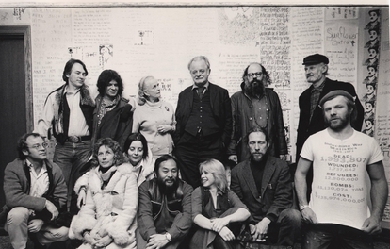
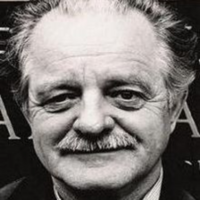
Kenneth Charles Marion Rexroth (December 22, 1905– June 6, 1982) was an American poet, translator and critical essayist. He is regarded as a central figure in the San Francisco Renaissance, and paved the groundwork for the movement. Although he did not consider himself to be a Beat poet, and disliked the association, he was dubbed the “Father of the Beats” by Time Magazine. He was among the first poets in the United States to explore traditional Japanese poetic forms such as haiku. He was also a prolific reader of Chinese literature.
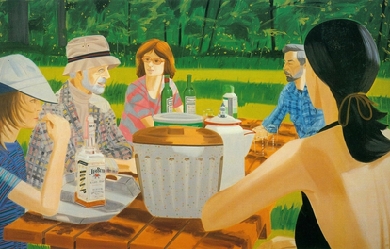
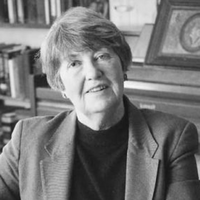
Lisel Mueller was born in Hamburg, Germany, on February 8, 1924 and immigrated to America at the age of 15. She won the U.S. National Book Award in 1981 and the Pulitzer Prize in 1997. Her poems are extremely accessible, yet intricate and layered. While at times whimsical and possessing a sly humor, there is an underlying sadness in much of her work.

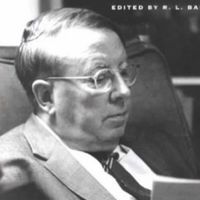
Arthur Yvor Winters (17 October 1900– 25 January 1968) was an American poet and literary critic. Life Winters was born in Chicago, Illinois and he grew up in Eagle Rock, California. He attended the University of Chicago where he was a member of a literary circle that included Glenway Wescott, Elizabeth Madox Roberts and his future wife Janet Lewis. He suffered from tuberculosis in his late teens and moved to Santa Fe, New Mexico. There he recuperated, wrote his early published verse and taught. In 1923 Winters published one of his first critical essays, “Notes on the Mechanics of the Poetic Image,” in the expatriate literary journal Secession. In 1925 he became an undergraduate at the University of Colorado. In 1926, Winters married the poet and novelist Janet Lewis, also from Chicago and a tuberculosis sufferer. After graduating he taught at the University of Idaho and then started a doctorate at Stanford University. He remained at Stanford, living in Los Altos, until two years before his death from throat cancer. His students included the poets Edgar Bowers, Thom Gunn, Donald Hall, Jim McMichael, N. Scott Momaday, Robert Pinsky, John Matthias, Moore Moran, Roger Dickinson-Brown and Robert Hass, the critic Gerald Graff, and the theater director and writer Herbert Blau. He was also a mentor to Donald Justice, J.V. Cunningham and Bunichi Kagawa. He edited the literary magazine Gyroscope with his wife from 1929 to 1931; and Hound & Horn from 1932 to 1934. He was awarded the 1961 Bollingen Prize for Poetry for his Collected Poems. As modernist Winters’s early poetry appeared in small avant-garde magazines alongside work by writers like James Joyce and Gertrude Stein and was written in the modernist idiom; it was heavily influenced both by Native American poetry and by Imagism, being described as 'arriving late at the Imagist feast’. His essay, “The Testament of a Stone,” gives an account of his poetics during this early period. Although beginning his career as an admirer and imitator of the Imagist poets, Winters by the end of the 1920s had formulated a neo-classic poetics. Around 1930, he turned away from modernism and developed an Augustan style of writing, notable for its clarity of statement and its formality of rhyme and rhythm, with most of his poetry thereafter being in the accentual-syllabic form. As critic Winters’s critical style was comparable to that of F. R. Leavis, and in the same way he created a school of students (of mixed loyalty). His affiliations and proposed canon, however, were quite different: Edith Wharton’s The Age of Innocence above any one novel by Henry James, Robert Bridges above T. S. Eliot, Charles Churchill above Alexander Pope, Fulke Greville and George Gascoigne above Sidney and Spenser. In his view, “a poem in the first place should offer us a new perception . . . bringing into being a new experience.” He attacked Romanticism, particularly in its American manifestations, and assailed Emerson’s reputation as that of a sacred cow. Ironically, his first book of poems, Diadems and Fagots, takes its title from one of Emerson’s poems. In this he was probably influenced by Irving Babbitt. Winters was sometimes and questionably associated with the New Criticism, largely because John Crowe Ransom devoted a chapter to him in his book of the same name. He bestowed the sobriquet “the cool master” on the American poet Wallace Stevens. Winters is best known for his argument attacking the “fallacy of imitative form”: “To say that a poet is justified in employing a disintegrating form in order to express a feeling of disintegration, is merely a sophistical justification for bad poetry, akin to the Whitmanian notion that one must write loose and sprawling poetry to 'express’ the loose and sprawling American continent. In fact, all feeling, if one gives oneself (that is, one’s form) up to it, is a way of disintegration; poetic form is by definition a means to arrest the disintegration and order the feeling; and in so far as any poetry tends toward the formless, it fails to be expressive of anything.” Bibliography * Diadems and Fagots (1921) poems * The Immobile Wind (1921) poems * The Magpie’s Shadow (1922) poems * Secession certain Notes on the Mechanics of the Image (1923) a magazine * The Bare Hills (1927) poems * The Proof (1930) poems * The Journey and Other Poems (1931) poems * Before Disaster (1934) poems * Primitivism and Decadence: A Study of American Experimental Poetry Arrow Editions, New York, 1937 * Maule’s Curse: Seven Studies in the History of American Obscurantism (1938) * Poems (1940) * The Giant Weapon (1943) poems * The Anatomy of Nonsense (1943) * Edwin Arlington Robinson (1946) * In Defense of Reason (1947) collects Primitivism, Maule and Anatomy * To the Holy Spirit (1947) poems * Three Poems (1950) * Collected Poems (1952, revised 1960) * The Function of Criticism: Problems and Exercises (1957) * On Modern Poets: Stevens, Eliot, Ransom, Crane, Hopkins, Frost (1959) * The Early Poems of Yvor Winters, 1920–1928 (1966) * Forms of Discovery: Critical and Historical Essays on the Forms of the Short Poem in English (1967) * Uncollected Essays and Reviews (1976) * The Collected Poems of Yvor Winters; with an introduction by Donald Davie (1978) * Uncollected Poems 1919–1928 (1997) * Uncollected Poems 1929–1957 (1997) * Yvor Winters: Selected Poems (2003) edited by Thom Gunn * As editor * Twelve Poets of the Pacific (1937) * Selected Poems, by Elizabeth Daryush (1948); with a foreword by Winters * Poets of the Pacific, Second Series (1949) * Quest for Reality: An Anthology of Short Poems in English (1969); with, and with an introduction by, Kenneth Fields References Wikipedia—https://en.wikipedia.org/wiki/Yvor_Winters
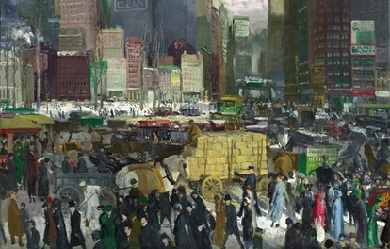
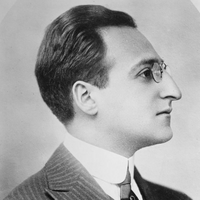
Louis Untermeyer (October 1, 1885 – December 18, 1977) was an American poet, anthologist, critic, and editor. He was appointed the fourteenth Consultant in Poetry to the Library of Congress in 1961. Untermeyer was born in New York City. He married Jean Starr in 1906. Their son Richard was born in 1907 and died under uncertain circumstances in 1927. After a 1926 divorce, they were reunited in 1929, after which they adopted two sons, Laurence and Joseph. He married the poet Virginia Moore in 1927; their son, John Moore Untermeyer (1928), was renamed John Fitzallen Moore after a painful 1929 divorce. In the 1930s, he divorced Jean Starr Untermeyer and married Esther Antin. This relationship also ended in divorce in 1945. In 1948, he married Bryna Ivens, an editor of Seventeen magazine. Untermeyer was known for his wit and his love of puns. For a while, he held Marxist beliefs, writing for magazines such as The Masses, through which he advocated that the United States stay out of World War I. After the suppression of that magazine by the U.S. government, he joined The Liberator, published by the Workers Party of America. Later he wrote for the independent socialist magazine The New Masses. He was a co-founder of "The Seven Arts," a poetry magazine that is credited for introducing many new poets, including Robert Frost, who became Untermeyer's long-term friend and correspondent. In 1950, Untermeyer was a panelist during the first year of the What's My Line? television quiz program. According to Bennett Cerf, Untermeyer would sign virtually any piece of paper that someone placed in front of him, and Untermeyer inadvertently signed a few Communist proclamations. According to Cerf, Untermeyer was not at all a communist, but he had joined several suspect societies that made him stand out. He was named during the hearings by the House Committee on Un-American Activities investigating communist subversion. The Catholic War Veterans and "right wing organizations" began hounding Mr. Untermeyer. Goodson-Todman, producer of the show, held out against the protests of Untermeyer for some time, but finally war veterans began picketing outside the New York City television studio from which What's My Line? was telecast live. The pressure became too great, and the sponsor Jules Montenier, inventor of Stopette deodorant, said, “After all, I'm paying a lot of money for this. I can't afford to have my product picketed.” At that point, the producers told Untermeyer that he had to leave the television series. The last live telecast on which he appeared was on March 11, 1951, and the mystery guest he questioned while blindfolded was Celeste Holm. The kinescope of this episode has been lost. His exit led to Bennett Cerf becoming a permanent member of the program. The controversy surrounding Untermeyer led to him being blacklisted by the television industry. According to Untermeyer's friend Arthur Miller, Untermeyer became so depressed by his forced departure from What's My Line? that he refused to leave his home in Brooklyn for more than a year, and his wife Bryna answered all incoming phone calls. It was she who eventually told Miller what had happened because Untermeyer would not pick up the phone to talk to him, even though Miller's support of blacklisted writers and radio and television personalities was well-known to Untermeyer and many others. But for more than a year, whenever Miller dialed the Untermeyers' phone number, Bryna "talked obscurely about [her husband Louis] not wanting phone conversations anymore, preferring to wait until we could all get together again," wrote Miller. Miller was a "very infrequent television watcher" in 1951, according to words he used in his 1987 autobiography, and so he did not notice that Bennett Cerf had replaced Untermeyer on the live TV game show. Miller did read New York City newspapers every day, but apparently there was no published report of Untermeyer's disappearance from television, therefore Miller was unaware that anything was wrong until Untermeyer's wife Bryna revealed what it was eventually after they had conversed by phone for more than a year. Louis Untermeyer was the author or editor of close to 100 books, from 1911 until his death. Many of them and his other memorabilia are preserved in a special section of the Lilly Library at Indiana University. Schools used his Modern American and British poetry books widely, and they often introduced college students to poetry. He and Bryna Ivens Untermeyer created a number of books for young people, under the Golden Treasury of Children's Literature. Utermeyer also rounded up contributors for a Modern Masters for Children series published by Crowell-Collier Press in the 1960s--the books were designed to have a vocabulary of 800 words and contributors included Robert Graves, Phylis McGinley, and Shirley Jackson. He lectured on literature for many years, both in the US and other countries. In 1956 the Poetry Society of America awarded Untermeyer a Gold Medal. He also served as the Consultant in Poetry to the Library of Congress from 1961 until 1963. Poetry collections * The Younger Quire (parodies), Mood Publishing, 1911. * First Love, French, 1911. * Challenge, Century, 1914. * These Times, Holt, 1917. * Including Horace, Harcourt, 1919. * The New Adam, Harcourt, 1920. * Roast Leviathan, Harcourt, 1923, reprinted, Arno, 1975. * (With son, Richard Untermeyer) Poems, privately printed, 1927. * Burning Bush, Harcourt, 1928. * Adirondack Cycle, Random House, 1929. * Food and Drink, Harcourt, 1932. * First Words before Spring, Knopf, 1933. * Selected Poems and Parodies, Harcourt, 1935. * For You with Love (juvenile), Golden Press, 1961. * Long Feud: Selected Poems, Harcourt, 1962. * One and One and One (juvenile), Crowell-Collier, 1962. * This Is Your Day (juvenile), Golden Press, 1964. * Labyrinth of Love, Simon & Schuster, 1965. * Thanks: A Poem (juvenile), Odyssey, 1965. * Thinking of You (juvenile), Golden Press, 1968. * A Friend Indeed, Golden Press, 1968. * You: A Poem, (juvenile), illustrations by Martha Alexander, Golden Press, 1969. References Wikipedia—https://en.wikipedia.org/wiki/Louis_Untermeyer

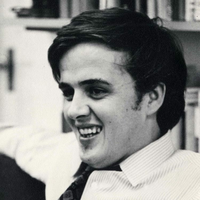
James Vincent Tate (December 8, 1943– July 8, 2015) was an American poet whose work earned him the Pulitzer Prize and the National Book Award. He was a professor of English at the University of Massachusetts Amherst and a member of the American Academy of Arts and Letters. Biography Tate was born in Kansas City, Missouri, where he lived with his mother and his grandparents in his grandparents’ house. His father, a pilot in World War II, had died in combat on April 11, 1944, before Tate was a year old. Tate and his mother moved out after seven years when she remarried. The eventual poet said he belonged to a gang in high school and had little interest in literature. He planned on being a gas station attendant as his uncle had been, but finding that his friends to his surprise were going to college, he applied to Kansas State College of Pittsburg (now Pittsburg State University) in 1961. Tate wrote his first poem a few months into college with no external motivation; he observed that poetry “became a private place that I was hugely drawn to, where I could let my daydreams—and my pain—come in completely disguised. I knew from the moment I started writing that I never wanted to be writing about my life.” In college he read Wallace Stevens and William Carlos Williams and was “in heaven”. He received his B.A. in 1965, going on to earn his M.F.A. from the University of Iowa’s famed Writer’s Workshop. During this period he was finally exposed to fellow poets and he became interested in surrealism, reading Max Jacob, Robert Desnos, and André Breton; for Benjamin Péret he expressed particular affection. Of poets writing in Spanish, César Vallejo “destroyed” him but he was not so taken by the lyricism or romanticism of Pablo Neruda or Federico García Lorca. He was married to Dara Wier. Tate died on July 8, 2015 at the age of 71. Career Tate taught creative writing at the University of California, Berkeley, Columbia University, and at the University of Massachusetts Amherst, where he worked from 1971 until his death in 2015. He was a member of the poetry faculty at the MFA Program for Poets & Writers, along with Dara Wier and Peter Gizzi. Dudley Fitts selected Tate’s first book of poems, The Lost Pilot (1967), for the Yale Series of Younger Poets while Tate was still a student at the Writers’ Workshop; Fitts praised Tate’s writing for its “natural grace.” Tate’s first volume of poetry, Cages, was published by Shepherd’s Press, Iowa City, 1966. Tate won the 1992 Pulitzer Prize and the Poetry Society of America’s William Carlos Williams Award in 1991 for his Selected Poems. In 1994, he won the National Book Award for his poetry collection Worshipful Company of Fletchers. Tate’s writing style is often described as surrealistic, comic and absurdist. His work has captivated other poets as diverse as John Ashbery and Dana Gioia. Regarding his own work, Tate said, “My characters usually are—or, I’d say most often, I don’t want to generalize too much—but most often they’re in trouble, and they’re trying to find some kind of life.” This view is supported by the poet Tony Hoagland’s observation that “his work of late has been in prose poems, in which his picaresque speaker or characters are spinning through life, inquisitive and clueless as Candide, trying to identify and get with the fiction of whatever world they are in.” In addition to many books of poetry, he published two books of prose, Dreams of a Robot Dancing Bee (2001) and The Route as Briefed (1999). Some of Tate’s additional awards included a National Institute of Arts and Letters Award, the Wallace Stevens Award, and fellowships from the Guggenheim Foundation and the National Endowment for the Arts. He was also a Chancellor of the Academy of American Poets. Published works Full-length poetry collections Dome of the Hidden Pavilion (Ecco Press, 2015) The Eternal Ones of the Dream: Selected Poems 1990-2010 (Ecco Press, 2012) The Ghost Soldiers (Ecco Press, 2008) Return to the City of White Donkeys (Ecco Press, 2004) Memoir of the Hawk (Ecco Press, 2002) Shroud of the Gnome (Ecco Press, 1997) Worshipful Company of Fletchers: Poems (Ecco Press, 1994)—winner of the National Book Award Selected Poems (Wesleyan University Press, 1991)—winner of the Pulitzer Prize and the William Carlos Williams Award Distance from Loved Ones (Wesleyan University Press, 1990) Reckoner (Wesleyan University Press, 1986) Constant Defender (Ecco Press, 1983) Riven Doggeries (Ecco Press, 1979) Viper Jazz (Wesleyan University Press, 1976) Absences: New Poems (Little, Brown & Co., 1972) Hints to Pilgrims (Halty Ferguson, 1971) The Oblivion Ha-Ha (Little, Brown & Co., 1970) The Lost Pilot (Yale University Press, 1967) Chapbooks The Zoo Club (Rain Taxi, 2011) Lost River (Sarabande Books, 2003) Police Story (Rain Taxi, 1999) Bewitched: 26 poems (Embers Handpress, Wales, illustration by Laurie Smith.) Just Shades (Parallel Editions, 1985, illustrated by John Alcorn) Land of Little Sticks (Metacom Press, 1981) Apology for Eating Geoffrey Movius’ Hyacinth (Unicorn Press, 1972) Amnesia People (Little Balkans Press, 1970) Wrong Songs (H. Ferguson, 1970) Shepherds of the Mist (Black Sparrow Press, 1969) The Torches (Unicorn Press, 1968) Prose Dreams of a Robot Dancing Bee: 44 Stories (Verse Press, 2002) The Route as Briefed (University of Michigan Press, 1999) Hottentot Ossuary (Temple Bar Bookshop, 1974) Collaborations Lucky Darryl (Release Press, 1977, a novel co-written with Bill Knott) Are You Ready, Mary Baker Eddy??? (Cloud Marauder Press, 1970, poems co-written with Bill Knott) In anthologies Tate’s work has been included in The Best American Poetry series numerous times, including in 2010, 2008, 2006, 2005, 2004, 2003, 2001, 1998, 1997, 1994, 1993, 1991, 1990, and 1988; his work was also in the The Norton Anthology of Modern and Contemporary Poetry. Honors and awards Tate was elected to the American Academy of Arts and Letters in 2004; other recognition includes: Pulitzer Prize for Poetry National Institute of Arts and Letters Award Guggenheim Fellowship National Endowment for the Arts Literature Fellowship in Poetry National Book Award for Poetry 1995 Wallace Stevens Award Yale Series of Younger Poets References Wikipedia—https://en.wikipedia.org/wiki/James_Tate_(writer)
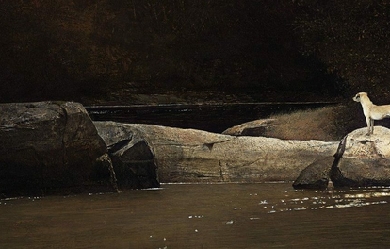
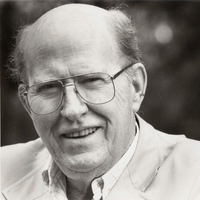
Archie Randolph Ammons (February 18, 1926– February 25, 2001) was an American poet who won the annual National Book Award for Poetry in 1973 and 1993. Preface Ammons wrote about humanity’s relationship to nature in alternately comic and solemn tones. His poetry often addresses religious and philosophical matters and scenes involving nature, almost in a Transcendental fashion. According to reviewer Daniel Hoffman, his work “is founded on an implied Emersonian division of experience into Nature and the Soul,” adding that it "sometimes consciously echo[es] familiar lines from Emerson, Whitman and [Emily] Dickinson.” Life Ammons grew up on a tobacco farm near Whiteville, North Carolina, in the southeastern part of the state. He served in the U.S. Navy during World War II, stationed on board the U.S.S. Gunason, a battleship escort. After the war, Ammons attended Wake Forest University, majoring in biology. Graduating in 1949, he served as a principal and teacher at Hattaras Elementary School later that year and also married Phyllis Plumbo. He received an M.A. in English from the University of California, Berkeley. In 1964, Ammons joined the faculty of Cornell University, eventually becoming Goldwin Smith Professor of English and Poet in Residence. He retired from Cornell in 1998. Ammons had been a longtime resident of the South Jersey communities of Northfield, Ocean City and Millville, when he wrote Corsons Inlet in 1962. Awards * During the five decades of his poetic career, Ammons was the recipient of many awards and citations. Among his major honors are the 1973 and 1993 U.S. National Book Awards (for Collected Poems, 1951-1971 and for Garbage); the Wallace Stevens Award from the Academy of American Poets (1998); and a MacArthur Fellowship in 1981, the year the award was established. A school in Miami, Florida, was named after him. * Ammons’s other awards include a 1981 National Book Critics Circle Award for A Coast of Trees; a 1993 Library of Congress Rebekah Johnson Bobbitt National Prize for Poetry for Garbage; the 1971 Bollingen Prize for Sphere; the Poetry Society of America’s Robert Frost Medal; the Ruth Lilly Prize; and fellowships from the Guggenheim Foundation and the American Academy of Arts and Letters. He was elected a Fellow of the American Academy of Arts and Sciences in 1978. Poetic style * Ammons often writes in two– or three-line stanzas. Poet David Lehman notes a resemblance between Ammons’s terza libre (unrhymed three-line stanzas) and the terza rima of Shelley’s “Ode to the West Wind.” Lines are strongly enjambed. * Some of Ammons’s poems are very short, one or two lines only, a form known as monostich (effectively, including the title, a kind of couplet), while others (for example, the book-length poems Sphere and Tape for the Turn of the Year) are hundreds of lines long, and sometimes composed on adding-machine tape or other continuous strips of paper. His National Book Award-winning volume Garbage is a long poem consisting of “a single extended sentence, divided into eighteen sections, arranged in couplets”. Ammons’s long poems tend to derive multiple strands from a single image. * Many readers and critics have noted Ammons’s idiosyncratic approach to punctuation. Lehman has written that Ammons “bears out T. S. Eliot’s observation that poetry is a 'system of punctuation’.” Instead of periods, some poems end with an ellipsis; others have no terminal punctuation at all. The colon is an Ammons “signature”; he uses it “as an all-purpose punctuation mark.” * The colon permits him to stress the linkage between clauses and to postpone closure indefinitely.... When I asked Archie about his use of colons, he said that when he started writing poetry, he couldn’t write if he thought “it was going to be important,” so he wrote "on the back of used mimeographed paper my wife brought home, and I used small [lowercase] letters and colons, which were democratic, and meant that there would be something before and after [every phrase] and the writing would be a kind of continuous stream." * According to critic Stephen Burt, in many poems Ammons combines three types of diction: * A “normal” range of language for poetry, including the standard English of educated conversation and the slightly rarer words we expect to see in literature (“vast,” “summon,” “universal”). * A demotic register, including the folk-speech of eastern North Carolina, where he grew up (“dibbles”), and broader American chatter unexpected in serious poems (“blip”). * The Greek– and Latin-derived phraseology of the natural sciences (“millimeter,” “information of actions / summarized”), especially geology, physics, and cybernetics. * Such a mixture is nearly unique, Burt says; these three modes are “almost never found together outside his poems”. Works * * Poetry * Ommateum, with Doxology. Philadelphia: Dorrance, 1955. * Expressions of Sea Level. Columbus: Ohio State UP, 1964. * Corsons Inlet. Ithaca, NY: Cornell UP, 1965. Reprinted by Norton, 1967. ISBN 0-393-04463-7 * Tape for the Turn of the Year. Ithaca, NY: Cornell UP, 1965. Reprinted by Norton, 1972. ISBN 0-393-00659-X * Northfield Poems. Ithaca, NY: Cornell UP, 1966. * Selected Poems. Ithaca, NY: Cornell UP, 1968. * Uplands. New York: Norton, 1970. ISBN 0-393-04322-3 * Briefings: Poems Small and Easy. New York: Norton, 1971. ISBN 0-393-04326-6 * Collected Poems, 1951-1971. New York: Norton, 1972. ISBN 0-393-04241-3—winner of the National Book Award * Sphere: The Form of a Motion. New York: Norton, 1974. ISBN 0-393-04388-6—winner of the Bollingen Prize for Poetry * Diversifications. New York: Norton, 1975. ISBN 0-393-04414-9 * The Selected Poems: 1951-1977. New York: Norton, 1977. ISBN 0-393-04465-3 * Highgate Road. Ithaca, NY: Cornell UP, 1977. * The Snow Poems . New York: Norton, 1977. ISBN 0-393-04467-X * Selected Longer Poems. New York: Norton, 1980. ISBN 0-393-01297-2 * A Coast of Trees. New York: Norton, 1981. ISBN 0-393-01447-9—winner of the National Book Critics Circle Award * Worldly Hopes. New York: Norton, 1982. ISBN 0-393-01518-1 * Lake Effect Country. New York: Norton, 1983. ISBN 0-393-01702-8 * The Selected Poems: Expanded Edition. New York: Norton, 1986. ISBN 0-393-02411-3 * Sumerian Vistas. New York: Norton, 1987. ISBN 0-393-02468-7 * The Really Short Poems. New York: Norton, 1991. ISBN 0-393-02870-4 * Garbage. New York: Norton, 1993. ISBN 0-393-03542-5—winner of the National Book Award * The North Carolina Poems. Alex Albright, ed. Rocky Mount, NC: NC Wesleyan College P, 1994. ISBN 0-933598-51-3 * Brink Road.New York: Norton, 1996. ISBN 0-393-03958-7 * Glare. New York: Norton, 1997. ISBN 0-393-04096-8 * Bosh and Flapdoodle: Poems. New York: Norton, 2005. ISBN 0-393-05952-9 * Selected Poems. David Lehman, ed. New York: Library of America, 2006. ISBN 1-931082-93-6 * The North Carolina Poems. New, expanded edition. Frankfort, KY: Broadstone Books, 2010. ISBN 978-0-9802117-2-6 * The Mule Poems. Fountain, NC: R. A. Fountain, 2010. ISBN 0-9842102-0-2 (chapbook) * Prose * Set in Motion: Essays, Interviews, and Dialogues (1996) * An Image for Longing: Selected Letters and Journals of A.R. Ammons, 1951-1974. Ed. Kevin McGuirk. Victoria, BC: ELS Editions, 2014. ISBN 978-1550584561 References Wikipedia—https://en.wikipedia.org/wiki/A._R._Ammons
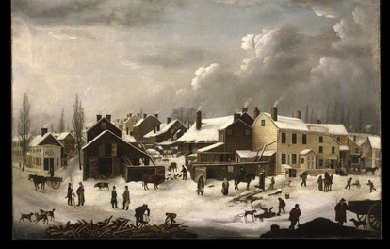
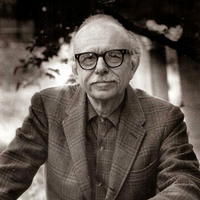
David Ignatow (February 7, 1914– November 17, 1997) was an American poet. Life David Ignatow was born in Brooklyn on February 7, 1914, and spent most of his life in the New York City area. He died on November 17, 1997, at his home in East Hampton, New York. His papers are held at University of California, San Diego. Ignatow began his professional career as a businessman. After committing wholly to poetry, Ignatow worked as an editor of American Poetry Review, Analytic, Beloit Poetry Journal, and Chelsea Magazine, and as poetry editor of The Nation. He taught at the New School for Social Research, the University of Kentucky, the University of Kansas, Vassar College, York College, City University of New York, New York University, and Columbia University. He was president of the Poetry Society of America from 1980 to 1984 and poet-in-residence at the Walt Whitman Birthplace Association in 1987. Awards * Ignatow’s many honors include a Bollingen Prize, two Guggenheim fellowships, the John Steinbeck Award, and a National Institute of Arts and Letters award “for a lifetime of creative effort.” He received the Shelley Memorial Award (1966), the Frost Medal (1992), and the William Carlos Williams Award (1997) of the Poetry Society of America. Bibliography * Living Is What I Wanted: Last Poems (BOA Editions, 1999) * At My Ease: Uncollected Poems of the Fifties and Sixties (1998) * I Have a Name (1996) * The End Game and Other Stories (1996) * Against the Evidence: Selected Poems, 1934-1994 (1994) * Despite the Plainness of the Day: Love Poems (1991) * Shadowing the Ground (1991) * New and Collected Poems, 1970-1985 (1986) * Leaving the Door Open (1984) * Whisper the Earth (1981) * Conversations (1980) * Sunlight (1979) * Tread the Dark (1978) * Selected Poems (1975) * Facing the Tree (1975) * Poems: 1934-1969 (1970) * Rescue the Dead (1968) * Earth Hard: Selected Poems (1968) * Figures of the Human (1964) * Say Pardon (1962) * The Gentle Weightlifter (1955) * Poems (1948) References Wikipedia—https://en.wikipedia.org/wiki/David_Ignatow

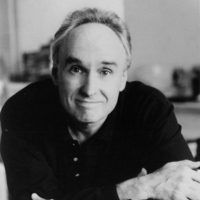
Frank Bidart (born May 27, 1939 in Bakersfield, California) is an American academic and poet, and a three time Pulitzer Prize finalist in poetry. Biography Bidart is a native of California and considered a career in acting or directing when he was young. In 1957, he began to study at the University of California at Riverside, where he was introduced to writers such as T.S. Eliot and Ezra Pound and started to look at poetry as a career path. He then went on to Harvard, where he was a student and friend of Robert Lowell and Elizabeth Bishop. He began studying with Lowell and Reuben Brower in 1962. He has been an English professor at Wellesley College since 1972, and has taught at nearby Brandeis University. He lives in Cambridge, Massachusetts, and he is gay. In his early work, he was noted for his dramatic monologue poems like “Ellen West” which Bidart wrote from the point of view of a woman with an eating disorder and “Herbert White” which he wrote from the point of view of a psychopath. He has also written openly about his family in the style of confessional poetry. He co-edited the Collected Poems of Robert Lowell which was published in 2003 after years of working on the book’s voluminous footnotes with his co-editor David Gewanter. Bidart was the 2007 winner of Yale University’s Bollingen Prize in American Poetry. His chapbook, Music Like Dirt, later included in the collection Star Dust, was a finalist for the 2003 Pulitzer Prize in poetry. His 2013 book “Metaphysical Dog” was a finalist for the National Book Award in Poetry and won the National Book Critics Circle Award. He currently maintains a strong working relationship with actor and fellow poet James Franco, with whom he collaborated during the making of Franco’s short film “Herbert White” (2010), based on Bidart’s poem of the same name. In 2017, Bidart received the Griffin Poetry Prize Lifetime Recognition Award, as well as The National Book Award for Poetry, for his "Half-light: Collected Poems 1965-2016.” Bibliography Poetry * Golden State (1973) * The Book of the Body (1977) * The Sacrifice (1983) * In the Western Night: Collected Poems 1965–90 (1990) * Desire (1997) received the Theodore Roethke Memorial Poetry Prize and the 1998 Bobbitt Prize for Poetry; finalist for the Pulitzer Prize, the National Book Award, and the National Book Critics Circle Award * Music Like Dirt (Sarabande Books, 2002), nominated for the Pulitzer Prize * Star Dust (2005), in two sections * Watching the Spring Festival (2008) * Metaphysical Dog (2013), nominated for the National Book Award in Poetry and winner of the National Book Critics Circle Award * Half-Light: Collected Poems 1965-2016 (2017), winner of the National Book Award in Poetry Other * Editor, with David Gewanter, of Robert Lowell’s Collected Poems (2003) Awards and honors * 1981 The Paris Review’s first Bernard F. Conners Prize for “The War of Vaslav Nijinsky” * 1991 Lila Wallace-Reader’s Digest Foundation Writers’ Award * 1992 Fellow of the American Academy of Arts and Sciences * 1995 Morton Dauwen Zabel Award in Poetry given by the American Academy of Arts and Letters * 1997 Shelley Memorial Award of the Poetry Society of America * 2000 Wallace Stevens Award of The Academy of American Poets; subsequently elected a Chancellor of the Academy (2003) * 2007 Bollingen Prize in American Poetry * 2013 National Book Critics Circle Award (Poetry), winner for Metaphysical Dog * 2013 National Book Award (Poetry), finalist for Metaphysical Dog * 2014 PEN/Voelcker Award for Poetry * 2017 Griffin Poetry Prize Lifetime Recognition Award * 2017 National Book Award in Poetry References Wikipedia—https://en.wikipedia.org/wiki/Frank_Bidart
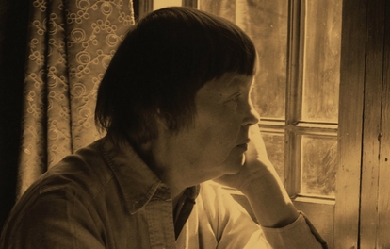
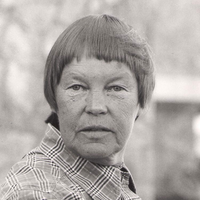
Anna Thilda May “May” Swenson (28 May 1913– 4 December 1989) was an American poet and playwright. She is considered one of the most important and original poets of the 20th century, as often hailed by the noted critic Harold Bloom. The first child of Margaret and Dan Arthur Swenson, she grew up as the eldest of ten children in a Mormon household where Swedish was spoken regularly and English was a second language. As a lesbian, she was somewhat shunned by her family for religious reasons. Much of her later poetry works were devoted to children. She also translated the work of contemporary Swedish poets, including the selected poems of Nobel laureate Tomas Tranströmer.
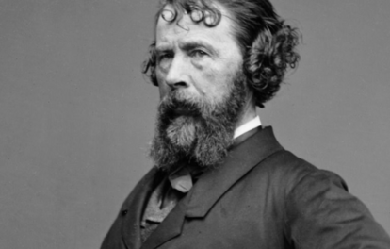
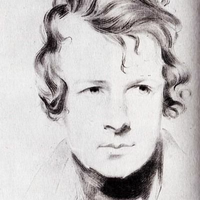
Nathaniel Parker Willis (January 20, 1806 – January 20, 1867), also known as N. P. Willis, was an American author, poet and editor who worked with several notable American writers including Edgar Allan Poe and Henry Wadsworth Longfellow. He became the highest-paid magazine writer of his day. For a time, he was the employer of former slave and future writer Harriet Jacobs. His brother was the composer Richard Storrs Willis and his sister Sara wrote under the name Fanny Fern. Born in Portland, Maine, Willis came from a family of publishers. His grandfather Nathaniel Willis owned newspapers in Massachusetts and Virginia, and his father Nathaniel Willis was the founder of Youth’s Companion, the first newspaper specifically for children. Willis developed an interest in literature while attending Yale College and began publishing poetry. After graduation, he worked as an overseas correspondent for the New York Mirror. He eventually moved to New York and began to build his literary reputation. Working with multiple publications, he was earning about $100 per article and between $5,000 and $10,000 per year. In 1846, he started his own publication, the Home Journal, which was eventually renamed Town & Country. Shortly after, Willis moved to a home on the Hudson River where he lived a semi-retired life until his death in 1867. Willis embedded his own personality into his writing and addressed his readers personally, specifically in his travel writings, so that his reputation was built in part because of his character. Critics, including his sister in her novel Ruth Hall, occasionally described him as being effeminate and Europeanized. Willis also published several poems, tales, and a play. Despite his intense popularity for a time, at his death Willis was nearly forgotten. Life and career Early life and family Nathaniel Parker Willis was born on January 20, 1806, in Portland, Maine. His father Nathaniel Willis was a newspaper proprietor there and his grandfather owned newspapers in Boston, Massachusetts and western Virginia. His mother was Hannah Willis (née Parker) from Holliston, Massachusetts and it was her husband’s offer to edit the Eastern Argus in Maine that caused their move to Portland. Willis’s younger sister was Sara Willis Parton, who would later become a writer under the pseudonym Fanny Fern. His brother, Richard Storrs Willis, became a musician and music journalist known for writing the melody for “It Came Upon the Midnight Clear”. His other siblings were Lucy Douglas (born 1804), Louisa Harris (1807), Julia Dean (1809), Mary Perry (1813), Edward Payson (1816), and Ellen Holmes (1821).In 1816, the family moved to Boston, where Willis’s father established the Boston Recorder and, nine years later, the Youth’s Companion, the world’s first newspaper for children. The elder Willis’s emphasis on religious themes earned him the nickname “Deacon” Willis. After attending a Boston grammar school and Phillips Academy at Andover, Nathaniel Parker Willis entered Yale College in October 1823 where he roomed with Horace Bushnell. Willis credited Bushnell with teaching him the proper technique for sharpening a razor by “drawing it from heel to point both ways... the two cross frictions correct each other”. At Yale, he further developed an interest in literature, often neglecting his other studies. He graduated in 1827 and spent time touring parts of the United States and Canada. In Montreal, he met Chester Harding, with whom he would become a lifelong friend. Years later, Harding referred to Willis during this period as “the 'lion’ of the town”. Willis began publishing poetry in his father’s Boston Periodical, often using one of two literary personalities under the pen names “Roy” (for religious subjects) and “Cassius” (for more secular topics). The same year, Willis published a volume of poetical Sketches. Literary career In the latter part of the 1820s, Willis began contributing more frequently to magazines and periodicals. In 1829, he served as editor for the gift book The Token, making him the only person to be editor in the book’s 15-year history besides its founder, Samuel Griswold Goodrich. That year, Willis founded the American Monthly Magazine, which began publishing in April 1829 until it was discontinued in August 1831. He blamed its failure on the “tight purses of Boston culture” and moved to Europe to serve as foreign editor and correspondent of the New York Mirror. In 1832, while in Florence, Italy, he met Horatio Greenough, who sculpted a bust of the writer. Between 1832 and 1836, Willis contributed a series of letters for the Mirror, about half of which were later collected as Pencillings by the Way, printed in London in 1835. The romantic descriptions of scenes and modes of life in Europe sold well despite the then high price tag of $7 a copy. The work became popular and boosted Willis’s literary reputation enough that an American edition was soon issued. Despite this popularity, he was censured by some critics for indiscretion in reporting private conversations. At one point he fought a bloodless duel with Captain Frederick Marryat, then editor of the Metropolitan Magazine, after Willis sent a private letter of Marryat’s to George Pope Morris, who had it printed. Still, in 1835 Willis was popular enough to introduce Henry Wadsworth Longfellow to important literary figures in England, including Ada Byron, daughter of Lord Byron.While abroad, Willis wrote to a friend, “I should like to marry in England”. He soon married Mary Stace, daughter of General William Stace of Woolwich, on October 1, 1835, after a month-long engagement. The couple took a two-week honeymoon in Paris. The couple moved to London where, in 1836, Willis met Charles Dickens, who was working for the Morning Chronicle at the time.In 1837, Willis and his wife returned to the United States and settled at a small estate on Owego Creek in New York, just above its junction with the Susquehanna River. He named the home Glenmary and the 200-acre (0.81 km2) rural setting inspired him to write Letters from under a Bridge. On October 20, 1838, Willis began a series of articles called “A New Series of Letters from London”, one of which suggested an illicit relationship between writer Letitia Elizabeth Landon and editor William Jordan. The article caused some scandal, for which Willis’s publisher had to apologize.On June 20, 1839, Willis’s play Tortesa, the Usurer premiered in Philadelphia at the Walnut Street Theatre. Edgar Allan Poe called it “by far the best play from the pen of an American author”. That year, he was also editor of the short-lived periodical The Corsair, for which he enlisted William Makepeace Thackery to write short sketches of France. Another major work, Two Ways of Dying for a Husband, was published in England during a short visit there in 1839–1840. Shortly after returning to the United States, his personal life was touched with grief when his first child was stillborn on December 4, 1840. He and Stace had a second daughter, Imogen, who was born June 20, 1842.Later that year, Willis attended a ball in honor of Charles Dickens in New York. After dancing with Dickens’s wife, Willis and Dickens went out for “rum toddy and broiled oysters”. By this time, his fame had grown enough that he was often invited to lecture and recite poetry, including his presentation to the Linonian Society at Yale on August 17, 1841. Willis was invited to submit a column to the each weekly issue of Brother Johnathan, a publication from New York with 20,000 subscribers, which he did until September 1841. By 1842, Willis was earning the unusually high salary of $4,800 a year. As a later journalist remarked, this made Willis “the first magazine writer who was tolerably well paid”.In 1842, Willis employed Harriet Jacobs, an escaped slave from North Carolina, as a house servant and nanny. When her owners sought to have her returned to their plantation, Willis’s wife bought her freedom for $300. Nearly two decades later, Jacobs would write in her pseudonymized autobiography Incidents in the Life of a Slave Girl, which she began composing while working for the Willis family, that she “was convinced that... Nathaniel Parker Willis was proslavery”. Willis is depicted as “Mr. Bruce”, an unattractive Southern sympathizer in the book. One of Willis’s tales, “The Night Funeral of a Slave”, featured an abolitionist who visits the South and regrets his anti-slavery views; Frederick Douglass later used the work to criticize Northerners who were pro-slavery. Evening Mirror Returning to New York City, Willis reorganized, along with George Pope Morris, the weekly New York Mirror as the daily Evening Mirror in 1844 with a weekly supplement called the Weekly Mirror, in part due to the rising cost of postage. By this time, Willis was a popular writer (a joke was that Johann Wolfgang von Goethe was Germany’s version of N. P. Willis) and one of the first commercially successful magazine writers in America. In the fall of that year, he also became the first editor of the annual gift book The Opal founded by Rufus Wilmot Griswold. During this time, he became the highest-paid magazine writer in America, earning about $100 per article and $5,000 per year, a number which would soon double. Even the popular poet Longfellow admitted his jealousy of Willis’s salary.As a critic, Willis did not believe in including discussions of personalities of writers when reviewing their works. He also believed that, though publications should discuss political topics, they should not express party opinions or choose sides. The Mirror flourished at a time when many publications were discontinuing. Its success was due to the shrewd management of Willis and Morris and the two demonstrated that the American public could support literary endeavors. Willis was becoming an expert in American literature and so, in 1845, Willis and Morris issued an anthology, The Prose and Poetry of America.While Willis was editor of the Evening Mirror, its issue for January 29, 1845, included the first printing of Poe’s poem “The Raven” with his name attached. In his introduction, Willis called it “unsurpassed in English poetry for subtle conception, masterly ingenuity of versification, and consistent, sustaining of imaginative lift... It will stick to the memory of everybody who reads it”. Willis and Poe were close friends, and Willis helped Poe financially during his wife Virginia’s illness and while Poe was suing Thomas Dunn English for libel. Willis often tried to persuade Poe to be less destructive in his criticism and concentrate on his poetry. Even so, Willis published many pieces of what would later be referred to as “The Longfellow War”, a literary battle between Poe and the supporters of Henry Wadsworth Longfellow, whom Poe called overrated and guilty of plagiarism. Willis also introduced Poe to Fanny Osgood; the two would later carry out a very public literary flirtation.Willis’s wife Mary Stace died in childbirth on March 25, 1845. Their daughter, Blanche, died as well and Willis wrote in his notebook that she was “an angel without fault or foible”. He brought his surviving daughter Imogen to England to be with her mother’s family and left her behind when he returned to the United States. In October 1846, he married Cornelia Grinnell, a wealthy Quaker from New Bedford and the adopted daughter of a local Congressman. She was two decades younger than Willis at the time and vocally disliked slavery, unlike her new husband. After the marriage, Willis’s daughter Imogen came to live with the newlyweds in New York. Home Journal In 1846, Willis and Morris left the Evening Mirror and attempted to edit a new weekly, the National Press, which was renamed the Home Journal after eight months. Their prospectus for the publication, published November 21, 1846, announced their intentions to create a magazine “to circle around the family table”. Willis intended the magazine for the middle and lower classes and included the message of upward social mobility, using himself as an example, often describing in detail his personal possessions. When discussing his own social climbing, however, he emphasized his frustrations rather than his successes, endearing him to his audience. He edited the Home Journal until his death in 1867. It was renamed Town & Country in 1901, and it is still published under that title as of 2011. During Willis’s time at the journal, he especially promoted the works of women poets, including Frances Sargent Osgood, Anne Lynch Botta, Grace Greenwood, and Julia Ward Howe. Willis and his editors favorably reviewed many works now considered important today, including Henry David Thoreau’s Walden and Nathaniel Hawthorne’s The Blithedale Romance. Idlewild In 1846, Willis settled near the banks of Canterbury Creek near the Hudson River in New York and named his new home Idlewild. When Willis first visited the property, the owners said it had little value and that it was “an idle wild of which nothing could ever be made”. He built a fourteen-room “cottage”, as he called it, at the edge of a plateau by Moodna Creek next to a sudden 200-foot (61 m) drop into a gorge. Willis worked closely with the architect, Calvert Vaux, to carefully plan each gable and piazza to fully take advantage of the dramatic view of the river and mountains.Because of failing health Willis spent the remainder of his life chiefly in retirement at Idlewild. His wife Cornelia was also recovering from a difficult illness after the birth of their first child together, a son named Grinnell, who was born April 28, 1848. They had four other children: Lilian (born April 27, 1850), Edith (born September 28, 1853), Bailey (born May 31, 1857), and a daughter who died only a few minutes after her birth on October 31, 1860. Harriet Jacobs was re-hired by Willis to work for the family.During these last years at Idlewild, Willis continued contributing a weekly letter to the Home Journal. In 1850 he assisted Rufus Wilmot Griswold in preparing an anthology of the works of Poe, who had died mysteriously the year before. Griswold also wrote the first biography of Poe in which he purposely set out to ruin the dead author’s reputation. Willis was one of the most vocal of Poe’s defenders, writing at one point: “The indictment (for it deserves no other name) is not true. It is full of cruel misrepresentations. It deepens the shadows unto unnatural darkness, and shuts out the rays of sunshines that ought to relieve them”.Willis was involved in the 1850 divorce suit between the actor Edwin Forrest and his wife Catherine Norton Sinclair Forrest. In January 1849, Forrest had found a love letter to his wife from fellow actor George W. Jamieson. As a result, he and Catherine separated in April 1849. He moved to Philadelphia and filed for divorce in February 1850 though the Pennsylvania legislature denied his application. Catharine went to live with the family of Parke Godwin and the separation became a public affair, with newspapers throughout New York reporting on supposed infidelities and other gossip.Willis defended Catharine, who maintained her innocence, in the Home Journal and suggested that Forrest was merely jealous of her intellectual superiority. On June 17, 1850, shortly after Forrest had filed for divorce in the New York Supreme Court, Forrest beat Willis with a gutta-percha whip in New York’s Washington Square, shouting “this man is the seducer of my wife”. Willis, who was recovering from a rheumatic fever at the time, was unable to fight back. His wife soon received an anonymous letter with an accusation that Willis was in an adulterous relationship with Catherine Forrest. Willis later sued Forrest for assault and, by March 1852, was awarded $2,500 plus court costs. Throughout the Forrest divorce case, which lasted six weeks, several witnesses made additional claims that Catherine Forrest and Nathaniel Parker Willis were having an affair, including a waiter who claimed he had seen the couple “lying on each other”. As the press reported, “thousands and thousands of the anxious public” awaited the court’s verdict; ultimately, the court sided with Catherine Forrest and Willis’s name was cleared. Ruth Hall Willis arbitrarily refused to print the work of his sister Sara Willis ("Fanny Fern") after 1854, though she previously had contributed anonymous book reviews to the Home Journal. She had recently been widowed, became destitute, and was publicly denounced by her abusive second husband. Criticizing what he perceived as her restlessness, Willis once made her the subject of his poem “To My Wild Sis”. As Fanny Fern, she had published Fern Leaves, which sold over 100,000 copies the year before. Willis, however, did not encourage his sister’s writings. “You overstrain the pathetic, and your humor runs into dreadful vulgarity sometimes... I am sorry that any editor knows that a sister of mine wrote some of these which you sent me”, he wrote. In 1854 she published Ruth Hall, a Domestic Tale of the Present Time, a barely concealed semi-autobiographical account of her own difficulties in the literary world. Nathaniel Willis was represented as “Hyacinth Ellet”, an effeminate, self-serving editor who schemes to ruin his sister’s prospects as a writer. Willis did not publicly protest but in private he asserted that, despite his fictitious equivalent, he had done his best to support his sister during her difficult times, especially after the death of her first husband.Among his later works, following in his traditional sketches about his life and people he has met, were Hurry-Graphs (1851), Out-Doors at Idlewild (1854), and Ragbag (1855). Willis had complained that his magazine writing prevented him from writing a longer work. He finally had the time in 1856, and he wrote his only novel, Paul Fane, which was published a year later. The character Bosh Blivins, who served as comic relief in the novel, may have been based on painter Chester Harding. His final work was The Convalescent (1859), which included a chapter on his time spent with Washington Irving at Sunnyside. Final years and death In July 1860, Willis took his last major trip. Along with his wife, he stopped in Chicago and Yellow Springs, Ohio, as far west as Madison, Wisconsin, and also took a steamboat down the Mississippi River to St. Louis, Missouri, and returned through Cincinnati, Ohio and Pittsburgh, Pennsylvania. In 1861, Willis allowed the Home Journal to break its pledge to avoid taking sides in political discussions when the Confederate States of America was established, calling the move a purposeful act to bring on war. On May 28, 1861, Willis was part of a committee of literary figures—including William Cullen Bryant, Charles Anderson Dana, and Horace Greeley—to invite Edward Everett to speak in New York on behalf of maintaining the Union. The Home Journal lost many subscribers during the American Civil War, Morris died in 1864, and the Willis family had to take in boarders and for a time turned Idlewild into a girls’ school for income.Willis was very sick in these final years: he suffered from violent epileptic seizures and, early in November 1866, fainted in the streets, prompting Harriet Jacobs to return to help his wife. Willis died on his 61st birthday, January 20, 1867, and was buried in Mount Auburn Cemetery in Cambridge, Massachusetts. Four days later, the day of his funeral, all bookstores in the city were closed as a token of respect. His pallbearers included Longfellow, James Russell Lowell, Oliver Wendell Holmes, Samuel Gridley Howe, and James Thomas Fields. Reputation Throughout his literary career, Willis was well liked and known for his good nature amongst friends. Well traveled and clever, he had a striking appearance at six feet tall and was typically dressed elegantly. Many, however, remarked that Willis was effeminate, Europeanized, and guilty of “Miss Nancyism”. One editor called him “an impersonal passive verb—a pronoun of the feminine gender”. A contemporary caricature depicted him wearing a fashionable beaver hat and tightly closed coat and carrying a cane, reflecting Willis’s wide reputation as a “dandy”. Willis put considerable effort into his appearance and his fashion sense, presenting himself as a member of an upcoming American aristocracy. As Oliver Wendell Holmes, Sr. once said, Willis was “something between a remembrance of Count D’Orsay and an anticipation of Oscar Wilde”. Publisher Charles Frederick Briggs once wrote that “Willis was too Willisy”. He described his writings as the “novelty and gossip of the hour” and was not necessarily concerned about facts but with the “material of conversation and speculation, which may be mere rumor, may be the truth”. Willis’s behavior in social groups annoyed fellow poet Henry Wadsworth Longfellow. “He is too artificial”, Longfellow wrote to his friend George Washington Greene. “And his poetry has now lost one of its greatest charms for me—its sincerity”. E. Burke Fisher, a journalist in Pittsburgh, wrote that “Willis is a kind of national pet and we must regard his faults as we do those of a spoiled stripling, in the hope that he will amend”.Willis built up his reputation in the public at a time when readers were interested in the personal lives of writers. In his writings, he described the “high life” of the “Upper Ten Thousand”, a phrase he coined. His travel writings in particular were popular for this reason as Willis was actually living the life he was describing and recommending to readers. Even so, he manufactured a humble and modest persona, questioned his own literary merit, and purposely used titles, such as Pencillings by the Way and Dashes at Life With Free Pencil, which downplayed their own quality. His informally toned editorials, which covered a variety of topics, were also very successful. Using whimsicality and humor, he was purposely informal to allow his personality to show in his writing. He addressed his readers personally, as if having a private conversation with them. As he once wrote: “We would have you... indulge us in our innocent egotism as if it were all whispered in your private ear and over our iced Margaux”. When women poets were becoming popular in the 1850s, he emulated their style and focused on sentimental and moral subjects.In the publishing world, Willis was known as a shrewd magazinist and an innovator who focused on appealing to readers’ special interests while still recognizing new talent. In fact, Willis became the standard by which other magazinists were judged. According to writer George William Curtis, "His gayety [sic] and his graceful fluency made him the first of our proper 'magazinists’". For a time, it was said that Willis was the “most-talked-about author” in the United States. Poe questioned Willis’s fame, however. “Willis is no genius–a graceful trifler–no more”, he wrote in a letter to James Russell Lowell. “In me, at least, he never excites an emotion.” Minor Southern writer Joseph Beckham Cobb wrote: “No sane person, we are persuaded, can read his poetry”. Future senator Charles Sumner reported: “I find Willis is much laughed at for his sketches”. Even so, most contemporaries recognized how prolific he was as a writer and how much time he put into all of his writings. James Parton said of him: Of all the literary men whom I have ever known, N. P. Willis was the one who took the most pains with his work. It was no very uncommon thing for him to toil over a sentence for an hour; and I knew him one evening to write and rewrite a sentence for two hours before he had got it to his mind. By 1850 and with the publication of Hurry-Graphs, Willis was becoming a forgotten celebrity. In August 1853, future President James A. Garfield discussed Willis’s declining popularity in his diary: “Willis is said to be a licentious man, although an unrivaled poet. How strange that such men should go to ruin, when they might soar perpetually in the heaven of heavens”. After Willis’s death, obituaries reported that he had outlived his fame. One remarked, “the man who withdraws from the whirling currents of active life is speedily forgotten”. This obituary also stated that Americans “will ever remember and cherish Nathaniel P. Willis as one worthy to stand with Fenimore Cooper and Washington Irving”. In 1946, the centennial issue of Town & Country reported that Willis “led a generation of Americans through a gate where weeds gave way to horticulture”. More modern scholars have dismissed Willis’s work as “sentimental prattle” or refer to him only as an obstacle in the progress of his sister as well as Harriet Jacobs. As biographer Thomas N. Baker wrote, Willis is today only referred to as a footnote in relation to other authors. Selected list of works Prose Sketches (1827) Pencillings by the Way (1835) Inklings of Adventure (1836) À l’Abri; or, The Tent Pitched (1839) Loiterings of Travel (1840) The Romance of Travel (1840) American Scenery (2 volumes 1840) Canadian Scenery (2 volumes 1842) Dashes at Life with a Free Pencil (1845) Rural Letters and Other Records of Thoughts at Leisure (1849) People I Have Met (1850) Life Here and There (1850) Hurry-Graphs (1851) Summer Cruise in the Mediterranean (1853) Fun Jottings; or, Laughs I have taken a Pen to (1853) Health Trip to the Tropics (1854) Ephemera (1854) Famous Persons and Places (1854) Out-Doors at Idlewild; or, The Shaping of a Home on the Banks of the Hudson (1855) The Rag Bag. A Collection of Ephemera (1855) Paul Fane; or, Parts of a Life Else Untold. A Novel (1857) The Convalescent (1859)Plays Bianca Visconti; or, The Heart Overtasked. A Tragedy in Five Acts (1839) Tortesa; or, The Userer Matched (1839)Poetry Fugitive Poetry (1829) Melanie and Other Poems (1831) The Sacred Poems of N. P. Willis (1843) Poems of Passion (1843) Lady Jane and Humorous Poems (1844) The Poems, Sacred, Passionate, and Humorous (1868) References Wikipedia—https://en.wikipedia.org/wiki/Nathaniel_Parker_Willis
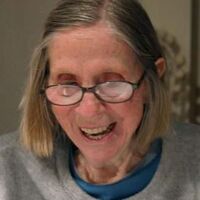
In 1920, Barbara Guest was born in Wilmington, North Carolina. She attended the University of California, Los Angeles, and the University of California, Berkeley, from which she graduated in 1943. Early in her career, she was known predominantly as a writer of the New York School, a group of poets that included John Ashbery, Kenneth Koch, Frank O'Hara, and James Schuyler. The New York School represented a rejection of the dominant school of confessional poetry and was deeply influenced by the action painters of the 1950s and 1960s, particularly Jackson Pollock, Willem de Kooning, and Larry Rivers. Throughout the 1950s, Guest worked as a writer for Art News magazine, and she has continued to write articles and reviews for many art magazines. The tension between the lyrical (or musical) and the graphic (or material) is a defining feature of her work, and her poetry often utilizes space as a way to draw attention to language. Guest has published numerous collections of poetry, among them The Red Gaze (Wesleyan University Press, 2005); Miniatures and Other Poems (2002), Symbiosis (1999), Defensive Rapture (1994), Fair Realism (1989), Musicality (1988), The Nude (1986), Quilts (1980), and Biography (1980). She is also the author of several plays and a novel, Seeking Air (1978). Her honors include the Robert Frost Medal for Distinguished Lifetime Achievement from the Poetry Society of America, the Longwood Award, a San Francisco State award for poetry, the Lawrence Lipton Award for Literature, the Columbia Book Award, and a grant from The National Endowment for the Arts. She lived in Berkeley, California. Guest died on February 15, 2006. A Selected Bibliography Poetry The Blue Stairs (1968) Moscow Mansions (1973) Biography (1980) The Nude (1986) Musicality (1988) Fair Realism (1989) Defensive Rapture (1994) Symbiosis (1999) Miniatures and Other Poems (2002) The Red Gaze (2005) Prose Seeking Air (1978) The Confetti Trees (1999) Rocks on a Platter: Notes on Literature (1999) Plays The Ladies Choice (1953) The Office (1963) Port (1965)

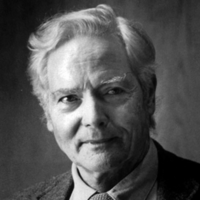
William Stanley Merwin (born September 30, 1927) is an American poet, credited with over fifty books of poetry, translation and prose. During the 1960s anti-war movement, Merwin’s unique craft was thematically characterized by indirect, unpunctuated narration. In the 1980s and 1990s, Merwin’s writing influence derived from his interest in Buddhist philosophy and deep ecology. Residing in Hawaii, he writes prolifically and is dedicated to the restoration of the islands’ rainforests. Merwin has received many honors, including the Pulitzer Prize for Poetry (in both 1971 and 2009), the National Book Award for Poetry (2005) and the Tanning Prize, one of the highest honors bestowed by the Academy of American Poets, as well as the Golden Wreath of the Struga Poetry Evenings. In 2010, the Library of Congress named Merwin the seventeenth United States Poet Laureate to replace the outgoing Kay Ryan. Following his receiving the Pulitzer Prize for Poetry in 2009, Merwin is recognized as one of the principal contributors to poetry in the early 21st century. Early life W. S. Merwin was born in New York City on September 30, 1927. He grew up on the corner of Fourth Street and New York Avenue in Union City, New Jersey until 1936, when his family moved to Scranton, Pennsylvania. As a child, he was enamored of the natural world, sometimes finding himself talking to the large tree in his back yard. He was also fascinated with things that he saw as links to the past, such as the building behind his home that had once been a barn that housed a horse and carriage. At the age of five he started writing hymns for his father, who was a Presbyterian minister. Career After attending Princeton University, Merwin married his first wife, Dorothy Jeanne Ferry, and moved to Spain. During his stay there, while visiting the renowned poet Robert Graves at his homestead on the island of Majorca, he served as tutor to Graves’s son. There, he met Dido Milroy—fifteen years older than he—with whom he collaborated on a play and whom he later married and lived with in London. In 1956, Merwin moved to Boston for a fellowship at the Poets’ Theater. He returned to London where he was friends with Sylvia Plath and Ted Hughes. In 1968, Merwin moved to New York City, separating from his wife who stayed at their home in France. In the late 1970s, Merwin moved to Hawaii and eventually was divorced from Dido Milroy. He married Paula Schwartz in 1983. In 1952 Merwin’s first book of poetry, A Mask for Janus, was published in the Yale Younger Poets Series. W. H. Auden selected the work for that distinction. Later, in 1971 Auden and Merwin would exchange harsh words in the pages of The New York Review of Books. Merwin had published “On Being Awarded the Pulitzer Prize” in the June 3, 1971, issue of The New York Review of Books outlining his objections to the Vietnam War and stating that he was donating his prize money to the draft resistance movement. From 1956 to 1957 Merwin was also playwright-in-residence at the Poet’s Theatre in Cambridge, Massachusetts; he became poetry editor at The Nation in 1962. Besides being a prolific poet (he has published over fifteen volumes of his works), he is also a respected translator of Spanish, French, Latin and Italian poetry (including Dante’s Purgatorio) as well as poetry from Sanskrit, Yiddish, Middle English, Japanese and Quechua. He also served as selector of poems of the late American poet Craig Arnold (1967–2009). Merwin is probably best known for his poetry about the Vietnam War, and can be included among the canon of Vietnam War-era poets which includes such luminaries as Robert Bly, Adrienne Rich; Denise Levertov; Robert Lowell; Allen Ginsberg and Yusef Komunyakaa. In 1998, Merwin wrote Folding Cliffs: A Narrative, an ambitious novel-in-verse about Hawaiʻi in history and legend. Merwin’s early subjects were frequently tied to mythological or legendary themes, while many of his poems featured animals. A volume called The Drunk in the Furnace (1960) marked a change for Merwin, in that he began to write in a much more autobiographical way. The title-poem is about Orpheus, seen as an old drunk. 'Where he gets his spirits / it’s a mystery’, Merwin writes; 'But the stuff keeps him musical’. Another poem of this period—'Odysseus’—reworks the traditional theme in a way that plays off poems by Stevens and Graves on the same topic. In the 1960s, Merwin lived in a small apartment in New York City’s Greenwich Village, and began to experiment boldly with metrical irregularity. His poems became much less tidy and controlled. He played with the forms of indirect narration typical of this period, a self-conscious experimentation explained in an essay called 'On Open Form’ (1969). The Lice (1967) and The Carrier of Ladders (1970) remain his most influential volumes. These poems often used legendary subjects (as in 'The Hydra’ or 'The Judgment of Paris’) to explore highly personal themes. In Merwin’s later volumes—such as The Compass Flower (1977), Opening the Hand (1983), and The Rain in the Trees (1988)—one sees him transforming earlier themes in fresh ways, developing an almost Zen-like indirection. His latest poems are densely imagistic, dream-like, and full of praise for the natural world. He has lived in Hawaii since the 1970s. Migration: New and Selected Poems won the 2005 National Book Award for poetry. A lifelong friend of James Wright, Merwin wrote an elegy to him that appears in the 2008 volume From the Other World: Poems in Memory of James Wright. The Shadow of Sirius, published in 2008 by Copper Canyon Press, was awarded the 2009 Pulitzer Prize for poetry. In June 2010, the Library of Congress named Merwin the seventeenth United States Poet Laureate to replace the outgoing Kay Ryan. He is the subject of the 2014 documentary film Even Though the Whole World Is Burning. Merwin appeared in the PBS documentary “The Buddha,” released in 2010. He had moved to Hawaii to study with the Zen Buddhist master Robert Aitkin in 1976. Personal life Today, Merwin lives on a former pineapple plantation built atop a dormant volcano on the northeast coast of Maui. Awards * Each year links to its corresponding "[year] in poetry" or "[year] in literature" article: * 1952: Yale Younger Poets Prize for A Mask for Janus * 1954: Kenyon Review Fellowship in Poetry * 1956: Rockefeller Fellowship * 1957: National Institute of Arts and Letters grant * 1957: Playwrighting Bursary, Arts Council of Great Britain * 1961: Rabinowitz Foundation Grant * 1962: Bess Hokin Prize, Poetry magazine * 1964/1965: Ford Foundation Grant * 1966: Chapelbrook Foundation Fellowship * 1967: Harriet Monroe Memorial Prize, Poetry magazine * 1969: PEN Translation Prize for Selected Translations 1948-1968 * 1969: Rockefeller Foundation Grant * 1971: Pulitzer Prize for Poetry for The Carrier of Ladders (published in 1971) * 1973: Academy of American Poets Fellowship * 1974: Shelley Memorial Award * 1979: Bollingen Prize for Poetry, Yale University Library * 1987: Governor’s Award for Literature of the state of Hawaii * 1990: Maurice English Poetry Award * 1993: The Tanning Prize for mastery in the art of poetry * 1993: Lenore Marshall Poetry Prize for Travels * 1994: Lila Wallace-Reader’s Digest Writers’ Award * 1998: Ruth Lilly Poetry Prize, awarded by The Poetry Foundation * 1999: Poetry Consultant to the Library of Congress, a jointly-held position with Rita Dove and Louise Glück * 2005: National Book Award for Poetry for Migration: New and Selected Poems * 2004: Golden Wreath Award of the Struga Poetry Evenings Festival in Macedonia * 2004: Lannan Lifetime Achievement Award * 2008: Golden Plate Award, American Academy of Achievement * 2009: Pulitzer Prize for Poetry for The Shadow of Sirius (published in 2008) * 2010: Kenyon Review Award for Literary Achievement * 2010: United States Poet Laureate * 2013: The Zbigniew Herbert International Literary Award Other accolades * Merwin’s former home town of Union City, New Jersey honored him in 2006 by renaming a local street near his former home W.S. Merwin Way. Bibliography * * Each year links to its corresponding "[year] in poetry" or "[year] in literature" article: Poetry - collections * * 1952: A Mask for Janus, New Haven, Connecticut: Yale University Press; awarded the Yale Younger Poets Prize, 1952 (reprinted as part of The First Four Books of Poems, 1975) * 1954: The Dancing Bears, New Haven, Connecticut: Yale University Press (reprinted as part of The First Four Books of Poems, 1975) * 1956: Green with Beasts, New York: Knopf (reprinted as part of The First Four Books of Poems, 1975) * 1960: The Drunk in the Furnace, New York: Macmillan (reprinted as part of The First Four Books of Poems, 1975) * 1963: The Moving Target, New York: Atheneum * 1966: Collected Poems, New York: Atheneum * 1967: The Lice, New York: Atheneum * 1969: Animae, San Francisco: Kayak * 1970: The Carrier of Ladders, New York: Atheneum;—winner of the Pulitzer Prize * 1970: Signs, illustrated by A. D. Moore; Iowa City, Iowa: Stone Wall Press * 1973: Writings to an Unfinished Accompaniment, New York: Atheneum * 1975: The First Four Books of Poems, containing A Mask for Janus, The Dancing Bears, Green with Beasts, and The Drunk in the Furnace, New York: Atheneum; (reprinted in 2000, Port Townsend, Washington: Copper Canyon Press) * 1977: The Compass Flower, New York: Atheneum * 1978: Feathers From the Hill, Iowa City, Iowa: Windhover * 1982: Finding the Islands, San Francisco: North Point Press * 1983: Opening the Hand, New York: Atheneum * 1988: The Rain in the Trees, New York: Knopf * 1988: Selected Poems, New York: Atheneum * 1993: The Second Four Books of Poems, Port Townsend, Washington: Copper Canyon Press * 1993: Travels: Poems, New York: Knopf winner of the 1993 Lenore Marshall Poetry Prize * 1996: The Vixen: Poems, New York: Knopf * 1997: Flower and Hand: Poems, 1977-1983 Port Townsend, Washington: Copper Canyon Press * 1998: The Folding Cliffs: A Narrative, a “novel-in-verse” New York: Knopf * 1999: The River Sound: Poems, New York: Knopf * 2001: The Pupil, New York: Knopf * 2005: Migration: New and Selected Poems, Port Townsend, Washington: Copper Canyon Press—winner of the National Book Award for Poetry * 2005: Present Company, Port Townsend, Washington: Copper Canyon Press * 2008: The Shadow of Sirius, Port Townsend, Washington: Copper Canyon Press—winner of the Pulitzer Prize * 2013: The Collected Poems of W. S. Merwin, New York: Library of America * 2014: The Moon Before Morning, Port Townsend, Washington: Copper Canyon Press Poems * Prose * * 1970: The Miner’s Pale Children, New York: Atheneum (reprinted in 1994, New York: Holt) * 1977: Houses and Travellers, New York: Atheneum (reprinted in 1994, New York: Holt) * Regions of Memory * 1982: Unframed Originals: Recollections * 1992: The Lost Uplands: Stories of Southwest France, New York: Knopf * 2002: The Mays of Ventadorn, National Geographic Directions Series; Washington: National Geographic * 2004: The Ends of the Earth, essays, Washington: Shoemaker & Hoard * 2005: Summer Doorways: A Memoir * 2007: The Book of Fables, Port Townsend, Washington: Copper Canyon Press Plays * * 1956: Darkling Child (with Dido Milroy), produced this year * 1957: Favor Island, produced this year at Poets’ Theatre in Cambridge, Massachusetts (broadcast in 1958 by Third Programme, British Broadcasting Corporation) * 1961: The Gilded West, produced this year at Belgrade Theatre, Coventry, England Translations * * 1959: The Poem of the Cid, London: Dent (American edition, 1962, New York: New American Library) * 1960: The Satires of Persius, Bloomington, Indiana: Indiana University Press * 1961: Some Spanish Ballads, London: Abelard (American edition: Spanish Ballads, 1961, New York: Doubleday Anchor) * 1962: The Life of Lazarillo de Tormes: His Fortunes and Adversities, a Spanish novella; New York: Doubleday Anchor * 1963: The Song of Roland * 1969: Selected Translations, 1948 - 1968, New York: Atheneum; winner of the PEN Translation Prize * 1969: Twenty Love Poems and a Song of Despair, poems by Pablo Neruda; London: Jonathan Cape (reprinted in 2004 with an introduction by Christina Garcia, New York: Penguin Books) * 1969: Products of the Perfected Civilization, Selected Writings of Chamfort, also author of the introduction; New York: Macmillan * 1969: Voices: Selected Writings of Antonio Porchia, Chicago: Follett (reprinted in 1988 and 2003, Port Townsend, Washington: Copper Canyon Press) * 1969: Transparence of the World, poems by Jean Follain, New York: Atheneum (reprinted in 2003, Port Townsend, Washington: Copper Canyon Press) * 1971: “Eight Quechua Poems”, The Hudson Review * 1973: Asian Figures, New York: Atheneum * 1974: Osip Mandelstam: Selected Poems (with Clarence Brown), New York: Oxford University Press (reprinted in 2004 as The Selected Poems of Osip Mandelstam, New York: New York Review of Books) * 1977: Sanskrit Love Poetry (with J. Moussaieff Masson), New York: Columbia University Press (published in 1981 as Peacock’s Egg: Love Poems from Ancient India, San Francisco: North Point Press) * 1977: Vertical Poetry, poems by Roberto Juarroz; San Francisco: Kayak (reprinted in 1988; San Francisco: North Point Press) * 1978: Euripides’ Iphigeneia at Aulis (with George E. Dimock, Jr.), New York: Oxford University Press * 1979: Selected Translations, 1968-1978, New York: Atheneum * 1981: Robert the Devil, an anonymous French play; with an introduction by the translator; Iowa City, Iowa: Windhover * 1985: Four French Plays, including Robert the Devil; The Rival of His Master and Turcaret by Alain-René Lesage; and The False Confessions by Pierre de Marivaux; New York: Atheneum * 1985: From the Spanish Morning, consisting of Spanash Ballads by Lope de Rueda and Eufemia: The Life of Lazarillo de Torres (originally translated in Tulane Drama Review, December 1958); New York: Atheneum * 1989: Sun at Midnight, poems by Musō Soseki (with Soiku Shigematsu) * 1996: Pieces of Shadow: Selected Poems of Jaime Sabines * 1998: East Window: The Asian Translations, translated poems from earlier collections, Port Townsend, Washington: Copper Canyon Press * 2000: Purgatorio from The Divine Comedy of Dante; New York: Knopf * 2005: Gawain and the Green Knight, a New Verse Translation, New York: Knopf * 2013: Selected Translations, translated poems from 1948 - 2010, Port Townsend, Washington: Copper Canyon Press * 2013: Collected Haiku of Yosa Buson, Port Townsend, Washington: Copper Canyon Press (with Takako Lento) * 2013: Sun At Midnight, poems by Muso Soseki, Port Townsend, Washington: Copper Canyon Press (with Soiku Shigematsu) (updated and reissued) Editor * * 1961: West Wind: Supplement of American Poetry, London: Poetry Book Society * 1996: Lament for the Makers: A Memorial Anthology (compiler), Washington: Counterpoint Other sources * * The Union City Reporter March 12, 2006. Archives * * Merwin’s literary papers are held at The Rare Book & Manuscript Library (University of Illinois at Urbana-Champaign). The collection, which is open to researchers, consists of some 5,500 archival items and 450 printed books. References Wikipedia—https://en.wikipedia.org/wiki/W._S._Merwin
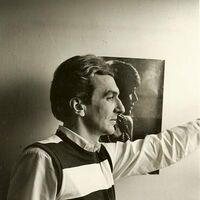
John Joseph Wieners (6 January 1934 – 1 March 2002) was an American lyric poet. Born in Milton, Massachusetts, Wieners attended St. Gregory Elementary School in Dorchester, Massachusetts and Boston College High School. From 1950 to 1954, he studied at Boston College, where he earned his A.B. In 1954 he heard Charles Olson read at the Charles Street Meeting House on Beacon Hill during Hurricane Hazel. He decided to enroll at Black Mountain College where he studied under Olson and Robert Duncan from 1955 to 1956. He then worked as an actor and stage manager at the Poet’s Theater in Cambridge, and began to edit Measure, releasing three issues over the next several years. From 1958 to 1960 Wieners lived in San Francisco, California and actively participated in the San Francisco Poetry Renaissance. The Hotel Wentley Poems was published in 1958, when Wieners was twenty-four. Wieners returned to Boston in 1960 and was committed to a psychiatric hospital. In 1961, he moved to New York City and worked as an assistant bookkeeper at Eighth Street Books from 1962-1963, living on the Lower East Side with Herbert Huncke. He went back to Boston in 1963, employed as a subscriptions editor for Jordan Marsh department stores until 1965. Wieners’ second book, Ace of Pentacles, was published in 1964. In 1965, after traveling with Olson to the Spoleto Festival and the Berkeley Poetry Conference, he enrolled in the Graduate Program at SUNY Buffalo. He worked as a teaching fellow under Olson, then as an endowed Chair of Poetics, staying until 1967, with Pressed Wafer coming out the same year. In 1968, he signed the “Writers and Editors War Tax Protest” pledge, vowing to refuse tax payments in protest against the Vietnam War. In the spring of 1969, Wieners was again institutionalized, and wrote Asylum Poems. Nerves was released in 1970, containing work from 1966 to 1970. In the early 1970s, Wieners became active in education and publishing cooperatives, political action committees, and the gay liberation movement. He also moved into an apartment at 44 Joy Street on Beacon Hill, where he lived for the next thirty years. In 1975, Behind the State Capitol or Cincinnati Pike was published, a magnum opus of “Cinema decoupages; verses, abbreviated prose insights.” For the next ten years, he published rarely and remained largely out of the public eye. In 1985, he was a Guggenheim Fellow. Black Sparrow Press released two collections edited by Raymond Foye: Selected Poems: 1958-1984 and Cultural Affairs in Boston, in 1986 and 1988 respectively. A previously unpublished journal by Wieners came out in 1996, entitled The Journal of John Wieners is to be called 707 Scott Street for Billie Holliday 1959, documenting his life in San Francisco around the time of The Hotel Wentley Poems. At the Guggenheim Museum in 1999, Wieners gave one of his last public readings, celebrating an exhibit by the painter Francesco Clemente. A collaboration between the two, Broken Women, was also published. Wieners died on March 1, 2002 at Massachusetts General Hospital in Boston, having collapsed a few days previously after an evening attending a party with his friend and publisher Charley Shively. Kidnap Notes Next, a collection of poems and journal entries edited by Jim Dunn, was published posthumously in 2002. A Book of Prophecies was published in 2007 from Bootstrap Press. The manuscript was discovered in the Kent State University archive's collection by poet Michael Carr. It was a journal written by Wieners in 1971, and opens with a poem titled 2007. His papers are held at the University of Delaware. References Wikipedia - http://en.wikipedia.org/wiki/John_Wieners
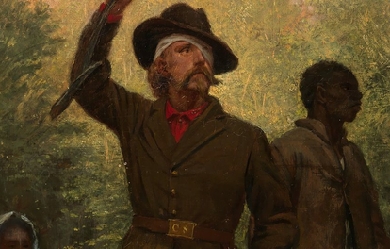
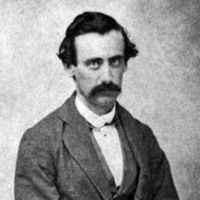
Henry Timrod (December 8, 1829– October 7, 1867) was an American poet, often called the poet laureate of the Confederacy. Early life Timrod was born on December 8, 1829, in Charleston, South Carolina, to a family of German descent. His grandfather Heinrich Dimroth emigrated to the United States in 1765 and anglicized his name. His father, William Henry Timrod, was an officer in the Seminole Wars and a poet himself. In fact, he composed the following poem on the subject of his eldest son, Henry: Harry, my little blue-eyed boy, I love to have thee playing near; There’s music in thy shouts of joy, To a fond father’s ear. I love to see the lines of mirth Mantle thy cheeks and forehead fair, As if all the pleasures of the earth Had met to revel there. For gazing on thee do I sigh That those most happy years must flee; And thy full share of misery Must fall in life on thee. The elder Timrod died from tuberculosis on July 28, 1838, in Charleston, at the age of 44, leaving behind his wife of 25 years, Thyrza Prince Timrod, and their four children, the eldest of which was Adaline Rebecca, 14 years; Henry was nine. A few years later, their home burned down, leaving the family impoverished. He studied at the University of Georgia beginning in 1847 with the help of a financial benefactor. He was soon forced by illness to end his formal studies, however, and returned to Charleston. He took a position with a lawyer and planned to begin a law practice. From 1848 to 1853, he submitted a number of poems to the Southern Literary Messenger under the pen name Aglaus, where he attracted some attention for his abilities. He left his legal studies by December 1850, calling it “distasteful”, and focused more on writing and tutoring. He was a member of Charleston’s literati, and with John Dickson Bruns and Basil Lanneau Gildersleeve, could often be found in the company of their leader, William Gilmore Simms, whom they referred to as “Father Abbot,” from one of his novels. Career In 1856, he accepted a post as a teacher at the plantation of Colonel William Henry Cannon in the area that would later become Florence, South Carolina. Cannon had a single-room school building built in 1858 to provide for the education of the plantation children. The building measures “only about twelve by fifteen feet in size.” Among his students was the young lady who would later become his bride and the object of a number of his poems– the “fair Saxon” Kate Goodwin. These lines from “Katie”, the opening poem of The Poems of Henry Timrod (1873), are an example: The blackbird from a neighboring thorn With music brims the cup of morn, And in a thick, melodious rain The mavis pours her mellow strain! But only when my Katie’s voice Makes all the listening woods rejoice I hear—with cheeks that flush and pale— The passion of the nightingale! While teaching and tutoring, he continued also to publish his poems in literary magazines. In 1860, he published a small book, which, although a commercial failure, increased his fame. The best-known poem from the book was “A Vision of Poesy”. Civil War period With the outbreak of American Civil War, in a state of fervent patriotism, Timrod returned to Charleston to begin publishing his war poems, which drew many young men to enlist in the service of the Confederacy. His first poem of this period is “Ethnogenesis”, written in February, 1861, during the meeting of the first Confederate Congress at Montgomery, Alabama. Part of the poem was read aloud at this meeting: Hath not the morning dawned with added light? And shall not evening call another star Out of the infinite regions of the night To mark this day in Heaven? At last we are A nation among nations. And the world Shall soon behold in many a distant port Another flag unfurled! “A Cry to Arms”, “Carolina” and “The Cotton Boll” are other famous examples of his martial poetry. He was a frequent contributor of poems to Russell’s Magazine and to The Southern Literary Messenger. On March 1, 1862, Timrod enlisted into the military as a private in Company B, 30th South Carolina Regiment, and was detailed for special duty as a clerk at regimental headquarters, but his tuberculosis prevented much service, and he was sent home. After the bloody Battle of Shiloh, he tried again to live the camp life as a western war correspondent for the Charleston Mercury, but this too was short lived as he was not strong enough for the rugged task. He returned from the front and settled in Columbia, South Carolina, to become associate editor of the South Carolinian, a daily newspaper. Throughout 1864 he wrote many articles for the paper. In February 1864 he married his beloved Katie, and they soon had a son, Willie, born on Christmas Eve. This happy period in his life was short-lived. General Sherman’s troops invaded Columbia on February 17, 1865, one year and one day after his marriage. Due to the vigor of his editorials, he was forced into hiding, his home was burned, and the newspaper office was destroyed. Death The aftermath of war brought his family poverty and to him and his wife, increasing illness. He moved his family into his sister and mother’s home in Columbia. Then, his son Willie died on October 23, 1865. He expressed his sorrow in the poem “Our Willie”: ’Twas a merry Christmas when he came, Our little boy beneath the sod; And brighter burned the Christmas flame, And merrier sped the game Because within the house there lay A shape as tiny as a fay— The Christmas gift of God! He took a post as correspondent for a new newspaper based in Charleston, The Carolinian, but continued to reside in Columbia. Even after several months of work, however, he was never paid, and the paper folded. In economic desperation, he submitted poems written in his strongest style to northern periodicals, but all were coldly declined. Henry continued to seek work, but continued to be disappointed. Finally, in November, 1866, he was given an assistant clerkship under Governor James L. Orr’s staff member James S. Simons. This lasted less than a month, after which he was again dependent on charity and odd jobs to feed his family of women. Despite the harshly reduced circumstances, and mounting health problems, he was still able to produce highly regarded poetry. His “Memorial Ode”, composed in the Spring of 1867 “was sung at Magnolia Cemetery, Charleston, in May when the graves of the southern dead were decorated.” Sleep sweetly in your humble graves, Sleep, martyrs of a fallen cause; Though yet no marble column craves The pilgrim here to pause. In seeds of laurel in the earth The blossom of your flame is blown, And somewhere, waiting for its birth, The shaft is in the stone! Meanwhile, behalf the tardy years Which keep in trust your storied tombs, Behold! Your sisters bring their tears, And these memorial blooms. He finally succumbed to consumption Sunday morning, October 7, 1867, and was laid to rest in the churchyard at Trinity Episcopal Church in Columbia next to his son. Criticism and legacy Timrod’s friend and fellow poet, Paul Hamilton Hayne, posthumously edited and published The Poems of Henry Timrod, with more of Timrod’s more famous poems in 1873, including his "Ode: Sung on the Occasion of Decorating the Graves of the Confederate Dead at Magnolia Cemetery, Charleston, S.C., 1867" and “The Cotton Boll”. Later critics of Timrod’s writings, including Edd Winfield Parks and Guy A. Cardwell, Jr. of the University of Georgia, Jay B. Hubbell of Vanderbilt University and Christina Murphy, who completed a Ph.D. dissertation on Timrod at the University of Connecticut, have asserted that Timrod was one of the most important regional poets of nineteenth-century America and one of the most important Southern poets. In terms of achievement, Timrod is often compared to Sidney Lanier and John Greenleaf Whittier as poets who achieved significant stature by combining lyricism with a poetic capacity for nationalism. All three poets also explored the heroic ode as a poetic form. Today, Timrod’s poetry is included in most of the historical anthologies of American poetry, and he is regarded as a significant-though secondary-figure in 19th-century American literature. In 1901, a monument with a bronze bust of Timrod was dedicated in Charleston. The state’s General Assembly passed a resolution in 1911 instituting the verses of his poem “Carolina” as the lyrics of the official state anthem. In September 2006, an article for The New York Times noted similarities between Bob Dylan’s lyrics in the album, Modern Times and the poetry of Timrod. A wider debate developed in The Times as to the nature of “borrowing” within the folk tradition and in literature. References Wikipedia—https://en.wikipedia.org/wiki/Henry_Timrod
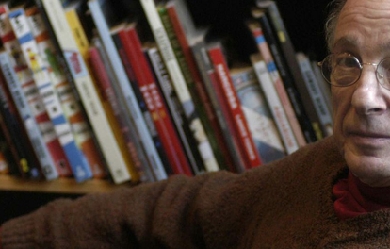
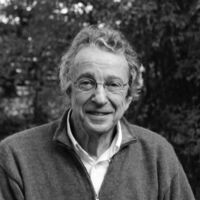
Charles Kenneth “C. K.” Williams (November 4, 1936 – September 20, 2015) was an American poet, critic and translator. Williams won nearly every major poetry award. Flesh and Blood won the National Book Critics Circle Award in 1987. Repair (1999) won the 2000 Pulitzer Prize for Poetry, was a National Book Award finalist and won the Los Angeles Times Book Prize. The Singing won the National Book Award, 2003 and in 2005 Williams received the Ruth Lilly Poetry Prize. The 2012 film Tar related aspects of Williams' life using his poetry. C. K. Williams grew up in Newark, New Jersey and graduated from Columbia High School in Maplewood. He later briefly attended Bucknell University and graduated from the University of Pennsylvania. While at Penn he studied with the romantic scholar, Morse Peckham, and spent a great deal of time in the circle of young architects who studied with and worked for the great architect Louis Kahn. In an essay, “Beginnings,” he acknowledged Kahn's dedication and patience as essential to his notion of the life of an artist. Life Williams lived for a period in Philadelphia, where he worked for a number of years as a part-time psychotherapist for adolescents and young adults, a ghost-writer and editor, then began teaching, first at the YM-YWHA in Philadelphia, then at several universities in Pennsylvania, Beaver College, Drexel, and Franklin and Marshall. He subsequently taught at many other universities, including Columbia, NYU, Boston University, the University of California, both at Irvine and Berkeley, before finally becoming a professor at George Mason University, then moving in 1995 to Princeton University. He met his wife, Catherine Mauger, a French jeweler, in 1973, and they have a son who is now a noted painter, Jed Williams. He has a daughter from an earlier marriage, Jessie Williams Burns, who is a writer. He lived half the year near Princeton, and the rest in Normandy in France. He was a member of the American Academy of Arts and Letters. Williams died of multiple myeloma on September 20, 2015 at his home in Hopewell, New Jersey. Works His first book, Lies, was published in 1969, and he had published many collections of poetry, culminating in his Collected Poems, of which Peter Campion wrote in The Boston Globe: "Throughout the five decades represented in his new Collected Poems, Williams has maintained the most sincere, and largest, ambitions. Like Yeats and Lowell before him, he writes from the borderland between private and public life….[His poems] join skeptical intelligence and emotional sincerity, in a way that dignifies all of our attempts to make sense of the world and of ourselves. C. K. Williams has set a new standard for American poetry." Another collection, Wait, appeared in 2010, and another, Writers Writing Dying, came out in 2012. He wrote a memoir, Misgivings, which appeared in 2000, a collection of essays, Poetry and Consciousness (1999), and a critical study of Walt Whitman, On Whitman (2010). Williams was also an acclaimed translator, notably of Sophocles' Women of Trachis and Euripides' The Bacchae, as well as of the Polish poet Adam Zagajewski and the French poet Francis Ponge. He also published several children's books. References Wikipedia—https://en.wikipedia.org/wiki/C._K._Williams
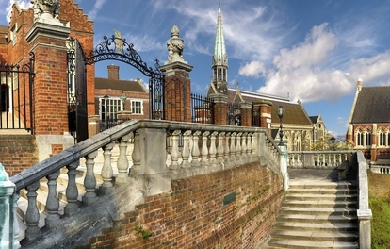
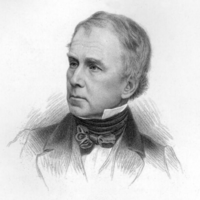
Bryan Waller Procter (pseud. Barry Cornwall) (21 November 1787 – 5 October 1874) was an English poet. Born at Leeds, Yorkshire, he was educated at Harrow School, where he had for contemporaries Lord Byron and Robert Peel. On leaving school he was placed in the office of a solicitor at Calne, Wiltshire, remaining there until about 1807, when he returned to London to study law. By the death of his father in 1816 he became possessed of a small property, and soon after entered into partnership with a solicitor; but in 1820 the partnership was dissolved, and he began to write under the pseudonym of “Barry Cornwall”.


James Dennis "Jim" Carroll (August 1, 1949 – September 11, 2009) was an American author, poet, autobiographer, and punk musician. Carroll was best known for his 1978 autobiographical work The Basketball Diaries, which was made into the 1995 film of the same name, starring Leonardo DiCaprio as Carroll. Carroll was born to a working-class family of Irish descent, and grew up on New York City's Lower East Side. When he was about eleven (in the sixth grade) his family moved north to Inwood in Upper Manhattan where he attended Good Shepherd School. He was taught by the LaSalle Christian Brothers, and his brother in the sixth grade noted that he could write and encouraged him to do so. In fall 1963, he entered public school, but was soon awarded a scholarship to the elite Trinity School. He attended Trinity from 1964–1968. Apart from being interested in writing, Carroll was an all-star basketball player throughout his grade school and high school career. He entered the "Biddy League" at age 13 and participated in the National High School All Star Game in 1966. During this time, Carroll was living a double life as a heroin addict who prostituted himself to afford his habit but he was also writing poems and attending poetry workshops at St. Mark's Poetry Project. He briefly attended Wagner College and Columbia University. Literary career While still in high school, Carroll published his first collection of poems, Organic Trains. Already attracting the attention of the local literati, his work began appearing in the Poetry Project's magazine The World in 1967. Soon his work was being published in elite literary magazines like Paris Review in 1968, and Poetry the following year. In 1970, his second collection of poems, 4 Ups and 1 Down was published, and he started working for Andy Warhol. At first, he was writing film dialogue and inventing character names; later on, Carroll worked as the co-manager of Warhol's Theater. Carroll's first publication by a mainstream publisher (Grossman Publishers), the poetry collection Living at the Movies, was published in 1973. In 1978, Carroll published The Basketball Diaries, an autobiographical book concerning his life as a teenager in New York City's hard drug culture. Diaries is an edited collection of the diaries he kept between the ages of twelve and sixteen, detailing his sexual experiences, high school basketball career, and his addiction to heroin, which began when he was 13. In 1987, Carroll wrote a second memoir entitled Forced Entries: The Downtown Diaries 1971–1973, continuing his autobiography into his early adulthood in the New York City music and art scene as well as his struggle to kick his drug habit. After working as a musician, Carroll returned to writing full-time in the mid-1980s and began to appear regularly on the spoken word circuit. Starting in 1991, Carroll performed readings from his then-in-progress first novel, The Petting Zoo. Music career In 1978, after he moved to California to get a fresh start since kicking his heroin addiction, Carroll formed The Jim Carroll Band, a New Wave/punk rock group, with encouragement from Patti Smith, with whom he once shared an apartment in New York City, along with Robert Mapplethorpe.[9] The band was originally called Amsterdam, and was based in the San Francisco Bay Area. The musicians were Steve Linsley (bass), Wayne Woods (drums), Brian Linsley and Terrell Winn (guitars). They released a single "People Who Died", from their 1980 debut album, Catholic Boy. The album featured contributions from Allen Lanier and Bobby Keys. In 1982 the song appeared in E.T. the Extra-Terrestrial, from which Carroll received royalties until his death in 2009. The song also appeared in the 1985 Kim Richards vehicle Tuff Turf starring James Spader and Robert Downey Jr., which also featured a cameo appearance by the band, as well as 2004's Dawn of the Dead. It was featured in the 1995 film The Basketball Diaries (based on Jim Carroll's autobiography), and was covered by John Cale on his Antártida soundtrack. A condensed, 2-minute, version of the song was made into an animated music video by Daniel D. Cooper, an independent filmmaker/animator, in 2010. The song's title was based on a poem by Ted Berrigan. Later albums were Dry Dreams (1982) and I Write Your Name (1983), both with contributions from Lenny Kaye and Paul Sanchez. Carroll also collaborated with musicians Lou Reed, Blue Öyster Cult, Boz Scaggs, Ray Manzarek of The Doors, Pearl Jam, Electric Light Orchestra and Rancid. Death Carroll, 60, died of a heart attack at his Manhattan home on September 11, 2009. He was reportedly working at his desk when he died. Poetry * Organic Trains (1967) * 4 Ups and 1 Down (1970) * Living at the Movies (1973) * The Book of Nods (1986) * Fear of Dreaming (1993) * Void of Course: Poems 1994–1997 (1998) ISBN 0-14-058909-0 Prose * The Basketball Diaries (1978) * Forced Entries: The Downtown Diaries 1971-1973 (1987) * The Petting Zoo (2010) References Wikipedia - http://en.wikipedia.org/wiki/Jim_Carroll
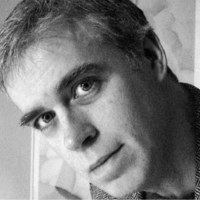
Michael Donaghy (May 24, 1954 – September 16, 2004) was a New York City poet and musician, who lived in London from 1985. Life and career Donaghy was born into an Irish family and grew up with his sister Patricia in the Bronx, New York, losing both parents in their early thirties. He studied at Fordham University and did postgraduate work at the University of Chicago, where, at 25, he edited the Chicago Review. Donaghy commented: “I owe everything I know about poetry to the public library system (in New York City) and not to my miseducation at university [...] I mean, the Bronx, who knows, now it may be full of cappuccino bars and bookshops, but back in those days it wasn’t. My parents would say something like ‘go out and play in the burning wreckage until dinnertime’ and I’d make a beeline for the library.” He founded the acclaimed Irish music ensemble Samradh Music and played the tin whistle, the bodhran and was a flute player of distinction, music echoing in the themes and forms of his writing. In 1985, he moved to just off Green Lanes in Harringay, north London to join his partner and fellow musician, Maddy Paxman, whom he married in 2003; their son, Ruairi, was born in 1996. He joined the London poetry workshop, founded by the Belfast poet Robert Greacen and later chaired by Matthew Sweeney, whose members included Vicki Feaver, Ruth Padel, Jo Shapcott, Maurice Riordan, Eva Salzman and Don Paterson. Rapidly establishing himself on the poetry scene, he published his first full collection, Shibboleth, in 1988– the title poem of which won second prize in the 1987 National Poetry Competition. Errata followed in 1993, and Conjure in 2000. Recognition came in the form of the Geoffrey Faber and Cholmondeley awards and the Whitbread and Forward prizes, among others. In 2003, he teamed up with Cyborg scientist Kevin Warwick and wrote Grimoire. He continued to play in various Irish music groups, as well as the early line-up of Lammas, the jazz/traditional crossover band led by Tim Garland and poet Don Paterson. He was a creative writing tutor for the Arvon Foundation and the Poetry Society and later ran an extension course for City University London. He wrote and reviewed for Poetry Review, Poetry, The New Yorker and The Times Literary Supplement. His poetry, influential to a younger generation of poets, is noted for its metaphysical elegance and playfulness, and his skillful use of form. Death He died suddenly of a brain haemorrhage on September 16, 2004. David Wheatley wrote in The Guardian: "The death of Michael Donaghy in 2004 at the age of 50 has been one of the most deeply felt losses to the poetry world in recent years. Not since Sylvia Plath almost half a century ago had an American poet living in Britain so decisively entered the bloodstream of his times." The Times described him as “one of the most widely respected figures on the British poetry scene and a fierce defender of poetry as a source of pleasure and truth.” His fourth collection Safest was published posthumously in 2005 and a prose collection The Shape of the Dance in 2009. Honours and awards 1987: National Poetry Competition (2nd Prize) 1990: Geoffrey Faber Memorial Prize 1992: Arts Council Writers Award 1994: Selected for New Generation Poets Promotion 1999: Arts Council Writers Award 1999: The Poetry Society Reader in Residence 1999: Fellow of the Royal Society of Literature 2000: Poetry Book Society Choice, Conjure 2000: Forward Poetry Prize (Best Collection) for Conjure Selected works * 1988 Shibboleth, Oxford University Press * 1993 Errata, Oxford University Press * 1997 Penguin Modern Poets 11 (contributor with Andrew Motion and Hugo Williams), London: Penguin * 2000 Dances Learned Last Night: Poems 1975-1995, London: Picador * 2000 Conjure Picador * 2005 101 Poems about Childhood (editor), London: Faber & Faber * 2005 Michael Donaghy Reading from his poems (CD), The Poetry Archive * 2009 Collected Poems, Picador (posthumous) * 2009 The Shape of the Dance: Essays, Interviews and Digressions Picador (posthumous) References Wikipedia—https://en.wikipedia.org/wiki/Michael_Donaghy
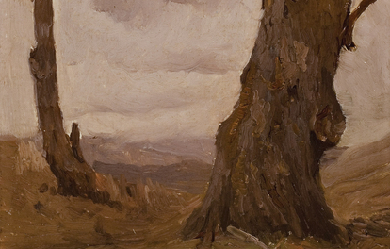
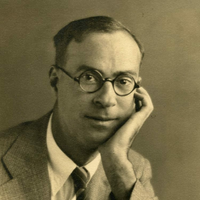
Robert Francis (August 12, 1901; Upland, Pennsylvania– July 13, 1987) was an American poet who lived most of his life in Amherst, Massachusetts. Life Robert Francis was born on August 12, 1901 in Upland, Pennsylvania. He graduated from Harvard University in 1923. He would later attend the Graduate School of Education at Harvard where he once said that he felt that he’d come home. He lived in a small house he built himself in 1940, which he called Fort Juniper, near Cushman Village in Amherst, Massachusetts. One of his poetic mentors was Robert Frost, and indeed Francis’s first volume of poems, Stand Here With Me (1936), displays a poetic voice eerily reminiscent of Frost’s own in carefully crafted nature poems. Frost once said: “poetry is the only acceptable way to say one thing and mean another.” Later work Francis published very little during the 1940s–1950s. He decided that “for better or worse, I was a poet and there was really nothing else for me to do but go on being a poet. It was too late to change even if I had wanted to. Poetry was my most central, intense and inwardly rewarding experience.” In 1960, Francis published The Orb Weaver, which revived his reputation as a poet. Francis uses hidden meanings in his poems, which suggest another way that Frost made an impression on Francis’s poetry. In later volumes, Francis found a voice distinctively his own, relaxed in meter and characterized by puns, word-plays, slant rhymes, and repetitions of key words. Aside from one long narrative poem in Frostian blank verse, Francis’s poetry consists largely of concise lyrics, somewhat limited in thematic range but intensely crafted and deeply personal. Frost would later say that Robert Francis was America’s best neglected poet. He often wrote about nature and baseball. His autobiography, The Trouble with Francis, was published in 1971 and details his struggle with neglect. Francis died July 13, 1987. Awards * Francis won the Shelley Memorial Award in 1939. In 1984 the Academy of American Poets gave Francis its award for distinguished poetic achievement. Works Poetry * * Stand Here With Me. The Macmillan Company. 1936. * The Face Against the Glass. by the author. 1950. * The Orb Weaver. University Press of New England. 1960. ISBN 978-0-8195-1005-1. * Come out into the sun: poems new and selected. University of Massachusetts Press. 1965. ISBN 978-0-87023-015-8. * Like ghosts of eagles: poems, 1966–1974. University of Massachusetts Press. 1974. * Collected Poems, 1936–1976. NetLibrary, Incorporated. 1985. ISBN 978-0-585-28147-6. * Late fire, late snow: new and uncollected poems. University of Massachusetts Press. 1992. ISBN 978-0-87023-814-7. * http://www.poemhunter.com/best-poems/robert-francis/thoreau-in-italy/ Autobiography * The Trouble with Francis. University of Massachusetts Press. 1971. ISBN 978-0-87023-083-7. References Wikipedia—https://en.wikipedia.org/wiki/Robert_Francis_(poet)
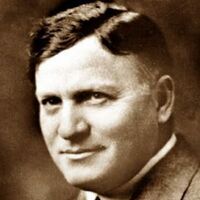
Max Ehrmann (September 26, 1872 – September 9, 1945) was an American writer, poet, and attorney from Terre Haute, Indiana, widely known for his 1927 prose poem "Desiderata" (Latin: "things desired"). He often wrote on spiritual themes. Education Ehrmann was of German descent; both his parents emigrated from Bavaria in the 1840s. Young Ehrmann was educated at the Terre Haute Fourth District School and the German Methodist Church. He received a degree in English from DePauw University in Greencastle, Indiana, which he attended from 1890 to 1894. While there, he was a member of Delta Tau Delta's Beta Beta chapter and was editor of the school newspaper, Depauw Weekly. Ehrmann then studied philosophy and law at Harvard University, where he was editor of Delta Tau Delta's national magazine The Rainbow, circa 1896. Professional life Ehrmann returned to his hometown of Terre Haute, Indiana in 1898 to practice law. He was a deputy state's attorney in Vigo County, Indiana for two years. Subsequently, he worked in his family's meatpacking business and in the overalls manufacturing industry (Ehrmann Manufacturing Co.) At age 40, Ehrmann left the business to write. At age 54, he wrote Desiderata, which achieved fame only after his death. Legacy Ehrmann was awarded Doctor of Letters honorary degree from DePauw University in about 1937. He was also elected to the Delta Tau Delta Distinguished Service Chapter, the fraternity's highest alumni award. Ehrmann died in 1945. He is buried in Highland Lawn Cemetery in Terre Haute, Indiana. In 2010 the city honored Ehrmann with a life-size bronze statue by sculptor Bill Wolfe. He is depicted sitting on a downtown bench, pen in hand, with a notebook in his lap. "Desiderata" is engraved on a plaque that resides next to the statue and lines from the poem are embedded in the walkway. The sculpture is in the collection of Art Spaces, Inc. – Wabash Valley Outdoor Sculpture Collection. Art Spaces also holds an annual Max Ehrmann Poetry Competition. References Wikipedia – http://en.wikipedia.org/wiki/Max_Ehrmann
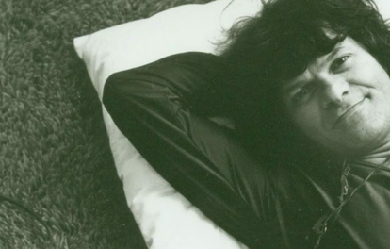
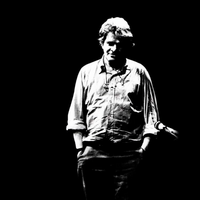
Gregory Nunzio Corso (March 26, 1930– January 17, 2001) was an American poet, youngest of the inner circle of Beat Generation writers (with Jack Kerouac, Allen Ginsberg, and William S. Burroughs). Early life Born Nunzio Corso at St. Vincent’s hospital (later called the Poets’ hospital after Dylan Thomas died there), Corso later selected the name “Gregory” as a confirmation name. Within Little Italy and its community he was “Nunzio,” while he dealt with others as “Gregory.” He often would use “Nunzio” as short for “Annunziato,” the announcing angel Gabriel, hence a poet. Corso identified with not only Gabriel but also the Greco-Roman God Hermes, the divine messenger. Corso’s mother, Michelina Corso (born Colonna) was born in Miglianico, Abruzzo, Italy, and immigrated to the United States at the age of nine, with her mother and four other sisters. At 16, she married Sam Corso, a first-generation Italian American, also teenage, and gave birth to Nunzio Corso the same year. They lived at the corner of Bleecker and MacDougal, the heart of Greenwich Village and upper Little Italy. Childhood Sometime in his first year, Corso’s mother mysteriously abandoned him, leaving him at the New York Foundling Home, a branch of the Catholic Church Charities. Corso’s father, Sam “Fortunato” Corso, a gruff garment center worker, found the infant and promptly put him in a foster home. Michelina came to New York but her life was threatened by Sam. One of Michelina’s sisters was married to a New Jersey mobster who offered to give Michelina her “vengeance,” that is to kill Sam. Michelina declined and returned to Trenton without her child. Sam consistently told Corso that his mother had returned to Italy and deserted the family. He was also told that she was a prostitute and was “disgraziata” (disgraced) and forced into Italian exile. Sam told the young boy several times, “I should have flushed you down the toilet.” It was 67 years before Corso learned the truth of his mother’s disappearance. Corso spent the next 11 years in foster care in at least five different homes. His father rarely visited him. When he did, Corso was often abused: “I’d spill jello and the foster home people would beat me. Then my father would visit and he’d beat me again—a double whammy.” As a foster child, Corso was among thousands that the Church aided during the Depression, with the intention of reconstituting families as the economy picked up. Corso went to Catholic parochial schools, was an altar boy and a gifted student. His father, in order to avoid the military draft, brought Gregory home in 1941. Nevertheless, Sam Corso was drafted and shipped overseas. Corso, then alone, became a homeless child on the streets of Little Italy. For warmth he slept in subways in the winter, and then slept on rooftops during the summer. He continued to attend Catholic school, not telling authorities he was living on the streets. With “permission,” he stole breakfast bread from Vesuvio Bakery, 160 Prince Street in Little Italy. Street food stall merchants would give him food in exchange for running errands. Adolescence At age 13, Corso was asked to deliver a toaster to a neighbor. While he was running the errand, a passerby offered money for the toaster, and Corso sold it. He used the money to buy a tie and white shirt, and dressed up to see the film The Song of Bernadette, about the mystical appearance of the Virgin Mary to Bernadette Soubirous at Lourdes. On returning from the movie, the police apprehended him. Corso claimed he was seeking a miracle, namely, to find his mother. Corso had a lifelong affection for saints and holy men: “They were my only heroes.” Nonetheless, he was arrested for petty larceny and incarcerated in The Tombs, New York’s infamous jail. Corso, even though only thirteen years old, was celled next to an adult, criminally insane murderer who had stabbed his wife repeatedly with a screwdriver. The exposure left Corso traumatized. Neither Corso’s stepmother nor his paternal grandmother would post his $50 bond. With his own mother missing and unable to make bail, he remained in the Tombs. Later, in 1944 during a New York blizzard, a 14-year-old freezing Corso broke into his tutor’s office for warmth, and fell asleep on a desk. He slept through the blizzard and was arrested for breaking and entering and booked into the Tombs a second time, with adults. Terrified of other inmates, he was sent to the psychiatric ward of Bellevue Hospital Center and later released. At the age of seventeen, on the eve of his eighteenth birthday, Corso broke into a tailor shop and stole an over-sized suit to dress for a date. Police records indicate he was arrested two blocks from the shop. He spent the night in the Tombs and was arraigned the next morning as an 18-year-old with prior offenses. No longer a “youthful offender,” he was given a two to three years sentence to Clinton State Prison, in Dannemora, New York, on the Canadian border. It was New York’s toughest prison, the site of the state’s electric chair. Corso always has expressed a curious gratitude for Clinton making him a poet. His second book of poems, Gasoline, is dedicated to “the angels of Clinton Prison who, in my seventeenth year, handed me, from all the cells surrounding me, books of illumination.” Interestingly, Clinton later became known as the “poets’ prison,” as rap poets served time there. Corso at Clinton Correctional While being transported to Clinton, Corso, terrified of prison and the prospect of rape, concocted a story of why he was sent there. He told hardened Clinton inmates he and two friends had devised the wild plan of taking over New York City by means of walkie-talkies, projecting a series of improbable and complex robberies. Communicating by walkie-talkie, each of the three boys took up an assigned position—one inside the store to be robbed, one outside on the street to watch for the police, and a third, Corso, the master-planner, in a small room nearby dictating the orders. According to Corso, he was in the small room giving the orders when the police came. In light of Corso’s youth, his imaginative yarn earned him bemused attention at Clinton. Richard Biello, a Capo, asked Corso who he was connected with, that is, what New York crime family did he come from, talking such big crimes as walkie-talkie robberies...,"I’m independent!" Corso shot back, hoping to keep his distance from the Mob inmates. A week later, in the prison showers, Corso was grabbed by a handful of inmates, and the 18-year-old was about to be raped. Biello happened in and commented, “Corso! You don’t look so independent right now.” Biello waved off the would-be rapists, who were afraid of Mafia reprisals. Thus Corso fell under the protection of powerful Mafioso inmates, and became something of a mascot because he was the youngest inmate in the prison, and he was entertaining. Corso would cook the steaks and veal brought from the outside by Mafia underlings in the “courts”—55-gallon-barrel barbecues and picnic tables—assigned to the influential prisoners. Clinton also had a ski run right in the middle of “the yards,” and Corso learned to downhill ski and taught the Mafiosi. He entertained his mobster elders as a court jester, quick with ripostes and jokes. Corso would often cite the three propositions given him by a Mafia capo: "1) Don’t serve time, let time serve you. 2) Don’t take your shoes off because with a 2 -3 you’re walking right out of here. 3) When you’re in the yard talking to three guys, see four. See yourself. Dig yourself.” Interestingly, Corso was jailed in the very cell just months before vacated by Charles “Lucky” Luciano. While imprisoned, Luciano had donated an extensive library to the prison. The cell was also equipped with a phone and self-controlled lighting as Luciano was, from prison, cooperating with the U.S. Government’s wartime effort, providing Mafia aid in policing the New York waterfront, and later helping in Naples, Italy through his control of the Camorra. In this special cell, Corso read after lights-out thanks to a light specially positioned for Luciano to work late. Corso was encouraged to read and study by his Cosa Nostra mentors, who recognized his genius. There, Corso began writing poetry. He studied the Greek and Roman classics, and consumed encyclopedias and dictionaries. He credited the The Story of Civilization, Will and Ariel Durant’s ground-breaking compendium of history and philosophy, for his general education and philosophical sophistication. Release and return to New York City In 1951, 21-year-old Gregory Corso worked in the garment center by day, and at night was a mascot yet again, this time at one of Greenwich Village’s first lesbian bars, the Pony Stable Inn. The women gave Corso a table at which he wrote poetry. One night a Columbia College student, Allen Ginsberg, happened into the Pony Stable and saw Corso... “he was good looking, and wondered if he was gay, or what.” Corso, who was definitely not gay, was not uncomfortable with same sex come-ons after his time in prison, and thought he could score a beer off Ginsberg. He showed Ginsberg some of the poems he was writing, a number of them from prison, and Ginsberg immediately recognized Corso as “spiritually gifted.” One poem described a woman who sunbathed in a window bay across the street from Corso’s room on 12th Street. Astonishingly, the woman happened to be Ginsberg’s erstwhile girl friend, with whom he lived in one of his rare forays into heterosexuality. Ginsberg invited Corso back to their apartment and asked the woman if she would satisfy Corso’s sexual curiosity. She agreed, but Corso, still a virgin, got too nervous as she disrobed, and he ran from the apartment, struggling with his pants. Ginsberg and Corso became fast friends. All his life, Ginsberg had a sexual attraction to Corso, which remained unrequited. Corso joined the Beat circle and was adopted by its co-leaders, Jack Kerouac and Allen Ginsberg, who saw in the young street-wise writer a potential for expressing the poetic insights of a generation wholly separate from those preceding it. At this time he developed a crude and fragmented mastery of Shelley, Marlowe, and Chatterton. Shelley’s “A Defence of Poetry” (1840), with its emphasis on the ability of genuine poetic impulse to stimulate “unapprehended combinations of thought” that led to the “moral improvement of man,” prompted Corso to develop a theory of poetry roughly consistent with that of the developing principles of the Beat poets. For Corso, poetry became a vehicle for change, a way to redirect the course of society by stimulating individual will. He referred to Shelley often as a “Revolutionary of Spirit”, which he considered Ginsberg and himself to be. Cambridge In 1954, Corso moved to Cambridge, where several important poets, including Edward Marshall and John Wieners, were experimenting with the poetics of voice. The center for Corso’s life there was not “the School of Boston,” as these poets were called, but Harvard University’s Widener Library, where he spent his days reading the great works of poetry and also auditing classes in the Greek and Roman Classics. Corso’s appreciation of the classics had come from the Durants’ books that he had read in prison. At Harvard he considered becoming a classics scholar. Corso, penniless, lived on a dorm room floor in Elliott house, welcomed by students Peter Sourian, Bobby Sedgwick (brother of Edie), and Paul Grand. He would dress up for dinner and not be noticed. Members of the elite Porcellian Club reported Corso to the Harvard administration as an interloper. Dean Archibald MacLeish met with Corso intending to expel him, but Corso showed him his poems and MacLeish relented and allowed Corso to be a non-matriculating student—a poet in residence. Corso’s first published poems appeared in the Harvard Advocate in 1954, and his play In This Hung-up Age—concerning a group of Americans who, after their bus breaks down midway across the continent, are trampled by buffalo—was performed by the esteemed Poets’ Theater the following year, along with T.S. Eliot’s “Murder in the Cathedral.” Harvard and Radcliffe students, notably Grand, Sourian and Sedgwick, underwrote the printing expenses of Corso’s first book, The Vestal Lady on Brattle, and Other Poems. The poems featured in the volume are usually considered apprentice work heavily indebted to Corso’s reading. They are, however, unique in their innovative use of jazz rhythms—most notably in “Requiem for 'Bird’ Parker, musician,” which many call the strongest poem in the book—cadences of spoken English, and hipster jargon. Corso once explained his use of rhythm and meter in an interview with Gavin Selerie for Riverside Interviews: “My music is built in—it’s already natural. I don’t play with the meter.” In other words, Corso believes the meter must arise naturally from the poet’s voice; it is never consciously chosen. In a review of The Vestal Lady on Brattle for Poetry, Reuel Denney asked whether “a small group jargon” such as bop language would “sound interesting” to those who were not part of that culture. Corso, he concluded, “cannot balance the richness of the bebop group jargon... with the clarity he needs to make his work meaningful to a wider-than-clique audience.” Ironically, within a few years, that “small group jargon”, the Beat lingo, became a national idiom, featuring words such as “man,” “cool,” “dig,” “chick,” “hung up,” etc. Despite Corso’s reliance on traditional forms and archaic diction, he remained a street-wise poet, described by Bruce Cook in The Beat Generation as “an urchin Shelley.” Biographer Carolyn Gaiser suggested that Corso adopted “the mask of the sophisticated child whose every display of mad spontaneity and bizarre perception is consciously and effectively designed”—as if he is in some way deceiving his audience. But the poems at their best are controlled by an authentic, distinctive, and enormously effective voice that can range from sentimental affection and pathos to exuberance and dadaist irreverence toward almost anything except poetry itself. San Francisco, “Howl”, and the Beat Phenomenon Corso and Ginsberg decided to head to San Francisco, separately. Corso wound up temporarily in Los Angeles and worked at the L.A. Examiner news morgue. Ginsberg was delayed in Denver. They were drawn by reports of an iconoclast circle of poets, including Gary Snyder, Lawrence Ferlinghetti, Michael McClure, Philip Whalen and Lew Welch. An older literary mentor, the socialist writer Kenneth Rexroth, lent his apartment as a Friday-night literary salon (Ginsberg’s mentor William Carlos Williams, an old friend of Rexroth’s, had given him an introductory letter). Wally Hedrick [13] wanted to organize the famous Six Gallery reading, and Ginsberg wanted Rexroth to serve as master of ceremonies, in a sense to bridge generations. Philip Lamantia, Michael McClure, Philip Whalen, Allen Ginsberg and Gary Snyder read on October 7, 1955, before 100 people (including Kerouac, up from Mexico City). Lamantia read poems of his late friend John Hoffman. At his first public reading Ginsberg performed the just-finished first part of “Howl.” Gregory Corso arrived late the next day, missing the historic reading, at which he had been scheduled to read. The Six Gallery was a success, and the evening led to many more readings by the now locally famous Six Gallery poets. It was also a marker of the beginning of the West Coast Beat movement, since the 1956 publication of Howl (City Lights Pocket Poets, no. 4) and its obscenity trial in 1957 brought it to nationwide attention. Ginsberg and Corso hitchhiked from San Francisco, visiting Henry Miller in Big Sur, and stopped off in Los Angeles. As guests of Anaïs Nin and writer Lawrence Lipton, Corso and Ginsberg gave a reading to a gathering of L.A. literati. Ginsberg took the audience off-guard, by proclaiming himself and Corso as poets of absolute honesty, and they both proceeded to strip bare naked of clothes, shocking even the most avant-garde of the audience. Corso and Ginsberg then hitchhiked to Mexico City to visit Kerouac who was holed up in a room above a whorehouse, writing a novel, “Tristessa.” After a three-week stay in Mexico City, Ginsberg left, and Corso waited for a plane ticket. His lover, Hope Savage, convinced her father, Henry Savage Jr., the mayor of Camden, S.C., to send Corso a plane ticket to Washington, D.C. Corso had been invited by the Library of Congress poet (precursor to U.S. Poet Laureate) Randall Jarrell and his wife Mary, to live with them, and become Jarrell’s poetic protege. Jarrell, unimpressed with the other Beats, found Corso’s work to be original and believed he held great promise. Corso stayed with the Jarrells for two months, enjoying the first taste of family life ever. However, Kerouac showed up and crashed at the Jarrells’, often drunk and loud, and got Corso to carouse with him. Corso was disinvited by the Jarrells and returned to New York. To Paris and the “Beat Hotel” In 1957, Allen Ginsberg voyaged with Peter Orlovsky to visit William S. Burroughs in Morocco. They were joined by Kerouac, who was researching the French origins of his family. Corso, already in Europe, joined them in Tangiers and, as a group, they made an ill-fated attempt to take Burroughs’ fragmented writings and organize them into a text (which later would become Naked Lunch). Burroughs was strung out on heroin and became jealous of Ginsberg’s unrequited attraction for Corso, who left Tangiers for Paris. In Paris, Corso introduced Ginsberg and Orlovsky to a Left Bank lodging house above a bar at 9 rue Gît-le-Coeur, that he named the Beat Hotel. They were soon joined by William Burroughs and others. It was a haven for young expatriate painters, writers and musicians. There, Ginsberg began his epic poem Kaddish, Corso composed his poems Bomb and Marriage, and Burroughs (with Brion Gysin’s help) put together Naked Lunch from previous writings. This period was documented by the photographer Harold Chapman, who moved in at about the same time, and took pictures of the residents of the hotel until it closed in 1963. Corso’s Paris sojourn resulted in his third volume of poetry, The Happy Birthday of Death (1960), Minutes to Go (1960, visual poetry deemed “cut-ups”) with William S. Burroughs, Sinclair Beiles, and Brion Gysin, The American Express (1961, an Olympia Press novel), and Long Live Man (1962, poetry). Corso fell out with his publisher of Gasoline, Lawrence Ferlinghetti of City Lights Bookstore, who objected to “Bomb,” a position Ferlinghetti later rued and for which he apologized. Corso’s work found a strong reception at New Directions Publishing, founded by James Laughlin, who had heard of Corso through Harvard connections. New Directions was considered the premier publisher of poetry, with Ezra Pound, Dylan Thomas, Marianne Moore, Wallace Stevens, Thomas Merton, Denise Levertov, James Agee, and ironically, Lawrence Ferlinghetti. While in Europe Corso searched for his lover, Hope Savage, who had disappeared from New York, saying she was headed to Paris. He visited Rome and Greece, sold encyclopedias in Germany, hung out with jazz trumpeter Chet Baker in Amsterdam, and with Ginsberg set the staid Oxford Union in turmoil with his reading of “Bomb,” which the Oxford students mistakenly believed was pro-nuclear war (as had Ferlinghetti), while they and other campuses were engaged in “ban the bomb” demonstrations. A student threw a shoe at Corso, and both he and Ginsberg left before Ginsberg could read “Howl.” Corso returned to New York in 1958, amazed that he and his compatriots had become famous, or notorious, emerging literary figures. Return to New York– The “Beatniks” In late 1958, Corso reunited with Ginsberg and Orlovsky. They were astonished that before they left for Europe they had sparked a social movement, which San Francisco columnist Herb Caen called, “Beat-nik,” combining “beat” with the Russian “Sputnik,” as if to suggest that the Beat writers were both “out there” and vaguely Communist. San Francisco’s obscenity trial of Lawrence Ferlinghetti for publishing Ginsberg’s “Howl” had ended in an acquittal, and the national notoriety made “The Beats” famous, adored and ridiculed. Upon their return, Ginsberg, Corso, Kerouac and Burroughs were published in the venerable Chicago Review, but before the volume was sold, University of Chicago President Robert Hutchins deemed it pornographic and had all copies confiscated. The Chicago editors promptly resigned and started an alternative literary magazine, The Big Table. Ginsberg and Corso took a bus from New York for the “Big Table” launch, which again propelled them into the national spotlight. Studs Terkel’s interview of the two was a madcap romp which set off a wave of publicity. Controversy followed them and they relished making the most of their outlaw and pariah image. Time and Life magazines had a particular dislike of the two, hurling invective and insult that Corso and Ginsberg hoped they could bootstrap into yet more publicity. The Beat Generation (so named by Kerouac) was galvanized and young people began dressing with berets, toreador pants, and beards, and carrying bongos. Corso would quip that he never grew a beard, didn’t own a beret, and couldn’t fathom bongos. Corso and Ginsberg traveled widely to college campuses, reading together. Ginsberg’s “Howl” provided the serious fare and Corso’s “Bomb” and “Marriage” provided the humor and bonhomie. New York’s Beat scene erupted and spilled over to the burgeoning folk music craze in the Village, Corso’s and Ginsberg’s home ground. An early participant was a newly arrived Bob Dylan: “I came out of the wilderness and just fell in with the Beat scene, the Bohemian, the Be Bop crowd. It was all pretty connected.” “It was Jack Kerouac, Ginsberg, Corso, Ferlinghetti... I got in at the tail end of that and it was magic.” –Bob Dylan in America. Corso also published in the avant garde little magazine Nomad at the beginning of the 1960s. During the early 1960s Corso married Sally November, an English teacher who grew up in Cleveland, Ohio and attended Shaker High School, and graduated from the University of Michigan. At first, Corso mimicked “Marriage” and moved to Cleveland to work in Sally’s father’s florist shop. Then the couple lived in Manhattan and Sally was known to Allen Ginsberg, Peter Orlovsky, Larry Rivers and others in the beat circle at that time. The marriage, while a failure, did produce a child, Miranda Corso. Corso maintained contact with Sally and his daughter sporadically during his lifetime. Sally, who subsequently remarried, resides on the Upper East Side of Manhattan and has kept contact with one of the iconic females associated with the Beat movement, Hettie Jones. Corso married two other times and had sons and a daughter. As the Beats were supplanted in the 1960s by the Hippies and other youth movements, Corso experienced his own wilderness years. He struggled with alcohol and drugs. He later would comment that his addictions masked the pain of having been abandoned and emotionally deprived and abused. Poetry was his purest means of transcending his traumas, but substance abuse threatened his poetic output. He lived in Rome for many years, and later married in Paris and taught in Greece, all the while traveling widely. He strangely remained close to the Catholic Church as critic and had a loose identification as a lapsed Catholic. His collection Dear Fathers was several letters commenting on needed reforms in the Vatican. In 1969, Corso published a volume, Elegiac Feelings American, whose lead poem, dedicated to the recently deceased Jack Kerouac, is regarded by some critics as Corso’s best poem. In 1981 he published poems mostly written while residing in Europe, entitled Herald of the Autochthonic Spirit. In 1972, Rose Holton and her sister met Corso on the second day of their residence at the Chelsea Hotel in New York City: “He sold us on the Chelsea and sold us on himself. Everything that life can throw at you was reflected in his very being. It was impossible for him to be boring. He was outrageous, always provocative, alternately full of indignation or humor, never censoring his words or behavior. But the main thing is that Gregory was authentic. He could play to the audience, but he was never a phony poseur. He was the real deal. He once explained the trajectory of creative achievement: ”There is talent, there is genius, then there is the divine." Gregory inhabited the divine.” Poetry Corso’s first volume of poetry The Vestal Lady on Brattle was published in 1955 (with the assistance of students at Harvard, where he had been auditing classes). Corso was the second of the Beats to be published (after only Kerouac’s The Town and the City), despite being the youngest. His poems were first published in the Harvard Advocate. In 1958, Corso had an expanded collection of poems published as number 8 in the City Lights Pocket Poets Series: Gasoline & The Vestal Lady on Brattle. Of his many notable poems are the following: “Bomb” (a “concrete poem” formatted in typed paper slips of verse, arranged in the shape of a mushroom cloud), “Elegiac Feelings American” of the recently deceased Jack Kerouac, and “Marriage,” a humorous meditation on the institution, perhaps his signature poem. And later in life, “The Whole Mess Almost.” “Marriage” excerpt: Should I get married? Should I be good? Astound the girl next door with my velvet suit and faustus hood? Don’t take her to movies but to cemeteries tell all about werewolf bathtubs and forked clarinets then desire her and kiss her and all the preliminaries and she going just so far and I understanding why not getting angry saying You must feel! It’s beautiful to feel! Instead take her in my arms lean against an old crooked tombstone and woo her the entire night the constellations in the sky— When she introduces me to her parents back straightened, hair finally combed, strangled by a tie, should I sit knees together on their 3rd degree sofa and not ask Where’s the bathroom? How else to feel other than I am, often thinking Flash Gordon soap— O how terrible it must be for a young man seated before a family and the family thinking We never saw him before! He wants our Mary Lou! After tea and homemade cookies they ask What do you do for a living? Should I tell them? Would they like me then? Say All right get married, we’re losing a daughter but we’re gaining a son— And should I then ask Where’s the bathroom? O God, and the wedding! All her family and her friends and only a handful of mine all scroungy and bearded just wait to get at the drinks and food— In “Marriage,” Corso tackles the possibilities of marriage. It was among his “title poems,” with “Power,” “Army,” and others that explore a concept. “Should I get married?” (1), the speaker begins. Could marriage bring about the results that the speaker is looking for? Coming “home to her” (54) and sitting "by the fireplace and she in the kitchen/aproned young and lovely wanting my baby/ and so happy about me she burns the roast beef" (55–57). Idealizing marriage and fatherhood initially, Corso’s speaker embraces reality in the second half of the poem admitting, “No, I doubt I’d be that kind of father” (84). Recognizing that the act of marriage is in itself a form of imprisonment, “No, can’t imagine myself married to that pleasant prison dream” (103), Corso’s speaker acknowledges in the end that the possibility of marriage is not promising for him. Bruce Cook from the book The Beat Generation illuminates Corso’s skill at juxtaposing humor and serious critical commentary, “Yet as funny and entertaining as all this certainly is, it is not merely that, for in its zany way ‘Marriage’ offers serious criticism of what is phony about a sacred American institution.” Corso’s sometimes surreal word mash-ups—"forked clarinets," “Flash Gordon soap,” “werewolf bathtubs”—caught the attention of many. It was “Bomb” and “Marriage” that caught the eye of a young Bob Dylan, still in Minnesota. Dylan said, “The Gregory Corso poem 'Bomb’ was more to the point and touched the spirit of the times better—a wasted world and totally mechanized—a lot of hustle and bustle—a lot of shelves to clean, boxes to stack. I wasn’t going to pin my hopes on that.” The poem “Bomb” created controversy because Corso mixed humor and politics. The poem was initially misinterpreted by many as being supportive of nuclear war. The opening lines of the poem tend to lead the reader to believe that Corso supported the bomb. He writes, "You Bomb /Toy of universe Grandest of all snatched-sky I cannot hate you [extra spaces Corso’s]" (lines 2–3). The speaker goes on to state that he cannot hate the bomb just as he cannot hate other instruments of violence, such as clubs, daggers, and St. Michael’s burning sword. He continues on to point out that people would rather die by any other means including the electric chair, but death is death no matter how it happens. The poem moves on to other death imagery and at time becomes a prayer to the bomb. The speaker offers to bring mythological roses, a gesture that evokes an image of a suitor at the door. The other suitors courting the bomb include Oppenheimer and Einstein, scientists who are responsible for the creation of the bomb. He concludes the poem with the idea that more bombs will be made "and they’ll sit plunk on earth’s grumpy empires/ fierce with moustaches of gold" (lines 87–8). Christine Hoff Kraemer states the idea succinctly, “The bomb is a reality; death is a reality, and for Corso, the only reasonable reaction is to embrace, celebrate, and laugh with the resulting chaos” (212). Kraemer also asserts, “Corso gives the reader only one clue to interpreting this mishmash of images: the association of disparate objects is always presented in conjunction with the exploding bomb” (214). In addition she points to Corso’s denial that the poem contained political significance. In contrast to Corso’s use of marriage as a synecdoche for a Beat view of women, postmodern feminist poet Hedwig Gorski chronicles a night with Corso in her poem “Could not get Gregory Corso out of my Car” (1985, Austin, Texas) showing the womanizing typical for heterosexual Beat behavior. Gorski criticizes the Beat movement for tokenism towards women writers and their work, with very few exceptions, including Anne Waldman, and post-beats like Diane DiPrima and herself. Male domination and womanizing by its heterosexual members, along with tokenism by its major homosexual members characterize the Beat Literary Movement. Beats scoffed at the Feminist Movement which offered liberalizing social and professional views of women and their works as did the Beat Movement for men, especially homosexuals. Corso however always defended women’s role in the Beat Generation, often citing his lover, Hope Savage, as a primary influence on him and Allen Ginsberg. Ted Morgan described Corso’s place in the beat literary world: “If Ginsberg, Kerouac and Burroughs were the Three Musketeers of the movement, Corso was their D’Artagnan, a sort of junior partner, accepted and appreciated, but with less than complete parity. He had not been in at the start, which was the alliance of the Columbia intellectuals with the Times Square hipsters. He was a recent adherent, although his credentials were impressive enough to gain him unrestricted admittance ...” It has taken 50 years and the death of the other Beats, for Corso to be fully appreciated as a poet of equal stature and significance. Later years In later years, Corso disliked public appearances and became irritated with his own “Beat” celebrity. He never allowed a biographer to work in any “authorized” fashion, and only posthumously was a volume of letters published under the specious artifice of An Accidental Autobiography. He did, however, agree to allow filmmaker Gustave Reininger to make a cinema vérité documentary, Corso: The Last Beat, about him. Corso had a cameo appearance in The Godfather III where he plays an outraged stockholder trying to speak at a meeting. After Allen Ginsberg’s death, Corso was depressed and despondent. Gustave Reininger convinced him to go “on the road” to Europe and retrace the early days of “the Beats” in Paris, Italy and Greece. While in Venice, Corso expressed on film his lifelong concerns about not having a mother and living such an uprooted childhood. Corso became curious about where in Italy his mother, Michelina Colonna, might be buried. His father’s family had always told him that his mother had returned to Italy a disgraced woman, a whore. Filmmaker Gustave Reininger quietly launched a search for Corso’s mother’s Italian burial place. In an astonishing turn of events, Reininger found Corso’s mother Michelina not dead, but alive; and not in Italy, but in Trenton, New Jersey. Corso was reunited with his mother on film. He discovered that she at the age of 17 had been almost fatally brutalized (all her front teeth punched out) and was sexually abused by her teenage husband, his father. On film, Michelina explained that, at the height of the Depression, with no trade or job, she had no choice but to give her son into the care of Catholic Charities. After she had established a new life working in a restaurant in New Jersey, she had attempted to find him, to no avail. The father, Sam Corso, had blocked even Catholic Charities from disclosing the boy’s whereabouts. Living modestly, she lacked the means to hire a lawyer to find her son. She worked as a waitress in a sandwich shop in the New Jersey State Office Building in Trenton. She eventually married the cook, Paul Davita, and started a new family. Her child Gregory remained a secret between Michelina and her mother and sisters, until Reininger found them. Corso and his mother quickly developed a relationship which lasted until his death, which preceded hers. They both spent hours on the phone, and the initial forgiveness displayed in the film became a living reality. Corso and Michelina loved to gamble and on several occasions took vacations to Atlantic City for blackjack at the casinos. Corso always lost, while Michelina fared better and would stake him with her winnings. Corso claimed that he was healed in many ways by meeting his mother and saw his life coming full circle. He began to work productively on a new, long-delayed volume of poetry, The Golden Egg. Shortly thereafter, Corso discovered he had irreversible prostate cancer. He died of the disease in Minnesota on January 17, 2001. Around two hundred people were present in the so-called “English Cemetery” in Rome, Italy, on Saturday morning, May 5, to pay their last respects to Gregory Corso. The poet’s ashes were buried in a tomb precisely in front of the grave of his great colleague Shelley, and not far from the one of John Keats. In the tranquillity of this small and lovely cemetery, full of trees, flowers and well-fed cats, with the sun’s complicity, more than a funeral, it seemed to be a reunion of long-lost friends, with tales, anecdotes, laughter and poetry readings. The urn bearing Corso’s ashes arrived with his daughter Sheri Langerman who had assisted him during the last seven months of his life. Twelve other Americans came with her, among them Corso’s old friends Roger Richards and the lawyer Robert Yarra. The cemetery had been closed to newcomers since the mid-century and Robert Yarra and Hannelore deLellis made it possible for Corso to be buried there. (Corso was a Catholic and the cemetery was strictly Protestant, but an exception was made for Corso.) His ashes were deposited at the foot of the grave of poet Percy Bysshe Shelley in the Cimitero Acattolico, the Protestant Cemetery, Rome. He wrote his own epitaph: Spirit is Life It flows thru the death of me endlessly like a river unafraid of becoming the sea Quotes “…a tough young kid from the Lower East Side who rose like an angel over the roof tops and sang Italian song as sweet as Caruso and Sinatra, but in words.… Amazing and beautiful, Gregory Corso, the one and only Gregory, the Herald."—Jack Kerouac– Introduction to Gasoline “Corso’s a poet’s Poet, a poet much superior to me. Pure velvet... whose wild fame’s extended for decades around the world from France to China, World Poet.—Allen Ginsberg, ”On Corso’s Virtues” “Gregory’s voice echoes through a precarious future.... His vitality and resilience always shine through, with a light that is more than human: the immortal light of his Muse.... Gregory is indeed one of the Daddies.”—William S. Burroughs “The most important of the beat poets... a really true poet with an original voice”—Nancy Peters, editor of City Lights “Other than Mr. Corso, Gregory was all you ever needed to know. He defined the name by his every word or act. Always succinct, he never tried. Once he called you 'My Ira’ or 'My Janine’ or ‘My Allen,’ he was forever 'Your Gregory’.”—Ira Cohen “...It comes, I tell you, immense with gasolined rags and bits of wire and old bent nails, a dark arriviste, from a dark river within.”– Gregory Corso, How Poetry Comes to Me (epigraph of Gasoline) “They, that unnamed ”they", they’ve knocked me down but I got up. I always get up-and I swear when I went down quite often I took the fall; nothing moves a mountain but itself. They, I’ve long ago named them me."– Gregory Corso Bibliography * The Vestal Lady and Other Poems (1955, poetry) * This Hung-Up Age (1955, play) * Gasoline (1958, poetry) * Bomb (1958, poetry) * The Happy Birthday of Death (1960, poetry) * Minutes to Go (1960, visual poetry) with Sinclair Beiles, William S. Burroughs, and Brion Gysin. * The American Express (1961, novel) * Long Live Man (1962, poetry) * There is Yet Time to Run Back through Life and Expiate All That’s been Sadly Done (1965, poetry) * Elegiac Feelings American (1970, poetry) * The Night Last Night was at its Nightest (1972, poetry) * Earth Egg (1974, poetry) * Writings from OX (1979, with interview by Michael Andre) * Herald of the Autochthonic Spirit (1981, poetry) * Mind Field (1989, poetry) * Mindfield: New and Selected Poems (1989, poetry) * King Of The Hill: with Nicholas Tremulis (1993, album)[16] * Bloody Show: with Nicholas Tremulis (1996, album)[17] * The Whole Shot: Collected Interviews with Gregory Corso (2015) * Sarpedon: A Play by Gregory Corso (1954) (2016) References Wikipedia—https://en.wikipedia.org/wiki/Gregory_Corso
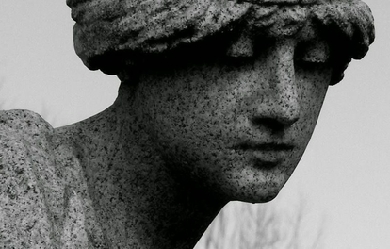
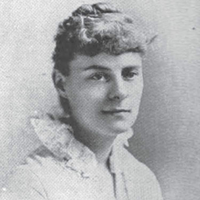
Lizette Woodworth Reese (January 9, 1856– December 17, 1935) was an American poet. Reese was born in the Waverly section of Baltimore, Maryland to Louisa Gabler and David Reese. She also had a twin sister named Sophia. Educated in Baltimore’s public schools, Reese graduated from Eastern High School (Baltimore), where a memorial for her stands today. After graduation, she became a school teacher at St. John’s Parish School in 1873. The following year, Reese published her first poem, “The Deserted House,” in Southern Magazine. She continued to publish in various magazines until her first self-published anthology, A Branch of May, in 1887. Subsequent books followed in 1891 and 1896, A Handful of Lavender and A Quiet Road, respectively. During the late 1890s and early 1900s, Reese wrote infrequently. However, her sonnet, “Tears,” published in Scribner’s Magazine in 1899, garnered her praise and recognition, particularly from fellow Baltimore writer, H. L. Mencken, who stated that Reese’s work was “one of the imperishable glories of American literature." In 1918, Reese retired from teaching after having worked her last few years at Western High School (Baltimore). In 1931, Reese was named poet laureate of Maryland by the General Federation of Women’s Clubs. She was also honorary president of thee Poetry Society of Maryland and co-founder of the Women’s Literary Club of Baltimore. Reese died on December 17, 1935. She is buried at the St. John’s Episcopal Church. After her death, Reese’s friend and sculptor, Grace Turnbull was commissioned to create a monument to her work. The marble statue, entitled “The Good Shepherd” stands on the old grounds of Eastern High School, Reese’s alma mater, in Waverly.

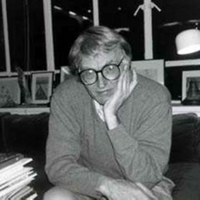
William Kilborn Knott (17 February 1940– 12 March 2014) was an American poet. Life Born in Carson City, Michigan, US, Knott received his MFA from Norwich University and studied with John Logan in Chicago. His first collection of poems, The Naomi Poems: Corpse and Beans, was published in 1968 under the name Saint Geraud, a fictional persona whose backstory included a suicide two years prior to the publishing. The Naomi Poems was well received and brought him to the attention of such poets as James Wright, who called him an “unmistakable genius.” Knott taught at Emerson College for more than 25 years, published many books of poetry, and was awarded the Iowa Poetry Prize and a Guggenheim fellowship. Work Early in his career, Knott was noted for writing unusually short poems, some as short as one line, and untitled. Later he became interested in metrical verse forms and syllabics. He was not a believer in poetic “branding” and throughout his career refused to restrict himself to one particular school or style of writing. His poetry’s subjects, themes and tones were also wide-ranging. His work often displayed a wry, self-deprecating sense of humor, and he was critical of what he saw as an epidemic of humorlessness in contemporary American poetry. Poets who cite him as an influence include Thomas Lux, Mary Karr, Stephen Dobyns, Denise Duhamel, and Denis Johnson. One of Johnson’s novels, Already Dead: A California Gothic, was inspired by Knott’s “Poem Noir.” Knott was also a visual artist, known for giving away booklets of his poetry with hand-painted covers. Bibliography * Books published by Bill Knott include: * The Naomi Poems: Book One: Corpse and Beans (1968), Follett, under the pseudonym 'St. Geraud’ * Aurealism: A Study (1969), Salt Mound Press. (chapbook) * Auto-Necrophilia; The _____ Poems, Book 2 (1971), Big Table Pub., ISBN 0-695-80188-0 * Nights of Naomi (1972), Big Table (chapbook) * Love Poems to Myself (1974), Barn Dream Press, Boston, OCLC 3709433 (chapbook) * Rome in Rome (1976), Release Press. * Selected and Collected Poems (1977), SUN * Becos (1983), Random House, ISBN 0-394-52924-3 * Outremer (1989), University of Iowa Press, ISBN 0-87745-255-5 * Poems 1963-1988 (1989), University of Pittsburgh Press, ISBN 0-8229-5416-8 * Collected Political Poems 1965-1993 (1993) Self-published chapbook * Sixty Poems of Love and Homage (1994) Self-published chapbook * The Quicken Tree (1995), Boa Editions, Hardcover ISBN 1-880238-24-1 Softcover ISBN 1-880238-25-X * Laugh at the End of the World: Collected Comic Poems 1969-1999 (2000), Boa Editions, ISBN 1-880238-84-5 * The Unsubscriber (2004), Farrar, Straus and Giroux, ISBN 0-374-53014-9 * Stigmata Errata Etcetera (2007), Saturnalia Books, ISBN 978-0-9754990-4-7 * He also collaborated on a novel with James Tate, Lucky Darryl (Release Press, 1977). ISBN 978-0913722107 References Wikipedia—https://en.wikipedia.org/wiki/Bill_Knott_(poet)
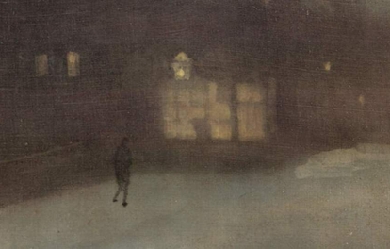
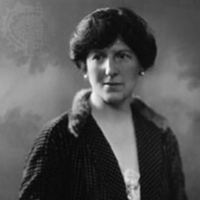
Alice Duer Miller (July 28, 1874– August 22, 1942) was an American writer whose poetry actively influenced political opinion. Her feminist verses impacted on the suffrage issue, while her verse-play The White Cliffs encouraged US entry into World War II. She also wrote novels and screenplays. Biography Alice Duer was born in New York City on July 28, 1874 into a wealthy family. She was the daughter of James Gore King Duer and Elizabeth Wilson Meads, the daughter of Orlando Meads of Albany, New York. Her great grandfather was William Alexander Duer, who was the president of Columbia College, 1829–1842. Her great great grandfather, was William Duer, an American lawyer, developer, and speculator from New York City. He had served in the Continental Congress and the convention that framed the New York Constitution. In 1778, he signed the United States Articles of Confederation. Her great great great grandfather was William Alexander, who claimed the disputed title of Earl of Stirling, and was an American Major-General during the American Revolutionary War. She was also a descendant of Senator Rufus King, who was an American lawyer, politician, and diplomat. He was a delegate for Massachusetts to the Continental Congress. He also attended the Constitutional Convention and was one of the signers of the United States Constitution on September 17, 1787, in Philadelphia, Pennsylvania. He represented New York in the United States Senate, served as Minister to Great Britain, and was the Federalist candidate for both Vice President (1804, 1808) and President of the United States (1816). At the time of her entrance into society, her family lost most of its fortune. She entered Barnard College in 1895 studying mathematics and astronomy. She helped to pay for her studies by selling novels and short essays. She and her sister, Caroline, jointly published a book of poems. Alice graduated in June 1899. On October 5, 1899, she married Henry Wise Miller at Grace Church Chapel in New York City. He was born in 1877, the son of Lt. Commander Jacob Miller, in Nice, France, where his father had been serving with the U.S. Navy. He was an 1892 graduate of Harvard University. They left for Costa Rica, where he attempted to develop rubber cultivation. This venture eventually failed and, in 1903, she, Miller and their young son returned to New York. She became known as a campaigner for women’s suffrage and published a brilliant series of satirical poems in the New York Tribune. These were published subsequently as Are Women People?. These words became a catchphrase of the suffrage movement. She followed this collection with Women Are People! (1917). As a novelist, she scored her first real success with Come Out of the Kitchen in 1916. The story was made into a play and later the 1948 film Spring in Park Lane. She followed it with a series of other short novels, many of which were staged and (increasingly) made into films. At about the same time, her husband began to make money on the Exchange and their money problems were over. Her marriage endured to the end of her life, but was not entirely tranquil. Her novel in verse Forsaking All Others (1933) about a tragic love affair, which many consider her greatest work, reflects this, though it is certainly not autobiographical. In the 1920s and 1930s, many of her stories were used for motion pictures, such as Are Parents People? (1925), Roberta (1935), and Irene (1940), taking her to Hollywood. She also became involved in a number of motion picture screenplays, including Wife vs. Secretary (1936). Her name appears in the very first issue of The New Yorker as an “advisory editor”. In 1940, she wrote the verse novel The White Cliffs, about an American girl who coming to London as a tourist, meets and marries a young upper-class Englishman in the period just before the First World War. The War begins and he goes to the front. He is killed just before the end of the War, leaving her with a young son. Her son is the heir to the family estate. Despite the pull of her own country and the impoverished condition of the estate, she decides to stay and live the traditional life of a member of the English upper class. The story concludes as The Second World War commences and she worries that her son, like his father, will be killed fighting for the country he loves. The poem ends with the lines: ...I am American bred I have seen much to hate here– much to forgive, But in a world in which England is finished and dead, I do not wish to live. The poem was spectacularly successful on both sides of the Atlantic, selling eventually approaching a million copies– an unheard of number for a book of verse. It was broadcast and recorded by British-American actress Lynn Fontanne (with a symphonic accompaniment), and the story was made into the 1944 film The White Cliffs of Dover, starring Irene Dunne. Like her earlier suffrage poems, it had a significant effect on American public opinion and it was one of the influences leading the United States to enter the War. Sir Walter Layton, who held positions in the Ministries of Supply and Munitions during the Second World War, even brought it to the attention of then-Prime Minister Winston Churchill. Death Alice Duer Miller died in 1942, and was interred at Evergreen Cemetery in Morristown, New Jersey.
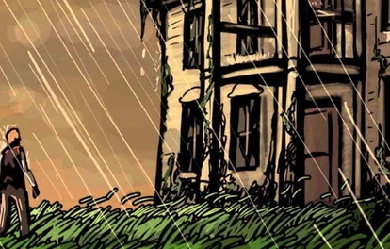
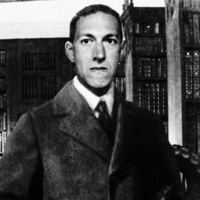
Howard Phillips Lovecraft (/ˈlʌvkræft, -ˌkrɑːft/; August 20, 1890– March 15, 1937) was an American author who achieved posthumous fame through his influential works of horror fiction. Virtually unknown and published only in pulp magazines before he died in poverty, he is now regarded as one of the most significant 20th-century authors in his genre. Lovecraft was born in Providence, Rhode Island, where he spent most of his life. Among his most celebrated tales are “The Call of Cthulhu” and “The Shadow over Innsmouth”, both canonical to the Cthulhu Mythos. Never able to support himself from earnings as author and editor, Lovecraft saw commercial success increasingly elude him in this latter period, partly because he lacked the confidence and drive to promote himself. He subsisted in progressively straitened circumstances in his last years; an inheritance was completely spent by the time he died at the age of 46. Early life Family Lovecraft was born on August 20, 1890, in his family home at 194 (later 456) Angell Street in Providence, Rhode Island (the house was demolished in 1961). He was the only child of Winfield Scott Lovecraft (1853–1898), a traveling salesman of jewelry and precious metals, and Sarah Susan Phillips Lovecraft (1857–1921), who could trace her ancestry to the Massachusetts Bay Colony in 1631. Both of his parents were of entirely English ancestry, and most of his ancestors had been in New England since the colonial period; his great-grandfather Joseph Lovecraft Jr. emigrated to Rochester, NY, from Devon, England, in 1831. In 1893, when Lovecraft was three, his father became acutely psychotic and was placed in the Providence psychiatric institution, Butler Hospital, where he remained until his death in 1898. H. P. Lovecraft maintained throughout his life that his father had died in a condition of paralysis brought on by “nervous exhaustion.” Although it has been suggested his father’s mental illness may have been caused by syphilis, neither the younger Lovecraft nor his mother (who also died in Butler Hospital) seem to have shown signs of being infected with the disease. After his father’s hospitalization, Lovecraft was raised by his mother, his two maternal aunts (Lillian Delora Phillips and Annie Emeline Phillips), and his maternal grandfather, Whipple Van Buren Phillips, an American businessman. All five resided together in the family home. Lovecraft was a prodigy, reciting poetry at the age of three, and writing complete poems by six. His grandfather encouraged his reading, providing him with classics such as One Thousand and One Nights, Thomas Bulfinch’s Age of Fable, and children’s versions of the Iliad and the Odyssey. His grandfather also stirred the boy’s interest in the weird by telling him his own original tales of gothic horror. Upbringing Lovecraft was frequently ill as a child. Because of his sickly condition, he barely attended school until he was eight years old, and then was withdrawn after a year. He read voraciously during this period and became especially enamored of chemistry and astronomy. He produced several hectographed publications with a limited circulation, beginning in 1899 with The Scientific Gazette. Four years later, he returned to public school at Hope High School. Beginning in his early life, Lovecraft is believed to have suffered from sleep paralysis, a form of parasomnia; he believed himself to be assaulted at night by horrific “night gaunts”. Much of his later work is thought to have been directly inspired by these terrors. (Indeed, “Night Gaunts” became the subject of a poem he wrote of the same name, in which they were personified as devil-like creatures without faces.) His grandfather’s death in 1904 greatly affected Lovecraft’s life. Mismanagement of his grandfather’s estate left his family in a poor financial situation, and they were forced to move into much smaller accommodations at 598 (now a duplex at 598–600) Angell Street. In 1908, prior to his high school graduation, he is said to have suffered what he later described as a “nervous breakdown”, and consequently never received his high school diploma (although he maintained for most of his life that he did graduate). S. T. Joshi suggests in his biography of Lovecraft that a primary cause for this breakdown was his difficulty in higher mathematics, a subject he needed to master to become a professional astronomer. Adulthood Reclusion The adult Lovecraft was gaunt with dark eyes set in a very pale face (he rarely went out before nightfall). For five years after leaving school, he lived an isolated existence with his mother, primarily writing poetry without seeking employment or new social contacts. This changed in 1913 when he wrote a letter to The Argosy, a pulp magazine, complaining about the insipidness of the love stories in the publication by writer Fred Jackson. The ensuing debate in the magazine’s letters column caught the eye of Edward F. Daas, president of the United Amateur Press Association (UAPA), who invited Lovecraft to join the organization in 1914. In April 1917, Lovecraft tried to join the National Guard, but did not pass the physical examination. Writing The UAPA reinvigorated Lovecraft and incited him to contribute many poems and essays; in 1916, his first published story, The Alchemist, appeared in the United Amateur Press Association. The earliest commercially published work came in 1922, when he was thirty-one. By this time he had begun to build what became a huge network of correspondents. His lengthy and frequent missives would make him one of the great letter writers of the century. Among his correspondents were Robert Bloch (Psycho), Clark Ashton Smith, and Robert E. Howard (Conan the Barbarian series). Many former aspiring authors later paid tribute to his mentoring and encouragement through the correspondence. His oeuvre is sometimes seen as consisting of three periods: an early Edgar Allan Poe influence; followed by a Lord Dunsany–inspired Dream Cycle; and finally the Cthulhu Mythos stories. However, many distinctive ideas and entities present in the third period were introduced in the earlier works, such as the 1917 story “Dagon”, and the threefold classification is partly overlapping. Death of mother In 1919, after suffering from hysteria and depression for a long period of time, Lovecraft’s mother was committed to Butler Hospital - the mental institution where her husband had died. Nevertheless, she wrote frequent letters to Lovecraft, and they remained close until her death on May 24, 1921, the result of complications from gallbladder surgery. Marriage and New York A few days after his mother’s death, Lovecraft attended a convention of amateur journalists in Boston, Massachusetts, where he met and became friendly with Sonia Greene, a widow and owner of a successful hat shop and seven years his senior. Lovecraft’s aunts disapproved of the relationship. Lovecraft and Greene married on March 3, 1924, and relocated to her Brooklyn apartment at 793 Flatbush Avenue; she thought he needed to get out of Providence in order to flourish and was willing to support him financially. Greene, who had been married before, later said Lovecraft had performed satisfactorily as a lover, though she had to take the initiative in all aspects of the relationship. She attributed Lovecraft’s passive nature to a stultifying upbringing by his mother. Lovecraft’s weight increased to 90 kg (200 lb) on his wife’s home cooking. He was enthralled by New York, and, in what was informally dubbed the Kalem Club, he acquired a group of encouraging intellectual and literary friends who urged him to submit stories to Weird Tales; editor Edwin Baird accepted many otherworldly 'Dream Cycle’ Lovecraft stories for the ailing publication, though they were heavily criticized by a section of the readership. Established informally some years before Lovecraft lived in New York, the core Kalem Club members were boys’ adventure novelist Henry Everett McNeil; the lawyer and anarchist writer James Ferdinand Morton, Jr.; and the poet Reinhardt Kleiner. On New Year’s Day of 1925, Sonia moved to Cleveland for a job opportunity, and Lovecraft left Flatbush for a small first-floor apartment on 169 Clinton Street “at the edge of Red Hook,” a location which came to discomfit him greatly. Later that year the Kalem Club’s four regular attendees were joined by Lovecraft along with his protégé Frank Belknap Long, bookseller George Willard Kirk, and Lovecraft’s close friend Samuel Loveman. Loveman was Jewish, but was unaware of Lovecraft’s nativist attitudes. Conversely, it has been suggested that Lovecraft, who disliked mention of sexual matters, was unaware that Loveman and some of his other friends were homosexual. Financial difficulties Not long after the marriage, Greene lost her business and her assets disappeared in a bank failure; she also became ill. Lovecraft made efforts to support his wife through regular jobs, but his lack of previous work experience meant he lacked proven marketable skills. After a few unsuccessful spells as a low level clerk, his job-seeking became desultory. The publisher of Weird Tales attempted to put the loss-making magazine on a business footing and offered the job of editor to Lovecraft, who declined, citing his reluctance to relocate to Chicago; “think of the tragedy of such a move for an aged antiquarian,” the 34-year-old writer declared. Baird was replaced with Farnsworth Wright, whose writing Lovecraft had criticized. Lovecraft’s submissions were often rejected by Wright. (This may have been partially due to censorship guidelines imposed in the aftermath of a Weird Tales story that hinted at necrophilia, although after Lovecraft’s death Wright accepted many of the stories he had originally rejected.) Brooklyn Greene, moving where the work was, relocated to Cincinnati, and then to Cleveland; her employment required constant travel. Added to the daunting reality of failure in a city with a large immigrant population, Lovecraft’s single room apartment at 169 Clinton Street in Brooklyn Heights, not far from the working class waterfront neighborhood Red Hook, was burgled, leaving him with only the clothes he was wearing. In August 1925 he wrote “The Horror at Red Hook” and “He”, in the latter of which the narrator says “My coming to New York had been a mistake; for whereas I had looked for poignant wonder and inspiration... I had found instead only a sense of horror and oppression which threatened to master, paralyze, and annihilate me”. It was at around this time he wrote the outline for “The Call of Cthulhu” with its theme of the insignificance of all humanity. In the bibliographical study H. P. Lovecraft: Against the World, Against Life, Michel Houellebecq suggested that the misfortunes fed Lovecraft’s central motivation as a writer, which he said was racial resentment. With a weekly allowance Greene sent, Lovecraft moved to a working class area of Brooklyn Heights where he subsisted in a tiny apartment. He had lost 40 pounds (18 kg) of bodyweight by 1926, when he left for Providence. Return to Providence Back in Providence, Lovecraft lived in a “spacious brown Victorian wooden house” at 10 Barnes Street until 1933. The same address is given as the home of Dr. Willett in Lovecraft’s The Case of Charles Dexter Ward. The period beginning after his return to Providence—the last decade of his life—was Lovecraft’s most prolific; in that time he produced short stories, as well as his longest work of fiction The Case of Charles Dexter Ward and At the Mountains of Madness. He frequently revised work for other authors and did a large amount of ghost-writing, including “The Mound”, “Winged Death”, “The Diary of Alonzo Typer”. Client Harry Houdini was laudatory, and attempted to help Lovecraft by introducing him to the head of a newspaper syndicate. Plans for a further project were ended by Houdini’s death. Although he was able to combine his distinctive style (allusive and amorphous description by horrified though passive narrators) with the kind of stock content and action that the editor of Weird Tales wanted—Wright paid handsomely to snap up “The Dunwich Horror” which proved very popular with readers—Lovecraft increasingly produced work that brought him no remuneration. Affecting a calm indifference to the reception of his works, Lovecraft was in reality extremely sensitive to criticism and easily precipitated into withdrawal. He was known to give up trying to sell a story after it had been once rejected. Sometimes, as with The Shadow Over Innsmouth (which included a rousing chase that supplied action) he wrote a story that might have been commercially viable, but did not try to sell it. Lovecraft even ignored interested publishers. He failed to reply when one inquired about any novel Lovecraft might have ready: although he had completed such a work, The Case of Charles Dexter Ward, it was never typed up. Last years Throughout his life, selling stories and paid literary work for others did not provide enough to cover Lovecraft’s basic expenses. Living frugally, he subsisted on an inheritance that was nearly depleted by the time of his last years. He sometimes went without food to afford the cost of mailing letters. Eventually, he was forced to move to smaller and meaner lodgings with his surviving aunt. He was also deeply affected by the suicide of his correspondent Robert E. Howard. In early 1937, Lovecraft was diagnosed with cancer of the small intestine, and suffered from malnutrition as a result. He lived in constant pain until his death on March 15, 1937, in Providence. In accordance with his lifelong scientific curiosity, he kept a diary of his illness until close to the moment of his death. Lovecraft was listed along with his parents on the Phillips family monument (41°51′14″N 71°22′52″W). That was not enough for his fans, who in 1977 raised the money to buy him a headstone of his own in Swan Point Cemetery, on which they had inscribed Lovecraft’s name, the dates of his birth and death, and the phrase “I AM PROVIDENCE”, a line from one of his personal letters. Groups of enthusiasts annually observe the anniversaries of Lovecraft’s death at Ladd Observatory and of his birth at his grave site. In July 2013, the Providence City Council designated the intersection of Angell and Prospect streets near the author’s former residences as “H. P. Lovecraft Memorial Square” and installed a commemorative sign. Appreciation Within genre According to Joyce Carol Oates, Lovecraft– as with Edgar Allan Poe in the 19th century– has exerted “an incalculable influence on succeeding generations of writers of horror fiction”. Horror, fantasy, and science fiction author Stephen King called Lovecraft “the twentieth century’s greatest practitioner of the classic horror tale.” King has made it clear in his semi-autobiographical non-fiction book Danse Macabre that Lovecraft was responsible for King’s own fascination with horror and the macabre, and was the single largest figure to influence his fiction writing. Literary Early efforts to revise an established literary view of Lovecraft as an author of 'pulp’ were resisted by some eminent critics; in 1945 Edmund Wilson expressed the opinion that “the only real horror in most of these fictions is the horror of bad taste and bad art”. But “Mystery and Adventure” columnist Will Cuppy of the New York Herald Tribune recommended to readers a volume of Lovecraft’s stories, asserting that “the literature of horror and macabre fantasy belongs with mystery in its broader sense.” In 2005 the status of classic American writer conferred by a Library of America edition was accorded to Lovecraft with the publication of Tales, a collection of his weird fiction stories. Philosophical Philosopher Graham Harman, seeing Lovecraft as having a unique—though implicit—anti-reductionalist ontology, says “No other writer is so perplexed by the gap between objects and the power of language to describe them, or between objects and the qualities they possess.” Harman said of leading figures at the initial speculative realism conference (which included philosophers Quentin Meillassoux, Ray Brassier, and Iain Hamilton Grant) that, though they shared no philosophical heroes, all were enthusiastic readers of Lovecraft. According to scholar S. T. Joshi: “There is never an entity in Lovecraft that is not in some fashion material”. Themes Several themes recur in Lovecraft’s stories: Forbidden knowledge Forbidden, dark, esoterically veiled knowledge is a central theme in many of Lovecraft’s works. Many of his characters are driven by curiosity or scientific endeavor, and in many of his stories the knowledge they uncover proves Promethean in nature, either filling the seeker with regret for what they have learned, destroying them psychically, or completely destroying the person who holds the knowledge. Some critics argue that this theme is a reflection of Lovecraft’s contempt of the world around him, causing him to search inwardly for knowledge and inspiration. Non-human influences on humanity The beings of Lovecraft’s mythos often have human servants; Cthulhu, for instance, is worshiped under various names by cults amongst both the Greenlandic Inuit and voodoo circles of Louisiana, and in many other parts of the world. These worshippers served a useful narrative purpose for Lovecraft. Many beings of the Mythos were too powerful to be defeated by human opponents, and so horrific that direct knowledge of them meant insanity for the victim. When dealing with such beings, Lovecraft needed a way to provide exposition and build tension without bringing the story to a premature end. Human followers gave him a way to reveal information about their “gods” in a diluted form, and also made it possible for his protagonists to win paltry victories. Lovecraft, like his contemporaries, envisioned “savages” as closer to supernatural knowledge unknown to civilized man. Inherited guilt Another recurring theme in Lovecraft’s stories is the idea that descendants in a bloodline can never escape the stain of crimes committed by their forebears, at least if the crimes are atrocious enough. Descendants may be very far removed, both in place and in time (and, indeed, in culpability), from the act itself, and yet, they may be haunted by the revenant past, e.g. “The Rats in the Walls”, “The Lurking Fear”, “Arthur Jermyn”, “The Alchemist”, “The Shadow Over Innsmouth”, “The Doom that Came to Sarnath” and The Case of Charles Dexter Ward. Fate Often in Lovecraft’s works the protagonist is not in control of his own actions, or finds it impossible to change course. Many of his characters would be free from danger if they simply managed to run away; however, this possibility either never arises or is somehow curtailed by some outside force, such as in “The Colour Out of Space” and “The Dreams in the Witch House”. Often his characters are subject to a compulsive influence from powerful malevolent or indifferent beings. As with the inevitability of one’s ancestry, eventually even running away, or death itself, provides no safety ("The Thing on the Doorstep", “The Outsider”, The Case of Charles Dexter Ward, etc.). In some cases, this doom is manifest in the entirety of humanity, and no escape is possible ("The Shadow Out of Time"). Civilization under threat Lovecraft was familiar with the work of the German conservative-revolutionary theorist Oswald Spengler, whose pessimistic thesis of the decadence of the modern West formed a crucial element in Lovecraft’s overall anti-modern worldview. Spenglerian imagery of cyclical decay is present in particular in At the Mountains of Madness. S. T. Joshi, in H. P. Lovecraft: The Decline of the West, places Spengler at the center of his discussion of Lovecraft’s political and philosophical ideas. Lovecraft wrote to Clark Ashton Smith in 1927: “It is my belief, and was so long before Spengler put his seal of scholarly proof on it, that our mechanical and industrial age is one of frank decadence”. Lovecraft was also acquainted with the writings of another German philosopher of decadence: Friedrich Nietzsche. Lovecraft frequently dealt with the idea of civilization struggling against dark, primitive barbarism. In some stories this struggle is at an individual level; many of his protagonists are cultured, highly educated men who are gradually corrupted by some obscure and feared influence. In such stories, the “curse” is often a hereditary one, either because of interbreeding with non-humans (e.g., “Facts Concerning the Late Arthur Jermyn and His Family” (1920), “The Shadow over Innsmouth” (1931)) or through direct magical influence (The Case of Charles Dexter Ward). Physical and mental degradation often come together; this theme of 'tainted blood’ may represent concerns relating to Lovecraft’s own family history, particularly the death of his father due to what Lovecraft must have suspected to be a syphilitic disorder. In other tales, an entire society is threatened by barbarism. Sometimes the barbarism comes as an external threat, with a civilized race destroyed in war (e.g., “Polaris”). Sometimes, an isolated pocket of humanity falls into decadence and atavism of its own accord (e.g., “The Lurking Fear”). But most often, such stories involve a civilized culture being gradually undermined by a malevolent underclass influenced by inhuman forces. It is likely that the “roaring twenties” left Lovecraft disillusioned as he was still obscure and struggling with the basic necessities of daily life, combined with seeing non-Western European immigrants in New York City. Race, ethnicity, and class Race is the most controversial aspect of Lovecraft’s works, and it comes across through many disparaging remarks against the various non-Anglo-Saxon races and cultures within his work. As he grew older, his original Anglo-Saxon racial worldview softened into a universal classism or elitism regarding any fellow human being of self-ennobled high culture as of metaphorical superior race. Lovecraft did not from the start hold all white people in uniform high regard, but rather he held English people and people of English descent, above all others. He praised and was positive about non-WASP groups such as Hispanics and Jewish people; however his private writings on groups such as Irish Catholics, German immigrants and African-Americans would be consistently negative. In 1912 Lovecraft wrote On the Creation of Niggers, whose subject the short poem described as not human but “beasts..in semi-human figure” who are “filled with vice...”. While his racist perspective is undeniable, many critics argue this does not detract from his ability to create compelling philosophical worlds which have inspired many artists and readers. In his early published essays, private letters and personal utterances, he argued for a strong color line, for the purpose of preserving race and culture. These arguments occurred through direct statements against different races in his journalistic work and personal correspondence, or perhaps allegorically in his work using non-human races. Some have interpreted his racial attitude as being more cultural than brutally biological: Lovecraft showed sympathy to others who pacifically assimilated into Western culture, to the extent of even marrying a Jewish woman whom he viewed as “well assimilated.” While Lovecraft’s racial attitude has been seen as directly influenced by the time, a reflection of the New England society he grew up in, his racism appeared stronger than the popular viewpoints held at that time. Some researchers also note that his views failed to change in the face of increased social change of that time. Risks of a scientific era At the turn of the 20th century, humanity’s increased reliance upon science was both opening new worlds and solidifying the manners by which he could understand them. Lovecraft portrays this potential for a growing gap of man’s understanding of the universe as a potential for horror. Most notably in “The Colour Out of Space”, the inability of science to comprehend a contaminated meteorite leads to horror. In a letter to James F. Morton in 1923, Lovecraft specifically points to Einstein’s theory on relativity as throwing the world into chaos and making the cosmos a jest; in a letter to Woodburn Harris in 1929, he speculates that technological comforts risk the collapse of science. Indeed, at a time when men viewed science as limitless and powerful, Lovecraft imagined alternative potential and fearful outcomes. In “The Call of Cthulhu”, Lovecraft’s characters encounter architecture which is “abnormal, non-Euclidean, and loathsomely redolent of spheres and dimensions apart from ours”. Non-Euclidean geometry is the mathematical language and background of Einstein’s general theory of relativity, and Lovecraft references it repeatedly in exploring alien archaeology. Religion Lovecraft’s works are ruled by several distinct pantheons of deities (actually aliens worshiped as such by humans) who are either indifferent or actively hostile to humanity. Lovecraft’s actual philosophy has been termed “cosmic indifference” and this is expressed in his fiction. Several of Lovecraft’s stories of the Old Ones (alien beings of the Cthulhu Mythos) propose alternate mythic human origins in contrast to those found in the creation stories of existing religions, expanding on a natural world view. For instance, in Lovecraft’s “At the Mountains of Madness” it is proposed that humankind was actually created as a slave race by the Old Ones, and that life on Earth as we know it evolved from scientific experiments abandoned by the Elder Things. Protagonist characters in Lovecraft are usually educated men, citing scientific and rationalist evidence to support their non-faith. “Herbert West–Reanimator” reflects on the atheism common within academic circles. In “The Silver Key”, the character Randolph Carter loses the ability to dream and seeks solace in religion, specifically Congregationalism, but does not find it and ultimately loses faith. Lovecraft himself adopted the stance of atheism early in his life. In 1932, he wrote in a letter to Robert E. Howard: “All I say is that I think it is damned unlikely that anything like a central cosmic will, a spirit world, or an eternal survival of personality exist. They are the most preposterous and unjustified of all the guesses which can be made about the universe, and I am not enough of a hairsplitter to pretend that I don’t regard them as arrant and negligible moonshine. In theory, I am an agnostic, but pending the appearance of radical evidence I must be classed, practically and provisionally, as an atheist.” Superstition In 1926, famed magician and escapist Harry Houdini asked Lovecraft to ghostwrite a treatise exploring the topic of superstition. Houdini’s unexpected death later that year halted the project, but The Cancer of Superstition was partially completed by Lovecraft along with collaborator C. M. Eddy, Jr. A previously unknown manuscript of the work was discovered in 2016 in a collection owned by a magic shop. The book states “all superstitious beliefs are relics of a common 'prehistoric ignorance’ in humans,” and goes on to explore various superstitious beliefs in different cultures and times. Influences on Lovecraft Some of Lovecraft’s work was inspired by his own nightmares. His interest started from his childhood days when his grandfather would tell him Gothic horror stories. Lovecraft’s most significant literary influence was Edgar Allan Poe. He had a British writing style due to his love of British literature. Like Lovecraft, Poe’s work was out of step with the prevailing literary trends of his era. Both authors created distinctive, singular worlds of fantasy and employed archaisms in their writings. This influence can be found in such works as his novella The Shadow Over Innsmouth where Lovecraft references Poe’s story The Imp of the Perverse by name in Chapter 3, and in his poem “Nemesis”, where the “... ghoul-guarded gateways of slumber” suggest the “... ghoul-haunted woodland of Weir” found in Poe’s “Ulalume”. A direct quote from the poem and a reference to Poe’s only novel The Narrative of Arthur Gordon Pym of Nantucket is alluded to in Lovecraft’s magnum opus At the Mountains of Madness. Both authors shared many biographical similarities as well, such as the loss of their fathers at young ages and an early interest in poetry. He was influenced by Arthur Machen’s carefully constructed tales concerning the survival of ancient evil into modern times in an otherwise realistic world and his beliefs in hidden mysteries which lay behind reality. Lovecraft was also influenced by authors such as Oswald Spengler and Robert W. Chambers. Chambers was the writer of The King in Yellow, of whom Lovecraft wrote in a letter to Clark Ashton Smith: “Chambers is like Rupert Hughes and a few other fallen Titans– equipped with the right brains and education but wholly out of the habit of using them”. Lovecraft’s discovery of the stories of Lord Dunsany, with their pantheon of mighty gods existing in dreamlike outer realms, moved his writing in a new direction, resulting in a series of imitative fantasies in a “Dreamlands” setting. Lovecraft also cited Algernon Blackwood as an influence, quoting The Centaur in the head paragraph of “The Call of Cthulhu”. He declared Blackwood’s story “The Willows” to be the single best piece of weird fiction ever written. Another inspiration came from a completely different source: scientific progress in biology, astronomy, geology, and physics. His study of science contributed to Lovecraft’s view of the human race as insignificant, powerless, and doomed in a materialistic and mechanistic universe. Lovecraft was a keen amateur astronomer from his youth, often visiting the Ladd Observatory in Providence, and penning numerous astronomical articles for local newspapers. His astronomical telescope is now housed in the rooms of the August Derleth Society. Lovecraft’s materialist views led him to espouse his philosophical views through his fiction; these philosophical views came to be called cosmicism. Cosmicism took on a dark tone with his creation of what is today often called the Cthulhu Mythos, a pantheon of alien extra-dimensional deities and horrors which predate humanity, and which are hinted at in eons-old myths and legends. The term “Cthulhu Mythos” was coined by Lovecraft’s correspondent and fellow author, August Derleth, after Lovecraft’s death; Lovecraft jocularly referred to his artificial mythology as “Yog-Sothothery”. Lovecraft considered himself a man best suited to the early 18th century. His writing style, especially in his many letters, owes much to Augustan British writers of the Enlightenment like Joseph Addison and Jonathan Swift. Among the books found in his library (as evidenced in Lovecraft’s Library by S. T. Joshi) was The Seven Who Were Hanged by Leonid Andreyev and A Strange Manuscript Found in a Copper Cylinder by James De Mille. Lovecraft’s style has often been criticized by unsympathetic critics, yet scholars such as S. T. Joshi have shown that Lovecraft consciously utilized a variety of literary devices to form a unique style of his own– these include conscious archaism, prose-poetic techniques combined with essay-form techniques, alliteration, anaphora, crescendo, transferred epithet, metaphor, symbolism, and colloquialism. Influence on culture Lovecraft was relatively unknown during his own time. While his stories appeared in the pages of prominent pulp magazines such as Weird Tales (eliciting letters of outrage as often as letters of praise from regular readers of the magazines), not many people knew his name. He did, however, correspond regularly with other contemporary writers, such as Clark Ashton Smith and August Derleth, people who became good friends of his, even though they never met in person. This group of writers became known as the “Lovecraft Circle”, since they all freely borrowed elements of Lovecraft’s stories– the mysterious books with disturbing names, the pantheon of ancient alien entities, such as Cthulhu and Azathoth, and eldritch places, such as the New England town of Arkham and its Miskatonic University– for use in their own works with Lovecraft’s encouragement. After Lovecraft’s death, the Lovecraft Circle carried on. August Derleth in particular added to and expanded on Lovecraft’s vision. However, Derleth’s contributions have been controversial. While Lovecraft never considered his pantheon of alien gods more than a mere plot device, Derleth created an entire cosmology, complete with a war between the good Elder Gods and the evil Outer Gods, such as Cthulhu and his ilk. The forces of good were supposed to have won, locking Cthulhu and others up beneath the earth, in the ocean, and so forth. Derleth’s Cthulhu Mythos stories went on to associate different gods with the traditional four elements of fire, air, earth and water—an artificial constraint which required rationalizations on Derleth’s part as Lovecraft himself never envisioned such a scheme. Lovecraft’s fiction has been grouped into three categories by some critics. While Lovecraft did not refer to these categories himself, he did once write: “There are my 'Poe’ pieces and my 'Dunsany pieces’—but alas—where are any Lovecraft pieces?” Macabre stories (c. 1905–1920); Dream Cycle stories (c. 1920–1927); Cthulhu / Lovecraft Mythos stories (c. 1925–1935). Lovecraft’s writing, particularly the so-called Cthulhu Mythos, has influenced fiction authors including modern horror and fantasy writers. Stephen King, Ramsey Campbell, Bentley Little, Joe R. Lansdale, Alan Moore, Junji Ito, F. Paul Wilson, Brian Lumley, Caitlín R. Kiernan, William S. Burroughs, and Neil Gaiman, have cited Lovecraft as one of their primary influences. Beyond direct adaptation, Lovecraft and his stories have had a profound impact on popular culture. Some influence was direct, as he was a friend, inspiration, and correspondent to many of his contemporaries, such as August Derleth, Robert E. Howard, Robert Bloch and Fritz Leiber. Many later figures were influenced by Lovecraft’s works, including author and artist Clive Barker, prolific horror writer Stephen King, comics writers Alan Moore, Neil Gaiman and Mike Mignola, English author Colin Wilson, film directors John Carpenter, Stuart Gordon, Guillermo Del Toro and artist H. R. Giger. Japan has also been significantly inspired and terrified by Lovecraft’s creations and thus even entered the manga and anime media. Chiaki J. Konaka is an acknowledged disciple and has participated in Cthulhu Mythos, expanding several Japanese versions. He is an anime scriptwriter who tends to add elements of cosmicism, and is credited for spreading the influence of Lovecraft among anime base. Along with Junji Ito, other influential manga artists have also been inspired by Lovecraft. Novelist and manga author, Hideyuki Kikuchi, incorporated a number of locations, beings and events from the works of Lovecraft into the manga Taimashin. Argentine writer Jorge Luis Borges wrote his short story “There Are More Things” in memory of Lovecraft. Contemporary French writer Michel Houellebecq wrote a literary biography of Lovecraft called H. P. Lovecraft: Against the World, Against Life. Prolific American writer Joyce Carol Oates wrote an introduction for a collection of Lovecraft stories. The Library of America published a volume of Lovecraft’s work in 2005, a reversal of traditional judgment that “has been nothing so far from the accepted canon as Lovecraft”. French philosophers Gilles Deleuze and Félix Guattari refer to Lovecraft in A Thousand Plateaus, calling the short story “Through the Gates of the Silver Key” one of his masterpieces. Music Lovecraft’s fictional Mythos has influenced a number of musicians. The psychedelic rock band H. P. Lovecraft (who shortened their name to Lovecraft and then Love Craft in the 1970s) released the albums H. P. Lovecraft and H. P. Lovecraft II in 1967 and 1968 respectively; their titles included “The White Ship” and “At the Mountains of Madness”, both titled after Lovecraft stories. Metallica recorded a song inspired by “The Call of Cthulhu”, an instrumental titled “The Call of Ktulu”, and another song based on The Shadow Over Innsmouth titled “The Thing That Should Not Be”, and another based on Frank Belknap Long’s “The Hounds of Tindalos”, titled “All Nightmare Long”. Progressive metal band Dream Theater’s song “The Dark Eternal Night” is based on Lovecraft’s story “Nyarlathotep”. Black Sabbath’s “Behind the Wall of Sleep” appeared on their 1970 debut album and is based on Lovecraft’s short story “Beyond the Wall of Sleep”. The Darkest of the Hillside Thickets entire repertoire is Lovecraft-based. Melodic death metal band The Black Dahlia Murder produced “Throne of Lunacy” and “Thy Horror Cosmic” based on the Cthulhu Mythos. UK anarcho-punk band Rudimentary Peni make repeated references in their song titles, lyrics and artwork, including in the album Cacophony, all 30 songs of which are inspired by the life and writings of Lovecraft. In the Iron Maiden album Live After Death, the band mascot, Eddie, is rising from a grave inscribed with the name “H. P. Lovecraft” and a quotation from The Nameless City: “That is not dead which can eternal lie yet with strange aeons even death may die.” German metal group Mekong Delta made an album called The Music of Erich Zann. Band leader and composer Les Baxter provided a melodic, electronic-influenced score for the movie version of The Dunwich Horror which has proved to be much more appreciated than the film itself and has been reissued several times, mostly on vinyl. “You’re So Dark”, B-side from AM’s “One For The Road”, by Arctic Monkeys, mentions Lovecraft as one of the authors of the “dark” culture along with Edgar Alan Poe. Heavy metal band Mercyful Fate produced "The Mad Arab (Part 1)" and "Kutulu (The Mad Arab Part 2)" on albums “Time” and “Into The Unknown” based on Abdul Alhazred, the “Mad Arab” who created the Necronomicon in the Lovecraft universe. New Zealand Jazz musician Reuben Bradley’s 2015 album with Taylor Eigsti and Matt Penman, titled “Cthulhu Rising”, programmatically recounts a Lovecraft story for each of its tracks. Iced Earth’s “Cthulhu” appeared on their 2014 album “Plagues of Babylon” The American death metal band Cemetery Filth recorded the Song “Dagonian Dialect” based on Lovecraft’s early short story “Dagon” for the “Four Doors to Death” split compilation in 2016. The technical death metal band Nile have recorded many songs inspired by Lovecraft. The french electronic music artist Carpenter Brut’s 2015 album’s first track “Escape from Midwich Valley” has a music video which is based on Lovecraft’s “The Shadow Over Innsmouth”. Games Lovecraft has also influenced gaming. Chaosium’s role-playing game Call of Cthulhu (currently in its seventh major edition) has been in print for 30 years. The tabletop games Arkham Horror, Eldritch Horror, Mansions of Madness and Elder Sign include some themes derived from the Call of Cthulhu RPG. Three collectible card games are Mythos, Call of Cthulhu: The Living Card Game, and the upcoming Arkham Horror: The Card Game. With the rise in popularity of tabletop gaming, many other Lovecraft-themed games have been produced, for example (note that this is not an exhaustive list; it is a small selection from better-known designers and publishers): Cthulhu Fluxx (Looney Labs) by Keith Baker with art by Derek Ring. This is a Lovecraft-themed version of the Fluxx series of games. Cthulhu Gloom (Atlas Games) by Keith Baker with art by Todd Remick. This is a Lovecraft-themed version of the Gloom series of games. Cthulhu Realms (Tasty Minstrel Games) by Darwin Kastle. Cthulhu Wars (Green Eye Games/Petersen Games) by Sandy Petersen, original writer of the Call of Cthulhu RPG, and art by Richard Luong. The Doom that Came to Atlantic City (Cryptozoic Entertainment) by Lee Moyer and Keith Baker, with miniatures by sculptor Paul Komoda. Kingsport Festival (Passport Game Studios) by Andrea Chiarvesio and Gianluca Santopietro. Based thematically on Lovecraft’s The Festival and his fictional town of Kingsport from The Terrible Old Man. Munchkin Cthulhu (Steve Jackson Games) by J. H. G. Hendricks and Steve Jackson. This is a Lovecraft-themed version of the Munchkin series of games. The Stars are Right (Steve Jackson Games) by Klaus Westerhoff, with art by François Launet. Several video games are based on or influenced heavily by Lovecraft such as Call of Cthulhu: Dark Corners of the Earth, Quest for Glory IV: Shadows of Darkness, Shadow of the Comet, The Lurking Horror, Prisoner of Ice, Shadowman, Alone in the Dark, Chzo Mythos, Eternal Darkness: Sanity’s Requiem, Cthulhu Saves the World, Sherlock Holmes: The Awakened, Amnesia: The Dark Descent, Amnesia: A Machine For Pigs, Castlevania: Symphony of the Night, Bloodborne, Darkest Dungeon, Fallout 3, Dead Space, Terraria, Splatterhouse, Darkness Within: In Pursuit of Loath Nolder, Darkness Within 2: The Dark Lineage, Penumbra, Blood, The Last Door, the Megami Tensei franchise, the Mass Effect series, Shadow Hearts and Quake. The MMORPG The Secret World is heavily based on Lovecraftian lore. In The Elder Scrolls V: Skyrim– Dragonborn. the Daedric Prince Hermaeus Mora and his realm of Oblivion, Apocrypha, are both heavily influenced by Lovecraft. The Old Gods featured in Blizzard Entertainment’s Warcraft franchise are heavily influenced by Lovecraft’s works. For example, the Old Gods C’Thun and Yogg-Saron have names that are very similar to Cthulhu and Yog-Sothoth, respectively. Lovecraft as a character in fiction Aside from his thinly veiled appearance in Robert Bloch’s “The Shambler from the Stars”, Lovecraft continues to be used as a character in supernatural fiction. An early version of Ray Bradbury’s “The Exiles” uses Lovecraft as a character, who makes a brief, 600-word appearance eating ice cream in front of a fire and complaining about how cold he is. Lovecraft and some associates are included at length in Robert Anton Wilson and Robert Shea’s The Illuminatus! Trilogy (1975). Lovecraft makes an appearance as a rotting corpse in The Chinatown Death Cloud Peril by Paul Malmont, a novel with fictionalized versions of a number of period writers. Other notable works with Lovecraft as a character include Richard Lupoff’s Lovecraft’s Book (1985), Cast a Deadly Spell (1991), H.P. Lovecraft’s: Necronomicon (1993), Witch Hunt (1994), Out of Mind: The Stories of H. P. Lovecraft (1998), Stargate SG-1: Roswell (2007), and Alan Moore’s comic Providence (2015–16). Lovecraft also appears in the Season 6, Episode 21 episode “Let it Bleed” of the TV show Supernatural. A satirical version of Lovecraft named “H. P. Hatecraft” appeared as a recurring character on the Cartoon Network television series Scooby-Doo! Mystery Incorporated. A character based on Lovecraft also appears in the visual novel Shikkoku no Sharnoth: What a Beautiful Tomorrow, under the name “Howard Phillips” (or “Mr. Howard” to most of the main characters).. Another character based on Lovecraft appears in Afterlife with Archie. He appears as a minor character in Brian Clevinger’s comic book series Atomic Robo, as an acquantance and fellow-scientist of Nikola Tesla, having been driven insane by his involvement in the Tunguska Event which exposed him to the hidden horrors of the wider universe. He is eventually killed when his body becomes host to an extradimensional being infecting the timestream. Editions and collections of Lovecraft’s work For most of the 20th century, the definitive editions (specifically At the Mountains of Madness and Other Novels, Dagon and Other Macabre Tales, The Dunwich Horror and Others, and The Horror in the Museum and Other Revisions) of his prose fiction were published by Arkham House, a publisher originally started with the intent of publishing the work of Lovecraft, but which has since published a considerable amount of other literature as well. Penguin Classics has at present issued three volumes of Lovecraft’s works: The Call of Cthulhu and Other Weird Stories, The Thing on the Doorstep and Other Weird Stories, and most recently The Dreams in the Witch House and Other Weird Stories. They collect the standard texts as edited by S. T. Joshi, most of which were available in the Arkham House editions, with the exception of the restored text of “The Shadow Out of Time” from The Dreams in the Witch House, which had been previously released by small-press publisher Hippocampus Press. In 2005 the prestigious Library of America canonized Lovecraft with a volume of his stories edited by Peter Straub, and Random House’s Modern Library line have issued the “definitive edition” of Lovecraft’s At the Mountains of Madness (also including “Supernatural Horror in Literature”). Lovecraft’s poetry is collected in The Ancient Track: The Complete Poetical Works of H. P. Lovecraft (Night Shade Books, 2001), while much of his juvenilia, various essays on philosophical, political and literary topics, antiquarian travelogues, and other things, can be found in Miscellaneous Writings (Arkham House, 1989). Lovecraft’s essay “Supernatural Horror in Literature”, first published in 1927, is a historical survey of horror literature available with endnotes as The Annotated Supernatural Horror in Literature. Letters Although Lovecraft is known mostly for his works of weird fiction, the bulk of his writing consists of voluminous letters about a variety of topics, from weird fiction and art criticism to politics and history. Lovecraft’s biographer L. Sprague de Camp estimates that Lovecraft wrote 100,000 letters in his lifetime, a fifth of which are believed to survive. He sometimes dated his letters 200 years before the current date, which would have put the writing back in U.S. colonial times, before the American Revolution (a war that offended his Anglophilia). He explained that he thought that the 18th and 20th centuries were the “best”, the former being a period of noble grace, and the latter a century of science. Lovecraft was not an active letter-writer in youth. In 1931 he admitted: “In youth I scarcely did any letter-writing—thanking anybody for a present was so much of an ordeal that I would rather have written a two hundred fifty-line pastoral or a twenty-page treatise on the rings of Saturn.” (SL 3.369–70). The initial interest in letters stemmed from his correspondence with his cousin Phillips Gamwell but even more important was his involvement in the amateur journalism movement, which was initially responsible for the enormous number of letters Lovecraft produced. Despite his light letter-writing in youth, in later life his correspondence was so voluminous that it has been estimated that he may have written around 30,000 letters to various correspondents, a figure which places him second only to Voltaire as an epistolarian. Lovecraft’s later correspondence is primarily to fellow weird fiction writers, rather than to the amateur journalist friends of his earlier years. Lovecraft clearly states that his contact to numerous different people through letter-writing was one of the main factors in broadening his view of the world: “I found myself opened up to dozens of points of view which would otherwise never have occurred to me. My understanding and sympathies were enlarged, and many of my social, political, and economic views were modified as a consequence of increased knowledge.” (SL 4.389). Today there are five publishing houses that have released letters from Lovecraft, most prominently Arkham House with its five-volume edition Selected Letters. (Those volumes, however, severely abridge the letters they contain). Other publishers are Hippocampus Press (Letters to Alfred Galpin et al.), Night Shade Books (Mysteries of Time and Spirit: The Letters of H. P. Lovecraft and Donald Wandrei et al..), Necronomicon Press (Letters to Samuel Loveman and Vincent Starrett et al.), and University of Tampa Press (O Fortunate Floridian: H. P. Lovecraft’s Letters to R. H. Barlow). S.T. Joshi is supervising an ongoing series of volumes collecting Lovecraft’s unabridged letters to particular correspondents. “Lord of a Visible World: An Autobiography in Letters” was published in 2000, in which his letters are arranged according to themes, such as adolescence and travel. Copyright Despite several claims to the contrary, there is currently no evidence that any company or individual owns the copyright to any of Lovecraft’s work, and it is generally accepted that it has passed into the public domain. There has been controversy over the copyright status of many of Lovecraft’s works, especially his later works. Lovecraft had specified that the young R. H. Barlow would serve as executor of his literary estate, but these instructions had not been incorporated into his will. Nevertheless his surviving aunt carried out his expressed wishes, and Barlow was given charge of the massive and complex literary estate upon Lovecraft’s death. Barlow deposited the bulk of the papers, including the voluminous correspondence, with the John Hay Library, and attempted to organize and maintain Lovecraft’s other writing. August Derleth, an older and more established writer than Barlow, vied for control of the literary estate. One result of these conflicts was the legal confusion over who owned what copyrights. All works published before 1923 are public domain in the U.S. However, there is some disagreement over who exactly owns or owned the copyrights and whether the copyrights apply to the majority of Lovecraft’s works published post-1923. Questions center over whether copyrights for Lovecraft’s works were ever renewed under the terms of the United States Copyright Act of 1976 for works created prior to January 1, 1978. The problem comes from the fact that before the Copyright Act of 1976 the number of years a work was copyrighted in the U.S. was based on publication rather than life of the author plus a certain number of years and that it was good for only 28 years. After that point, a new copyright had to be filed, and any work that did not have its copyright renewed fell into the public domain. The Copyright Act of 1976 retroactively extended this renewal period for all works to a period of 47 years and the Sonny Bono Copyright Term Extension Act of 1998 added another 20 years to that, for a total of 95 years from publication. If the works were renewed, the copyrights would still be valid in the United States. The European Union Copyright Duration Directive of 1993 extended the copyrights to 70 years after the author’s death. So, all works of Lovecraft published during his lifetime, became public domain in all 27 European Union countries on January 1, 2008. In those Berne Convention countries who have implemented only the minimum copyright period, copyright expires 50 years after the author’s death. Lovecraft protégés and part owners of Arkham House, August Derleth and Donald Wandrei, often claimed copyrights over Lovecraft’s works. On October 9, 1947, Derleth purchased all rights to Weird Tales. However, since April 1926 at the latest, Lovecraft had reserved all second printing rights to stories published in Weird Tales. Hence, Weird Tales may only have owned the rights to at most six of Lovecraft’s tales. Again, even if Derleth did obtain the copyrights to Lovecraft’s tales, no evidence as yet has been found that the copyrights were renewed. Following Derleth’s death in 1971, his attorney proclaimed that all of Lovecraft’s literary material was part of the Derleth estate and that it would be "[protected] to the fullest extent possible.” S. T. Joshi concludes in his biography, H. P. Lovecraft: A Life, that Derleth’s claims are “almost certainly fictitious” and that most of Lovecraft’s works published in the amateur press are most likely now in the public domain. The copyright for Lovecraft’s works would have been inherited by the only surviving heir of his 1912 will: Lovecraft’s aunt, Annie Gamwell. Gamwell herself perished in 1941 and the copyrights then passed to her remaining descendants, Ethel Phillips Morrish and Edna Lewis. Morrish and Lewis then signed a document, sometimes referred to as the Morrish-Lewis gift, permitting Arkham House to republish Lovecraft’s works but retaining the copyrights for themselves. Searches of the Library of Congress have failed to find any evidence that these copyrights were then renewed after the 28-year period and hence, it is likely that these works are now in the public domain. Chaosium, publishers of the Call of Cthulhu role-playing game, have a trademark on the phrase “The Call of Cthulhu” for use in game products. TSR, Inc., original publisher of the Advanced Dungeons & Dragons role-playing game, included a section on the Cthulhu Mythos in one of the game’s earlier supplements, Deities & Demigods (originally published in 1980 and later renamed to "Legends & Lore"). TSR later agreed to remove this section at Chaosium’s request. In 2009, Lovecraft Holdings, LLC, a company based out of Providence, filed trademark claims for clothing graphics of Lovecraft’s name and silhouette. Regardless of the legal disagreements surrounding Lovecraft’s works, Lovecraft himself was extremely generous with his own works and encouraged others to borrow ideas from his stories and build on them, particularly with regard to his Cthulhu Mythos. He encouraged other writers to reference his creations, such as the Necronomicon, Cthulhu and Yog-Sothoth. After his death, many writers have contributed stories and enriched the shared mythology of the Cthulhu Mythos, as well as making numerous references to his work. World Fantasy Award and H. P. Lovecraft controversy In 1984, writer Donald Wandrei caused some controversy after he was offered a World Fantasy Award for Life Achievement but refused to accept it because the award was a bust of H. P. Lovecraft that he felt looked more like a caricature of Lovecraft than an actual representation. In August 2014, author Daniel José Older started a petition to change the World Fantasy Award statuette from a bust of Lovecraft to one of African-American author Octavia Butler. Kevin J. Maroney, editor of the The New York Review of Science Fiction, also supported the call for the WFA to be changed from Lovecraft’s face, suggesting it be replaced with a symbol representing the fantasy genre. Maroney argued this should be done “not out of disrespect for Lovecraft as a writer or as a central figure in fantasy, but as a courtesy to generations of writers whom the WFA hopes to honor.” In response to the campaign, the board of the World Fantasy Awards announced in September 2014 that it was "in discussion’ about the future of the award statuette., and in November 2015 it was announced that the World Fantasy Award trophy would no longer be modeled on H. P. Lovecraft. Locations featured in Lovecraft stories Lovecraft drew extensively from his native New England for settings in his fiction. Numerous real historical locations are mentioned, and several fictional New England locations make frequent appearances. Historical Pascoag, Rhode Island, in “The Horror at Red Hook”. Chepachet, Rhode Island, in “The Horror at Red Hook”. Binger, Caddo County, Oklahoma, in “The Mound”. Copp’s Hill, Boston, Massachusetts Red Line Pawtuxet (now Cranston, Rhode Island). Newburyport, Massachusetts Ipswich, Massachusetts Dunedin, New Zealand Ayer, Massachusetts Bolton, Massachusetts Salem, Massachusetts Brattleboro, Vermont Albany, New York Many locations within his hometown of Providence, Rhode Island, including the (then purportedly haunted) Halsey House, Prospect Terrace and Brown University’s John Hay Library and John Carter Brown Library. Danvers State Hospital, in Danvers, Massachusetts, which is largely believed to have served as inspiration for the infamous Arkham sanatorium from “The Thing on the Doorstep”. Catskill Mountains, New York. New York City, New York. Mainalo Mountain, Arcadia, Greece. Tegea, Arcadia, Greece. Kilderry, Ireland. Nome, Alaska Noatak, Alaska Fort Morton, Alaska, in “The Horror in the Museum”. New Orleans, Louisiana (and a mention of Tulane University) in “The Call of Cthulhu”. Newport, Rhode Island Paterson, New Jersey, in “The Call of Cthulhu”. Mammoth Cave, Kentucky, in “The Beast in the Cave”. Oslo, Norway, in “The Call of Cthulhu”. Fictional locations Miskatonic University in the fictional Arkham, Massachusetts. Dunwich, Massachusetts. Innsmouth, Massachusetts. Kingsport, Massachusetts. Aylesbury, Massachusetts. Martin’s Beach The Miskatonic River. The fictional Central University Library at the real University of Buenos Aires in Buenos Aires, Argentina. According to Lovecraft, there is a copy of the Necronomicon here, but the University of Buenos Aires has never had a “central” library. The sunken city of R’lyeh. Bibliography Documentary video and audio biographies * Lovecraft: Fear of the Unknown (2008). * Weird Tales: The Strange Life of H. P. Lovecraft (2006). References Wikipedia—https://en.wikipedia.org/wiki/H._P._Lovecraft
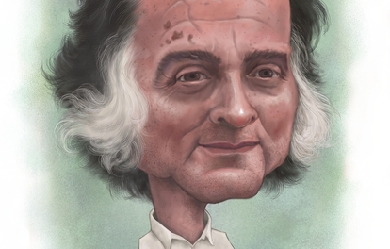
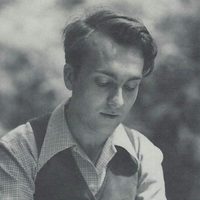
Robert Edward Duncan (January 7, 1919 in Oakland, California– February 3, 1988) was an American poet and a devotee of H.D. and the Western esoteric tradition who spent most of his career in and around San Francisco. Though associated with any number of literary traditions and schools, Duncan is often identified with the poets of the New American Poetry and Black Mountain College. Duncan saw his work as emerging especially from the tradition of Pound, Williams and Lawrence. Duncan was a key figure in the San Francisco Renaissance.


